An investigation into the Personal Financial Literacy of
Cryptocurrency users.
Submitted in partial fulfilment of the requirements for the degree of
BACHELOR OF COMMERCE HONOURS
In
Information Systems
(FACULTY OF COMMERCE)
RHODES UNIVERSITY
by
ALYSSA SHAWNTAY WILLIAMS
2019
Department: Information Systems
Address: Rhodes University, P.O Box 94, Grahamstown, 6140
Email: g11w3735@campus.ru.ac.za
Telephone: 073 493 5444
Supervisor: Ed de la Rey
Department: Information Systems
Address: Rhodes University, P.O Box 94, Grahamstown, 6140
Email: E.delaRey@ru.ac.za
Telephone: 046 603 8375
� An investigation into the Personal Financial Literacy of Cryptocurrency users.
by
ALYSSA SHAWNTAY WILLIAMS
SUPERVISOR: MR ED DE LA REY
DEPARTMENT: DEPARTMENT OF INFORMATION SYSTEMS
FACULTY: FACULTY OF COMMERCE, RHODES UNIVERSITY
DEGREE: BACHELOR OF COMMERCE HONOURS
ABSTRACT
The purpose of the study is to determine the level of financial literacy among cryptocurrency
users. In this study, a survey instrument that included 36 items that measure constructs such as
general financial knowledge, financial behaviour, and financial attitudes was administered to
32 cryptocurrency users. The data was collected by means of convenience sampling and results
were analysed using descriptive statistics. It was found that all individual knowledge variables
had a positive impact on the financial knowledge construct. The same was observed for all
individual attitude and all individual behaviour variables which were observed to have a
positive impact on the financial attitude construct and financial behavior construct respectively.
KEY WORDS:
Personal Financial Literacy, Financial Education, Cryptocurrency, Crypto Users Digital
Money, Blockchain, Financial Knowledge, Financial Behaviour, Financial Attitude
Page 2 of 74
�ACKNOWLEDGEMENTS
Firstly, I would like to give thanks to GOD, for being the source of my strength, light in this
walk and giver of my ability.
I would also like to thank the following people without whom this voyage would not have been
successfully completed:
My supervisor, Mr Ed De La Rey for the way in which he supported me throughout my Honours
year. His patience and determination got me to the end.
Dr Tinashe Ndoro for his guidance with the statistical analyses.
Thank you to my Information Systems Honours classmates, especially my group members who
always strived for excellence: Mr Msimelelo, Mr James Higgs, Ms Priyal Karson, Ms Rufaro
Kanganga, and Ms Nikitha Patel.
The Rhodes University Biotechnology Innovation Centre’s academic and administrative staff,
especially Prof Janice Limson and Dr Ronen Fogel for always pushing me to take every
opportunity that came my way. Prof, you have really made me feel valued and appreciated, not
to mention I look up to you so much. Ron, thank you for teaching me the most random-awesome
information about science and the world in general. Biosensors Lab, it has been absolutely
amazing.
I would like to thank all my friends who encouraged me to always keep pushing forward. A
specific mention to my cheer team, Ms Lesleigh Titus, Mr Nicholas Dettmer, and Ms Primrose
Shakwane.
A special mention to my siblings, Ms Shannon Bianca Williams and Ms Loryn Michelle
Williams, for their unwavering efforts to always root me on and for making me such a proud
Big sister.
Dr Setshaba David Khanye, for the inspiration, willingness to hear every idea and being by my
side every step of the way.
Finally, to a woman like no other, Rashica Williams, for inspiring me to be a strong,
independent, selfless woman.
~Abundantly Blessed, Favoured and Protected~
Page 3 of 74
�DECLARATION
I Alyssa Shawntay Williams, hereby, on this 21st day of October 2019, declare that:
The work in this thesis is my own work.
All sources used or referred to have been documented and recognised.
This thesis has not previously been submitted in full or partial fulfilment of the
requirements for a qualification.
I am fully aware of Rhodes University’s policy on plagiarism and I have taken every
precaution to comply with the regulation.
Ethics clearance Review Reference number for this research project is 2019-0742-828
____________________
Alyssa Shawntay Williams
Page 4 of 74
�TABLE OF CONTENTS
List of Tables .............................................................................................................................. 7
List of Figures ............................................................................................................................ 7
Chapter One: Research Overview .............................................................................................. 8
1.1 Introduction .............................................................................................. 8
1.2 Goals of the Research ............................................................................ 10
1.3 Methods, Procedures, Techniques and Ethical Consideration ............... 11
Chapter Two: Financial Literacy.............................................................................................. 12
2.1 Introduction ............................................................................................ 12
2.2 Definition of Financial Literacy ............................................................ 12
2.3 Importance of Financial Literacy ........................................................... 13
2.4 Financial Literacy Studies ..................................................................... 15
2.5 Summary ................................................................................................ 17
Chapter Three: Cryptocurrency ................................................................................................ 18
3.1 Introduction ............................................................................................ 18
3.2 Blockchain ............................................................................................. 19
3.3 Cryptocurrency ...................................................................................... 19
3.4 Evolution/Emergence of Cryptocurrency .............................................. 20
3.5 Role of Cryptocurrency in Financial Markets ....................................... 22
3.6 Risks of Cryptocurrency on Global Financial Markets ......................... 24
3.7 Importance of Financial Literacy among Cryptocurrency Users ........... 26
3.8 Summary ................................................................................................ 27
Chapter Four: Methodology ..................................................................................................... 29
4.1 Introduction ............................................................................................ 29
4.2 Research Paradigm ................................................................................ 29
4.3 Research Design .................................................................................... 29
4.4 Data Gathering ....................................................................................... 29
Page 5 of 74
�4.5 Population and Sample Size .................................................................. 30
4.6 Data Analyses ........................................................................................ 30
4.7 Reliability and Validity .......................................................................... 31
4.8 Ethical Considerations ........................................................................... 31
4.9 Summary ................................................................................................ 32
Chapter Five: Data Analysis and Results ................................................................................. 33
5.1 Introduction ............................................................................................ 33
5.2 Demographics ........................................................................................ 33
5.3 User Data ............................................................................................... 36
5.4 Construct 1: Financial Knowledge and Understanding ......................... 40
5.5 Construct 2: Financial Behaviour .......................................................... 43
5.6 Construct 3: Attitude Towards Financial Matters.................................. 47
5.7 Reliability............................................................................................... 50
5.8 Summary ................................................................................................ 50
Chapter six: Discussion and Conclusion .................................................................................. 51
6.1 Introduction ............................................................................................ 51
6.2 Discussion .............................................................................................. 51
6.3 Conclusion ............................................................................................. 53
6.4 Limitations and Future Work ................................................................. 53
References ................................................................................................................................ 55
Appendix A: Financial Literacy Questionnaire ....................................................................... 60
Appendix B: Question Matrix .................................................................................................. 68
Appendix C: Public Notice ...................................................................................................... 70
Appendix D: Individual Participation Notice........................................................................... 71
Appendix E: Informed Consent Notice .................................................................................... 72
Appendix F: Knowledge Construct Dataset ............................................................................. 73
Appendix G: Turnitin Report ................................................................................................... 74
Page 6 of 74
�LIST OF TABLES
Table 1: Fiat Currency vs Cryptocurrency ............................................................................... 21
Table 2: Knowledge Construct Score Percentages .................................................................. 41
Table 3: Number of Correct Answers per Question ................................................................. 42
Table 4: Financial Behaviour Descriptive Analysis ................................................................. 47
Table 5: Financial Attitude Descriptive Analysis .................................................................... 49
Table 6: Reliability Statistics for Instrument ........................................................................... 50
LIST OF FIGURES
Figure 1: Gender of Participants .............................................................................................. 33
Figure 2: Age of Participants ................................................................................................... 34
Figure 3: Nationality of Participants ........................................................................................ 35
Figure 4: Highest Qualification obtained by Participants ........................................................ 35
Figure 5: How many users Purchase Cryptocurrencies ........................................................... 36
Figure 6: How many users utilise Cryptocurrencies to Purchase Goods and Services ............ 36
Figure 7: How many users Mine Cryptocurrencies ................................................................. 37
Figure 8: How many users Trade Cryptocurrencies................................................................. 37
Figure 9: Which platform participants use to trade .................................................................. 38
Figure 10: Cryptocurrencies used to trade ............................................................................... 39
Figure 11: Places where participants learned where to manage their money .......................... 40
Figure 12: Credit card ownership ............................................................................................. 43
Figure 13: Use of a debit card .................................................................................................. 44
Figure 14: Owning a car ........................................................................................................... 45
Figure 15: Behaviour relating to spending habit ...................................................................... 46
Figure 16: Spending habits compared to those who raised the participant .............................. 48
Page 7 of 74
�CHAPTER ONE: RESEARCH OVERVIEW
1.1 INTRODUCTION
The terms financial literacy, financial knowledge, financial education, and financial proficiency
are utilised reciprocally, both in scholastic writing and in the mainstream media (Stolper and
Walter, 2017; Huston, 2010). By the most essential definition, financial literacy alludes to the
learning as well as comprehension of the significance of money and the utilisation of money. It
responds to the inquiry; why spend on this rather than that (Norman, 2010). One's capacity to
comprehend finances addresses the arrangement of abilities and learning that empowers an
individual to choose educated and viable choices all through their execution of their funds
(Rasoaisi and Kalebe, 2015).
Rasoaisi and Kalebe (2015) mention that financial literacy is one of the mainstays of the
monetary prosperity of society, both at a small scale and full-scale level. A monetarily ignorant
society can represent a few issues in the economy. In this way, an absence of financial literacy
has been referred to by various investigations as a noteworthy explanation behind; exorbitant
obtaining and high obligation; low support in the formal budgetary market and securities
exchange; and poor and deficient making arrangements for retirement (Lusardi and Tufano,
2015; Rasoaisi and Kalebe, 2015; Cole, Thomas and Bila, 2008). Basically, this shows how
dangerous money related ignorance is for the prosperity of people, family units and the whole
economy.
There exist a few advantages joined to a monetarily proficient country. Typically, the
microeconomic advantages to people stretch out to delivering macroeconomic advantages for
the economy and the budgetary framework. From a family perspective, money related
capabilities and/or proficiency empowers individuals to augment and better manage their
income and in this manner better oversee life occasions like training, sickness, work misfortune,
or retirement (Rasoaisi and Kalebe, 2015).
Likewise, a financially literate network can all the more likely survey the money related
approaches of their individual governments and activities of the budgetary framework (Pearson,
Stoop and Kelly-Louw, 2017). Moreover, the money related division of an economy with
financially knowledgeable citizens can be successful and develop at a quickened rate, thus, add
to the accomplishment of financial development (Pearson, Stoop and Kelly-Louw, 2017).
Page 8 of 74
�Financial literacy is therefore important for citizens, especially people who are earning,
borrowing and spending, in other words, participating in economic activities.
According to Claeys, Demertzis and Efstathiou (2018), “money is a social establishment that
fills in as a unit of record, a mode of trade and a store of significant worth”. With the
development of decentralised ledger technology (DLT), digital currencies speak to another type
of money. This type of money is privately issued, advanced and it empowers distributed
exchanges. In essence, it enables peer-to-peer transactions (Claeys, Demertzis and Efstathiou,
2018).
Cryptocurrencies are a global phenomenon that could possibly replace fiat currencies
(governmentally regulated money) in the near future. Since the world is progressing towards a
cashless society, cryptocurrencies continue to gain momentum (Goyal, 2018).
The way that a few people, these days, execute through electronic money keeps on asserting
proposals that digital forms of money could be the monetary standards of things to come (Goyal,
2018). Be that as it may, it will take some time before they discover their way into the
mainstream flow of usage, given the solid resistance from controllers or regulators around the
globe (Goyal, 2018). While there are numerous focal points of digital forms of money over fiat
money, it appears that cryptographic forms of money are not yet developed enough to supplant
the present standard installment technique (Goyal, 2018).
Financial institutions and governments are getting wise to the proliferation of cryptocurrencies,
with some, like Sweden and Russia, already well on their way to developing their own national
altcoins. They seek to take advantage of the efficient enforcement of interest, ease of taxation
and cost savings that digital currency offers, without the security issues, money laundering
facilities and lack of central oversight (Claeys, Demertzis and Efstathiou, 2018).
Evaluating the degree of financial literacy of cryptocurrency users is vital. Users are classified
as individuals who trade cryptocurrency and/or who own or hold cryptocurrency for personal
or business use. Users need to understand and know the foundations of everyday constructs of
financial literacy to help them stay secure in equally the short-term and long-term, protect their
financial health and make critical decisions.
A study undertaken by a financial services company showed individuals with low personal
financial literacy acquire more by means of spending, have less riches and pay a lot more
redundant expenses for budgetary items (Zucchi, 2019). As it were, those with lower financial
Page 9 of 74
�literacy will, in general, increase their purchases on their credit card and end up not being able
to pay their full remaining balance every month. In turn, this means that their interest will
accumulate and they will pay more than they can afford. Although crypto is not a credit system
in itself, one may go through the channels of fiat money to borrow money to acquire crypto
thus spend on interest.
A study conducted by Fachrudin (2016), within the context of ‘stock right investment
decisions,’ states that financial literacy is found to fortify the connections among training and
experience toward venture choices. The suggestion is that budgetary proficiency is imperative
for the correct venture choice. More recently, Bellofatto, D’Hondt and De Winne’s (2018) study
on financial literacy in the context of retail investors’ behavior conclude that people who have
higher levels of financial literacy report that their investments are ‘smarter’. Could this hold
true in the cryptocurrency user context?
A study undertaken by Fridayani and Sadewo (2018) concluded in their investigation on traders,
that:
merchants do not have composed and deliberate financial reports that reflect everyday
income and expenses,
traders do not strive to save,
traders have a negative tendency of spending money and,
venture for future needs are not a need.
Might this be the case in the context of cryptocurrency traders? As cryptocurrency has become
a popular medium of exchange, there is much that needs to be researched about the current level
of personal financial literacy of cryptocurrency users.
1.2 GOALS OF THE RESEARCH
The principle point of the present study is to examine cryptocurrency user’s personal financial
literacy. The following are sub-goals to work towards achieving the main aim of the study:
1.2.1 Assess cryptocurrency users financial knowledge and understanding
1.2.2 Assess cryptocurrency users behaviour relating to financial issues
1.2.3 Assess cryptocurrency users attitude towards financial matters
Page 10 of 74
�1.3 METHODS, PROCEDURES, TECHNIQUES AND ETHICAL CONSIDERATION
This study adopted a positivist paradigm to objectively explore the level of financial literacy
amongst cryptocurrency users utilising strategies and methodologies that can be reproduced.
To give legitimate determinations and recommendations, a descriptive research design was
adopted for this study. The present study gathered information to give a reasonable depiction
of the level of cryptocurrency users’ personal financial literacy.
Based on the research design, a survey research strategy was adopted. The data was gathered
by means of a standardised questionnaire, which has been adapted from van Nieuwenhuyzen’s
(2009) ‘Survey of Personal Financial Literacy’. The all-inclusive questionnaire is designed to
include core personal finance characteristics. The questionnaire sections are divided into
financial literacy on financial knowledge and understanding, behaviour relating to financial
issues, and participants' attitude towards financial matters.
A convenience sampling procedure was pursued and this is under the umbrella of a non-
probability sampling method. Convenience sampling involves gathering data from individuals
from the populace who are most effectively open, advantageously accessible and who can give
the ideal and significant data (Sekaran, 2001).
For the scope of the study, a sample size of 32 participants was taken for statistically sound
analysis. The researcher approached crypto-user communities through cryptocurrency forums
and social media.
The data was analysed by means of descriptive statistics to access the level of financial literacy
among cryptocurrency users in terms of the financial literacy constructs. In order to test the
instruments unwavering quality (reliability) and internal consistency of the data collected,
Cronbach’s Alpha was calculated.
This research was as per the moral necessities set out by the Rhodes University Human Ethics
Committee protocol. All ethical considerations regarding informed consent, voluntary
participation, non-disclosure, confidentiality, utilisation and storage of the data collected were
adhered to throughout the study.
Page 11 of 74
�CHAPTER TWO: FINANCIAL LITERACY
2.1 INTRODUCTION
Financial literacy is a fundamental concept used to understand money and in getting money for
the utilisation in day by day life (Sarigül, 2014). This incorporates the manner in which income
and expenditure are managed and the capacity to utilise the regular techniques for trading and
overseeing money (Sarigül, 2014). Further, “financial literacy incorporates an understanding of
everyday situations that need to be understood such as insurance, credit, savings and
borrowings” (Sarigül, 2014). In addition, financial literacy is about the expertise to use
information and comprehension to settle on advantageous budgetary choices. Moreover, the
conduct and frame of mind of individuals can either stimulate or decrease their personal
financial literacy.
Considering the above, the following chapter will provide a detailed theoretical discussion on
financial literacy. It will provide the definition, importance, the current state and measurements
of financial literacy. Additionally, a section on previous financial literacy studies will be
highlighted.
2.2 DEFINITION OF FINANCIAL LITERACY
Sarigül (2014) confirms that monetary proficiency originated from the Jump$tart Coalition for
Individual Money related Education in its 1997 debut investigation of financial literacy among
students in High School. In this examination, the coalition characterises financial literacy as
"the ability to use knowledge and skills to manage one's financial resources effectively for
lifetime financial security" (Sarigül, 2014, p.209; Hastings, Madrian and Skimmyhorn, 2012,
p.5). Be that as it may, as it occurs in many research regions, various specialists and associations
have characterised financial literacy from numerous points of view.
“Personal finance describes the principles and methods that individuals use to acquire and
manage income and assets. Financial literacy is the ability to use knowledge and skills to
manage one’s financial resources effectively for lifetime financial security (Sarigül, 2014).
Financial literacy is not an absolute state; it is a continuum of abilities that is subject to variables
such as age, family, culture, and residence. Financial literacy refers to an evolving state of
competency that enables each individual to respond effectively to ever-changing personal and
economic circumstances” (Mandell, 2008). According to Vitt, Anderson, Kent, Lyter,
Siegenthaler and Ward (2000), financial literacy is the capacity to peruse, examine, oversee,
Page 12 of 74
�and communicate about the personal financial conditions that influence material prosperity. It
incorporates the capacity to observe monetary decisions, examine cash and budgetary issues
without (or in spite of) inconvenience, plan for the future and react competently to life occasions
that influence regular money-related choices, incorporating occasions in the general economy.
Sarigül (2014) states that the financially proficient people are: “1) knowledgeable, educated,
and informed on the issues of managing money and assets, banking, investments, credit,
insurance, and taxes; 2) understand the basic concepts underlying the management of money
and assets; 3) use that knowledge and understanding to plan and implement financial decisions.”
2.3 IMPORTANCE OF FINANCIAL LITERACY
From generations before, money was utilised for most every day buys; today, it is every so
often given out physically. The manner in which individuals shop has changed also (Dechtman,
2018). Web-based shopping has turned into the top decision for some, making adequate chances
to utilise and overextend credit – a very simple approach to over accumulate unnecessary debt,
very fast (Dechtman, 2018).
In the meantime, credit card organisations, banks, and other financial establishments are
immersing customers with credit opportunities (Dechtman, 2018). For instance, the capacity to
apply for Mastercards or pay off one card with another is becoming a norm. Unfortunately, this
is all done without the best possible learning or balanced governance, it is anything but difficult
to fall into money related difficulty (Dechtman, 2018).
Numerous buyers have had almost no comprehension of funds, how credit works and the
potential effect on their money related prosperity for numerous years. Indeed, the absence of
monetary comprehension (financial literacy) has been motioned as one of the fundamental
explanations for reserve funds (savings) and investing issues faced by many individuals.
An absence of financial literacy is not an issue just in rising or developing economies.
Individuals in first-world economies also tend to neglect to show a solid handle of money
related standards so as to comprehend and arrange the monetary scene, oversee budgetary
dangers successfully and keep away from budgetary entanglements. Countries all-inclusive,
from Korea to Australia to Germany, are consumed with populaces who do not grasp financial
related basics.
The degree of financial literacy changes according to the educational levels and financial
situations of the individuals under study. Although, research suggests that highly educated
Page 13 of 74
�individuals with high incomes can be just as ignorant about financial issues as less-educated,
lower-income consumers (however as a rule, the later will, in general, be less monetarily
educated) (Dechtman, 2018).
Being financially literate empowers people to profit from the choices that lead legitimately to
a financially secure future, one that ensures that all assets are protected.
Classifications that regularly become possibly the most important factor with financial literacy
are ordinary budgetary issues like planning, spending, obligations such as debt, and charges
like taxes, retirement reserve funds, school investment funds, and mortgage management.
Burrowing further, financial literacy can likewise incorporate increasingly obscure subjects,
such as contributing to investments, seeing how loan fees work, latent versus dynamic salary,
and financial planning.
According to Zucchi (2019), people can participate in money related proficiency in different
ways, as pursues:
Regardless of whether it is googling individual money related articles and auditing
them, airing out a venture book, looking into budgetary issues is one of the most
straightforward and quickest approaches to increase one's awareness (Zucchi, 2019).
An individual may profit by taking an online or in-person money related education
course in any of various subjects, such as bookkeeping, retirement arranging, or putting
something aside for school (Zucchi, 2019).
Listening to fund or potentially venture digital broadcasts (Zucchi, 2019).
Video is an incredible method to assimilate some close to home money exercises,
particularly on putting and taking an interest in the financial exchange (Zucchi, 2019).
A reliable approach to finding out about financial matters is to converse with, and work
with, a money related specialist such as a financial planner. Getting the realities from a
money related master face-to-face is an extraordinary learning practice. Also,
individuals get a significant chance to pose individual monetary inquiries that are
essential to them (Zucchi, 2019).
No individual wants to concede that they are not up to speed on money related proficiency
(financial literacy), and that is justifiable. Be that as it may, it is better to know where one falls
short with their financial knowledge so as to gain more experience in the area and work to
dispose of any weaknesses (Zucchi, 2019).
Page 14 of 74
�To complete that activity right, O’Connell (2019) states that individuals must center on these
potential financial literacy problem areas:
Having the order to construct and continue a firm family unit spending plan is maybe
the most basic stage an individual can take to support their financial needs. Not having
one, or having one and not adhering to it, is an indication that an individual needs to get
taught about cash and investment funds, in the near future (O’Connell, 2019).
If an individual is paying off debtors, a particularly extremely profound obligation that
undermines their money related future, which is an unmistakable warning that they are
needing a more grounded set of individual monetary rules. Individual obligations such
as personal debt are the main barricade to money related security (O’Connell, 2019).
Having 3-6 months of cash stored in a stormy day reserve is a major ordeal. A money
related pad can support unexpected circumstances. Not having a reserve leaves an
individual defenseless against such circumstances, for example, unemployment or
retrenchment (O’Connell, 2019).
On the off chance that an individual cannot comprehend the significance of self-
multiplying dividends (compound interest) and an individual is routinely borrowing,
that is a financial literacy issue - one that is depleting cash that generally would increase
in value after some time (O’Connell, 2019).
Having a decent protection approach on a home, wellbeing, and even asset ventures is
an unquestionable investment. Insurance policies combat against financial disaster. Not
having protection leaves those benefits powerless against misfortune, and is a
reasonable sign that an individual is not up to speed on money-related issues that can
mean the most, when they need it the most (O’Connell, 2019).
2.4 FINANCIAL LITERACY STUDIES
There are numerous examinations that research financial knowledge and financial literacy.
Among them; Danes and Hira (1987) reviewed undergraduate students utilising a survey of 51
questions to gauge their insight into credit cards, protection, individual credits, record keeping,
and generally speaking money related administration. The discoveries demonstrate that males’
financial knowledge is more than females in many regions, wedded understudies know more
than unmarried understudies, and privileged people know more than lower-class people. Their
general finding is that undergraduate students have low money related proficiency (Danes and
Hira, 1987).
Page 15 of 74
�Volpe, Chen and Pavlicko (1996) studied undergraduate business understudies utilising an
instrument of 23 questions that concentrated essentially on investment knowledge. Discoveries
demonstrate a low financial literacy average of 44%, with the individuals who studied business
being more learned on investments than the individuals who did not study business.
Chen and Volpe (1998) directed a monetary proficiency study including 924 undergraduate
students in the USA. The review inspected financial literacy over four primary territories
examined the connection among education and the understudy qualities and broke down the
effect of education on understudy feelings and choices. Chen and Volpe (1998) found that those
understudies with a nonbusiness major and who are female, in lower-class rank, younger than
30 and with little work experience have lower levels of financial knowledge. The examination
shows that these understudies with less information are bound to hold wrong suppositions and
settle on inaccurate choices (Chen and Volpe, 1998).
Hogarth (2002) investigated the financial proficiency of grown-ups in the USA utilising 28
binary types (true/false) inquiries on personal finance subjects. The examination demonstrates
that, all in all, less monetarily educated respondents are bound to be single, moderately
uneducated, generally low salary, minority, and either youthful or old (not moderately aged).
Volpe, Kotel and Chen (2002) overviewed financial specialists, specifically investors, to
inspect their investment proficiency and the connection among education and online speculator
qualities. The consequences of their examination show that investors who are 50 years old or
more seasoned are more proficient than the individuals who were more youthful. Ladies have
lower levels of investment knowledge than men. Financial specialists with advanced education
are more learned than those with secondary school or college qualifications. The individuals
who exchange/trade online are increasingly more knowledgeable (Volpe, Kotel and Chen,
2002).
Worthington (2006) investigated the financial literacy of Australian adults. The investigative
system utilised in the examination was to determine every respondent's money related education
quintile as the reliant variable with socioeconomic, demographic and financial and monetary
qualities as indicators. Aftereffects of the investigation recommended that money related
proficiency was seen as most noteworthy for people matured somewhere in the range of 50 and
60 years, experts, business and homestead proprietors. Financial literacy was most minimal for
jobless, females and those from non-English talking foundations with a low degree of
instruction (Worthington, 2006).
Page 16 of 74
�Lusardi, Mitchell and Curto (2010) inspected financial proficiency among youthful grown-ups.
They demonstrated that budgetary education is low; 33% of young adults have less than
adequate fundamental knowledge of loan fees such as interest rates, risk diversification, and
inflation. Money related proficiency is, unequivocally, identified with sociodemographic
qualities and family monetary refinement.
Van Rooij, Lusardi and Alessie (2011) conceived two extraordinary modules to gauge financial
literacy and concentrate its relationship to securities exchange interest. They found that most of
the respondents show fundamental budgetary information or financial knowledge and have
some inclinations about compound interest, time value of money and inflation (Sarigül, 2014).
Their appraisals demonstrated that the connection among education and financial exchange
interest stays positive and statistically significant. The researchers found that financial
proficiency influences basic financial decision-making. Individuals with lowered financial
knowledge and attitude are considerably less prone to put resources into stocks (Sarigül, 2014;
Van Rooij, Lusardi and Alessie, 2011).
2.5 SUMMARY
In summary, financial literacy is significant in light of the fact that it arms people with the
learning and aptitudes they have to oversee financial decisions successfully. Without it,
monetary choices and the moves made, or are not made, do not have an educated establishment
to augment their prosperity. What is more crucial is that low levels of financial literacy can
have critical outcomes.
Page 17 of 74
�CHAPTER THREE: CRYPTOCURRENCY
3.1 INTRODUCTION
Monetary forms like the U.S. dollar or the South African Rand are managed and confirmed by
a focal power or central authority, normally a bank or government. Under the focal position
framework, a client's information and money are in fact defenseless before their bank or
government (McWhinney, 2019). In the event that a client's bank breakdown or they live in a
nation with a temperamental government, the estimation of their money might be in danger
(McWhinney, 2019). These are the stresses to which blockchain was originated from.
Envision having practically quick access to a lasting record of every advanced digital
transaction over the world. Without uncovering exactly who and what is associated with these
exchanges, this advanced database awards an individual almost real-time views of distributed
trade inside and over national borders (Nakamoto, 2008). Such extraordinary ability to screen
direct Web-based connection between quasi-anonymous people who embrace, confirm, and
distribute records of their advanced exchanges is at the center of guarantees and fears
encompassing blockchains (McWhinney, 2019; Nakamoto, 2008).
Blockchain and cryptographic forms of money will drastically change how people do
exchanges, similarly as the internet revolutionised how we communicate. Digital forms of
money open up numerous chances, for example, quick, effective, recognisable, and secure
exchanges, yet additionally have downsides, for example, their intrinsic risk, the financial and
innovative difficulty as well as the budgetary trouble of utilising them, and the questionable
social view of owning them (Arias-Oliva, Pelegrin-Bolrondo and Matias-Clavero, 2019). The
intricacy and results of the blockchain and digital money transformation make it basic to break
down its effects and difficulties to analyse and gain knowledge within the context (Arias-Oliva,
Pelegrin-Bolrondo and Matias-Clavero, 2019).
Considering the abovementioned, the following chapter will give a comprehensive theoretical
discussion around what blockchain and cryptographic money is, the rise of digital money, the
job of cryptographic money in the monetary markets, the dangers in question and the
significance of budgetary education among digital currency clients
Page 18 of 74
�3.2 BLOCKCHAIN
At their substance, blockchains are computerised groupings of numbers coded into computer
programming that grant the protected trade, recording, and broadcasting of exchanges between
individual clients working anyplace in the world with access to the internet (Nakamoto, 2008).
Similar to most technological modifications, the advancement of blockchains drew on and
consolidated a few existing innovations. Blockchains consolidate computerised encryption
advancements that veil, to changing degrees, the particular substance traded just as the
personalities of individual clients (Nakamoto, 2008). Calculations (to which are known as the
algorithms), the pre-coded arrangement of bit by bit directions, are additionally activated in
comprehending complex numerical conditions and landing at a consensus on the legitimacy of
exchanges inside the user network (Nakamoto, 2008). Technology such as time-stamping
advances at that point by intermittently grouping verified transactions into datasets, or 'blocks'
(Nakamoto, 2008).
Connected together successively, these 'blocks' visually structure 'chains' that make up bigger
'blockchain' databases of exchanges or transactions that communicate a permanent record of
transactions while keeping up the secrecy of users and explicit substance traded (Nakamoto,
2008). Blockchains are planned to be sustained by all users in habits intended to be unchanging
except if clients land at an unmistakable consensus to attempt changes (Nakamoto, 2008).
In layman's terms, the blockchain is a decentralised ledger of all exchanges over a distributed
system. This system is known as the peer-to-peer network. Utilising this innovation, users can
affirm transactions without a requirement for a focal clearing authority or an outsider, for
example, a bank. Potential applications can incorporate settling exchanges, casting a ballot,
fund transfers and numerous different issues (Fortney, 2019).
3.3 CRYPTOCURRENCY
Compared to the blockchain, digital money (also known as cryptocurrency) has to do with the
utilisation of tokens dependent on the distributed ledger technology (Fortney, 2019). Digital
currency can be viewed as a device or asset on a blockchain network, generally, blockchain is
the platform that brings cryptographic forms of money into recreational use (Fortney, 2019).
Recreational use can go from anything like managing purchasing, selling, contributing,
exchanging, or potentially other fiscal viewpoints that manage a blockchain local token or sub-
token, for example, digitising the estimation of an asset (Fortney, 2019; Nakamoto, 2008).
Page 19 of 74
�Cryptocurrencies are tokens dependent on the conveyed record that is a blockchain.
Cryptocurrency is a computerised cash frame based on cryptography, or by definition, the craft
of unraveling or composing codes (Priyadarshini, 2019). Albeit all are viewed as digital
currencies, these tokens can fill various needs on these systems (Priyadarshini, 2019).
By spreading its activities over a system of computers, blockchain permits Bitcoin and different
digital forms of money to work without the requirement for a focal power (Fortney, 2019;
Nakamoto, 2008). This decreases risk as well as takes out a considerable amount of the
processing and exchange expenses such as transaction fees. It likewise gives those in nations
with volatile monetary standards a progressively steady currency with more applications and a
more extensive system of people and organisations they can work with, both locally and
universally (Fortney, 2019).
3.4 EVOLUTION/EMERGENCE OF CRYPTOCURRENCY
Cryptocurrency developed out of need (Wall Street, 2018). About ten years after the launch of
bitcoin, the first and most conspicuous cryptographic money, advanced monetary forms keep
on developing (Wall Street, 2018). In spite of being around for not exactly 10 years,
cryptocurrencies as of now demonstrate the possibility to supplant customary fiat monetary
forms and change the budgetary administration's landscape (Wall Street, 2018; Redman, 2017).
Fiat currency is money that an administrative authority (such as a government) has pronounced
to be legitimate legal tender, while digital money is certifiably not a lawful tender and not
supported by a legislature. Cryptographic money suggests, "a decentralised and digital medium
of exchange governed by cryptography” (Redman, 2017). Both are monetary forms, yet there
are some eminent contrasts.
As expressed above, fiat currency is governmentally backed. The currency can appear as money
imprinted on paper, for example, physical dollars, or it tends to be spoken to electronically, for
example, with bank credit to which is accessed by a VISA card or MasterCard (Surbhi, 2019).
While paper cash was customarily esteemed by a physically rare/scare commodity, for example,
gold or silver, these days, fiat money is bolstered by a faith-based framework that relies upon
market interest to which the administration controls the stockpile and individuals can settle their
regulatory expenses (for instance, taxes) with it (Surbhi, 2019).
Page 20 of 74
�Cryptocurrency is not backed by a central government or bank (it is decentralised as well as
global) (Surbhi, 2019). It very well may be seen as a bank credit minus the bank (Surbhi, 2019).
A calculation controls the inventory and individuals cannot adhere to their regulatory
obligations with it in light of it not being government-backed. Although, you can pay taxes on
it (Surbhi, 2019).
The below table compares fiat currency to cryptocurrency
Table 1: Fiat Currency vs Cryptocurrency
Basis for Fiat currency Cryptocurrency
comparison
Meaning Fiat currency is the currency Cryptocurrency is a virtual currency
that does not have intrinsic that uses encryption techniques for
value but it is regarded as securely facilitating the transaction.
legal tender by law.
Central bank Issued and managed by a Operates independently of a central
central bank. bank.
Intermediaries Required Not required
Unit Dollar, Indian Rupee, Yen, Bitcoin, Ripple, Ethereum, Litecoin,
Ruble, Euro, Pond, etc. etc.
Supply Unlimited Limited
Exchange Physical Digital
Represented by Coins, Notes, and Bills Private and Public pieces of code
Transaction Cost Low Comparatively high
Storage Stored in a person's bank Stored in a person's digital wallet.
accounts.
Adopted from: Surbhi (2019).
An advantage of cryptocurrency is that it is exceptionally resistant to the probability of the
extreme expansion that has been known to torment fiat cash (Redman, 2017). Because of a 21-
million-algorithmically customised spending cap set on Bitcoin, there is a restricted inventory
of the amount of this currency that can be created, making inflation incomprehensible (Barone,
2019; Nakamoto, 2008). This stands out from Fiat currency, which can be unimaginably printed
at the client's cost, prompting expanded rates and an overdose of creation of paper charges that
have little worth (Barone, 2019).
An inadequacy of cryptocurrency, contingent upon how one’s perspectives are, is that there is
massive client opportunity because of absence of an outsider power supporting all exchanges
Page 21 of 74
�(International IF, 2018). This implies that cryptocurrencies may likewise, similar to fiat
currency, be utilised to take part in criminal behavior, for example, purchasing non-prescribed
medications or erotic entertainment (International IF, 2018). Besides, because of the absence
of regulation, crypto users are additionally ready to abstain from making good on regulatory
expenses. As a result of this consent-less framework, governments are currently attempting to
get progressively included and control Bitcoin to maintain a strategic distance from false and
criminal behavior (International IF, 2018).
Since the utilisation of fiat currency requires commitment with government establishments, for
example, identity documents when opening a bank account, it is a lot simpler to track issues
manifesting in criminality (International IF, 2018). It is not necessarily the case that
rebelliousness just happens in the realm of cryptocurrency. For a considerable length of time,
organisations and banks have been introducing more grounded guidelines and regulations to
manage the black market of fiat currency exchange that prompts crime and extortion
(International IF, 2018). Disregarding the way that it is progressively harder to follow the source
of the fake conduct of cryptographic money as a result of the namelessness connected to the
computerised wallets on the blockchain, it cannot be said that fiat money is essentially more
secure than a cryptocurrency (International IF, 2018).
3.5 ROLE OF CRYPTOCURRENCY IN FINANCIAL MARKETS
Cryptocurrency speaks to the start of another period of innovation-driven markets that can
possibly disturb regular market techniques, longstanding strategic approaches and set up
administrative points of view (Marr, 2017). Yet, all to the advantage of buyers and more
extensive macroeconomic proficiency (Marr, 2017). Digital currencies convey the earth-
shattering potential to permit customers, anyplace or whenever, access to a worldwide monetary
system in which investment is confined distinctly by access to innovation, instead of by
components, for example, having a record of loan repayment or a ledger (Marr, 2017;
Tabbebaum, Kashyap and Lowy, 2015).
Tabbebaum, Kashyap and Lowy (2015) expressed that, for buyers, cryptographic forms of
money offer less expensive and quicker peer-to-peer payment choices than those offered by
conventional cash administrations organisations, without the need to give individuals personal
details. While digital forms of money keep on increasing some acknowledgment as a payment
alternative, cost instability or price volatility and the opportunity for speculative ventures urge
Page 22 of 74
�customers to not utilise cryptocurrency to buy products and services but instead to trade with it
(Tabbebaum, Kashyap and Lowy, 2015).
Just “6% of respondents to PwC's 2015 Consumer Cryptocurrency Survey state they are either
‘very’ or ‘extremely’ familiar with digital forms of money” (Tabbebaum, Kashyap and Lowy,
2015). Tabbebaum, Kashyap and Lowy (2015) envision that recognition will increment as
buyers begin to gain more access to such innovative approaches and administrations not
generally accessible through conventional payment frameworks.
From the point of view of organisations and traders, cryptocurrencies offer low exchange
expenses such as transaction fees and they take out the probability of chargebacks (the interest
by a third party supplier (for example, Visa) that a retailer follows through on the passing of a
false or questioned exchange) (Tabbebaum, Kashyap and Lowy, 2015).
Numerous capable technology engineers have given their endeavors to cryptocurrency mining,
while others have concentrated on increasingly pioneering interests, for example, developing
exchanges, wallet administrations and alternate cryptographic forms of money (Tabbebaum,
Kashyap and Lowy, 2015). Tabbebaum, Kashyap and Lowy (2015) see the digital currency
market as just beginning to pull in ability with the perceptiveness, broadness and market center
expected to take the business to the following level. For the market to accelerate mainstream
acknowledgment, nonetheless, customers and organisations should consider digital currency to
be an easy to use answer for their normal exchanges. Likewise, the industry should create
cybersecurity innovation and conventions protocols.
Tabbebaum, Kashyap and Lowy (2015) notice that generally, banks have linked those with cash
to the individuals who need it. Be that as it may, as of late, this mediator position has been
weakened, and disintermediation in the financial segment has developed quickly. This has come
about because of the ascent of internet banking; expanded purchaser utilisation of alternate
payment systems like Amazon gift vouchers, Apple Pay and Google Wallet; and advances in
portable installments such as mobile payments (Tabbebaum, Kashyap and Lowy, 2015).
Governmental attitudes toward cryptocurrencies are conflicting with regards to the
characterisation, treatment, and legitimateness of digital money. Guidelines are additionally
developing at various paces in various districts (Tabbebaum, Kashyap and Lowy, 2015).
Digital forms of money are a developing business sector and the eventual fate of cryptographic
money could unfurl from various perspectives (Fisher-French, 2017). It remains to be perceived
Page 23 of 74
�how this market will advance and whether digital forms of money will progress toward
becoming standard or be consigned to specific specialties; how conventional monetary
organisations will adjust to them and incorporate them, or relinquish the space to non-customary
organisations; additionally, it needs to be noted whether governments and controllers will grasp
cryptocurrency, endure cryptocurrency, or delegitimise cryptocurrency (Koshoff, Lee and
Bridgers, 2018). In the event that customary money related establishments join this developing
business sector, they ought to apply sound risk management practices for monetary, innovative,
and developing emerging market risk
3.6 RISKS OF CRYPTOCURRENCY ON GLOBAL FINANCIAL MARKETS
Bitcoin was the earliest form of cryptographic money and remains the most vigorously
exchanged digital currency. Bitcoin began as a baffling path for a little gathering of technically
knowledgeable crypto-adventurers to abstain from utilising customary fiat cash (Koshoff, Lee
and Bridgers, 2018; Marr, 2017). Bitcoin and alternate digital forms of money have developed
into an enormous market worth several billion U.S. dollars. This production of significant worth
has made users take note and have considerable enthusiasm for owning and exchanging
cryptographic forms of money (Koshoff, Lee and Bridgers, 2018). Ongoing patterns show that
numerous traditional financial services firms are investigating the probability of entering the
cryptocurrency markets (Koshoff, Lee and Bridgers, 2018).
Cryptocurrency is an indistinguishable mix of budgetary instruments, supporting innovation,
and an internet empowered system. Along these lines, with regards to cryptographic forms of
money, budgetary dangers can only, with significant effort, be isolated from technological risks
(Koshoff, Lee and Bridgers, 2018). The cryptographic money market requires financial risk
management to keep away from digital currencies that are not a going concern, to appropriately
differentiate portfolios, and to oversee liquidity (Koshoff, Lee and Bridgers, 2018). The digital
currency market requires technology risk management to appropriately ensure private keys are
protected and to support cybersecurity (Koshoff, Lee and Bridgers, 2018).
On the off chance that digital currencies were viewed as a type of foreign currency, at that point,
the conversion standard with respect to the U.S. dollar would be very unpredictable. During the
three-month time frame from December of 2017 to February of 2018, Bitcoin fell by over half
its market value. In addition, Bitcoin.com announced that 46% of the digital currencies that
held opening contributions in 2017 had failed. This implies financial services organisations
should practice reasonable trustee obligation through teaching financial specialists, giving
Page 24 of 74
�decorous disclosures, and cautiously managing portfolio proposals that include cryptographic
forms of money (Koshoff, Lee and Bridgers, 2018).
As indicated by Koshoff, Lee and Bridgers (2018), the digital money market additionally has a
high measure of liquidity risk. As indicated by the crypto-media organisation, CoinDesk (Luu,
2017), “the total cost of making a $1 million bitcoin transaction can run between $10,000 to
$100,000 more than the listed spread on an exchange.” Concentrated digital money trades, for
example, Coinbase or Kraken, have been ill-equipped to deal with the developing interest of
cryptographic money, bringing about bottlenecks and liquidity issues (Koshoff, Lee and
Bridgers, 2018; Luu, 2017).
(Koshoff, Lee and Bridgers (2018) have maintained that investors and financial institutions
cannot separate the empowering innovation and the related mechanical dangers from the
cryptographic money. The fame and pertinence of the hidden blockchain technology supporting
every cryptographic money will unavoidably affect the estimation of the digital currency
(Koshoff, Lee and Bridgers, 2018). On the off chance that the blockchain technology comes to
be obsolete, at that point the related cryptographic money may lose all worth. Therefore, the
danger of obsolete technology is another risk consideration (Koshoff, Lee and Bridgers, 2018).
Besides, the utilisation of blockchain makes exceptional dangers in overseeing guardianship
since evidence of-proprietorship. In the event that a user loses a private key, at that point, the
digital currency cannot be traded or utilised. Losing a private key makes the estimation of the
related digital money be lost (Fortney, 2019). With a blockchain, there is no central authority;
nobody with the super-user or executive secret key; nobody who can overwrite changes that
were made (Fortney, 2019).
Cryptographic forms of money are a developing business sector, and all things considered, not
the majority of the traditional elements of a developed monetary market have been set up
(Spencer, 2017). For instance, it is hard to set up who lawfully claims a measure of digital
currency since private keys can become compromised. Money related establishments may take
care of this issue by making a focal computerised vault for putting away private keys and
following proprietorship through conventional bank records off of the blockchain (Spencer,
2017). Notwithstanding, this arrangement makes extra intricacy around cryptographic forms of
money just as a solitary purpose of disappointment that could prompt enormous misfortunes.
Besides, a focal advanced vault would cause digital forms of money to end up dependent upon
Page 25 of 74
�administrations given by authority banks, in this manner the cryptographic money would lose
the upside of being a decentralised distributed mechanism of trade (Spencer, 2017).
Meyer (2018) argues that there is another risk identified with the development of the
cryptographic money market and this risk lies in the legitimate systems of different jurisdictions
around the world. “Cryptocurrencies are geographically everywhere, which means any large
country can introduce political and regulatory risk into a cryptocurrency network” (Meyer,
2018). Nations that criminalise cryptocurrencies may likewise try to deny access through their
routers, while different nations may have reduced technological infrastructural foundations,
making exchanges troublesome (Meyer, 2018).
3.7 IMPORTANCE OF FINANCIAL LITERACY AMONG CRYPTOCURRENCY USERS
The cryptocurrency market is like the stock market, but, the key differences being, that the
cryptocurrency market is a global market that moves much faster and is active 24/7 (Casey,
2019). But the laws of the market still apply, so what cryptocurrency users are learning while
investing in bitcoin or other cryptocurrencies provides valuable insight into the way other
markets operate (Casey, 2019). Just looking at the recent volatility of the cryptocurrency market
is a lesson in itself for new investors on the highs and lows of investing, for example.
“Cryptocurrency has given people financial freedom they did not know before” (Winco, 2019).
Although this is a good thing, most people are unprepared to take responsibility for their own
money. Most of all people know comes from a centralised mindset, where an authority has held
people’s money and given them orders of when and how they are allowed to reach and use the
money (Winco, 2019).
Today, with the cryptocurrency freedom people are gaining comes the need for financial
education, not that it was not needed previously, after all, financial literacy has always been
crucial, so imagine now with the emergence of cryptocurrency (Winco, 2019).
According to the S&P Global FinLit Survey, the nations with the most noteworthy monetary
proficiency are “Australia, Canada, Denmark, Finland, Germany, Israel, the Netherlands,
Norway, Sweden, and the United Kingdom” (Winco, 2019). The survey also showed that 1 in
3 adults around the world shows some level of understanding of basic financial concepts
(Winco, 2019). Women, the poor, and the less educated are the most affected by the low
financial literacy, such classes are constantly an aim for government programs for “financial
Page 26 of 74
�inclusion”, giving them opportunities that without the right financial literacy can lead to debt,
such as credit cards (Winco, 2019).
It has never been so easy to acquire a credit card, and do not think banks are simply choosing
to be nicer, they are taking advantage of the gap, the lack of financial knowledge (Winco, 2019).
By offering credit cards to the financially illiterate, banks are allowed to charge unreasonable
interest rates and make double off of these people when they do not pay their bills.
The fundamental focus of financial literacy is to help people to cultivate a stronger
understanding of how money works and the basics of financial concepts so that people can
handle their money better. How many crypto users can say they have the right set of skills to
make wise decisions about their finances?
According to Ramsey (2017), in the U.S. a well-developed country has nearly four out of five
workers living paycheck to paycheck. More than a quarter never save money, and almost 75%
are in some form of debt (Ramsey, 2017). If America is displaying these kinds of numbers,
think of the catastrophic numbers for countries under economic crisis and third world countries.
It can be noted that the third world countries are the exact places where cryptocurrencies have
great potential of uplifting the economy, as with Venezuela, Greece, and African nations
(Winco, 2019).
If crypto is the evolution of the monetary system, it can be noted that, from past experiences
with the current monetary system and lack of financial literacy, a nation´s economy cannot be
saved through cryptos, and then watch it destroy itself again for lack of financial education
(Winco, 2019). People must think in the long run and prevent it while it can be prevented. This
revolutionary period is the perfect time to educate the communities at large as well as the
cryptocurrency communities already founded (Winco, 2019).
With a basic understanding and knowledge of financial concepts, people would be equipped to
make smarter financial decisions towards saving, investing, borrowing, and more. People’s
financial behavior and attitudes towards financial matters would be confident in their decisions
by knowing they have made an educated and calculated decision for their future.
3.8 SUMMARY
Cryptocurrencies, such as bitcoin, can possibly displace traditional payment techniques.
Although to accomplish that and become an overwhelming force in the worldwide arrangement
Page 27 of 74
�of monetary systems, they should give particular attention to their gradual increase in value, to
address and conquer various basic difficulties, for example, formal administrative regulatory.
As much as blockchain and cryptocurrency is a fairly new phenomenon, it can be noted that
without a basic understanding of financial literacy, the less control one will have on their
finances. With so much money flowing into the crypto industry and subsequently into the hands
of the young and financially inexperienced generation.
One of the best aspects of getting involved in cryptocurrency is that it forces individuals to take
a closer look at their relationship with their finances and money. The more they understand
about the true nature of money, savings, debt, and risk, the better they can take control of their
own financial future.
Page 28 of 74
�CHAPTER FOUR: METHODOLOGY
4.1 INTRODUCTION
A research methodology is the specific procedures or techniques used to identify, select,
process, and analyse information about a topic. The methodological section of a thesis allows
the reader to critically evaluate a study’s overall validity and reliability. The strategy segment
responds to two primary inquiries: How was the information gathered or produced? How was
it broke down?
This chapter commences with a review of the research design used in the present study. Lastly,
the ethical considerations of the study will be discussed.
4.2 RESEARCH PARADIGM
The present study had a positivist worldview/paradigm since the goal was to examine the level
of financial literacy among cryptocurrency users utilising methods and methodologies that can
be duplicated.
4.3 RESEARCH DESIGN
The research design is a strategy established to attain the research purpose (De Vaus, 2001). It
aims to ensure that the research can clearly answer the research problem, and involves
systematising the research activity, involving the collection of data and analysing the data (De
Vaus, 2001).
To provide valid conclusions and recommendations, a descriptive research design was adopted
for this study. The purpose of descriptive research is to portray an accurate profile of persons,
events or situations (Robson, 2002). This researcher collected data to provide a clearer picture
and accurate profile of the financial literacy level of cryptocurrency users, hence the use of
descriptive research design.
4.4 DATA GATHERING
A survey research strategy was adopted to gather the data based on the research design chosen
for this study. Surveys are commonly made use of as they allow the collection of a large amount
of primary data from a sizeable population in a highly economical way (Saunders, Lewis and
Thornhill, 2007). Often obtained by using a questionnaire administered to a sample, the data is
standardised to allow for easy comparison.
Page 29 of 74
�The data was gathered by means of a standardised questionnaire, which was adapted from van
Nieuwenhuyzen’s (2009) ‘Survey of Personal Financial Literacy’. The comprehensive
questionnaire was designed to cover major aspects of personal finance. It included financial
literacy on general financial knowledge and understanding, behaviour relating to financial
issues, and participants' attitude towards financial matters.
First, participants were required to fill out five demographic and seven data collection
questions. After, participants were requested to answer thirty-six questions which were
comprised of twenty-five questions about their knowledge on personal finance, six questions
of their financial behaviour, and five questions on attitude towards financial matters. The
exploration instrument was intended to contain information that could usefully be measured to
enable the analyst to respond to the examination questions and to meet the targets of the
investigation. The questionnaire utilised within the present study can be found in Appendix A
on page 60. Appendix B: Question Matrixon page 68 highlights the questions and what they
indicate within each financial literacy construct. It also points out the correct answers for the
financial knowledge and understanding construct.
Convenience sampling was followed for the present study. Convenience sampling falls under a
non-probability sampling method. A non-probability sampling method occurs in situations
where the sampling techniques or elements do not have a known or predetermined chance of
being selected as subjects (Sekaran, 2001). Convenience sampling allows the researcher to
collect information from the population who are most conveniently available, although they are
to fall under the criteria relevant to the study (Sekaran, 2001).
4.5 POPULATION AND SAMPLE SIZE
The sample size was made up of 32 participants. The researcher approached crypto-user
communities through cryptocurrency forums, social media and trading platforms where
electronic questionnaires were sent to the research participants. The approach followed a non-
probability, convenience-sampling technique as participants were selected because of their
convenient accessibility by the researcher.
4.6 DATA ANALYSES
The data was analysed by means of descriptive statistics to access the level of financial literacy
among cryptocurrency users in terms of the financial literacy constructs. In order to assess the
Page 30 of 74
�reliability and the validity of the measurement instrument, an item analysis will be completed
on the elements of the financial literacy instrument.
The primary data of each respondent was collated through the online questionnaire system
application and exported to a statistics program. In order to ensure that all the questions in the
questionnaires are completed, the online questionnaire was formatted to make each
field/question required to ensure that only completed questionnaires were included in the
analysis.
4.7 RELIABILITY AND VALIDITY
To ascertain the reliability and internal consistency of the data collected, Cronbach’s Alpha was
calculated. Cronbach’s Alpha ranges between 0 and 1, with 0 indicating a perfectly unreliable
measurement and 1 being a perfectly reliable measurement (George and Mallery, 2003). The
Cronbach Alpha was calculated for each personal financial literacy construct in the
questionnaire to measure the reliability of the instrument.
van Nieuwenhuyzen’s (2009) study indicated that the measurement tool developed for the study
had a Cronbach Alpha score of 0.70 for the financial knowledge section, a Cronbach Alpha
score of 0.79 for the financial behaviour section, and a Cronbach Alpha score range from 0.6
to 0.83 for questions relating to attitudes towards financial matters. The scores suggest high
levels of reliability and internal consistency of the complete instrument.
4.8 ETHICAL CONSIDERATIONS
This research was in accordance with the ethical requirements set out by the Rhodes University
Human Ethics Committee protocol. All ethical considerations regarding informed consent,
voluntary participation, non-disclosure, confidentiality, use of the research data and storage of
the data will be adhered to throughout the study.
Before the actual questionnaire was accessed, participants were approached by means of a
public notice (Appendix C: Public Notice on page 70) posted on the cryptocurrency forums,
social media, and trading platforms. The link to the survey formed part of the public notice.
Participants clicked on the link to access the individual participation (Appendix D: on page 71)
and informed consent notice (Appendix E: Informed Consent Notice on page 72).
Page 31 of 74
�4.9 SUMMARY
This section concentrated on the exploration plan and system of the present investigation. The
examination reasoning and goals were illustrated and depicted. From that point, the exploration
ideal models utilised in the present research was recognised. Research techniques utilised were
then analysed and along these lines, the review strategy, which was utilised in this investigation,
was touched on in detail including the unwavering quality and legitimacy of the instruments of
past examinations adjusted for this exploration study. Additionally, the selection of the sample
group had been outlined. Furthermore, information examination systems were analysed in
detail. In conclusion, moral contemplations which the analyst guaranteed would be set up in
this examination were clarified.
The results of the data collected will be presented in the next Chapter.
Page 32 of 74
�CHAPTER FIVE: DATA ANALYSIS AND RESULTS
5.1 INTRODUCTION
The past section gave explicit information around the research methodology of the present
investigation which laid out the motivation behind the exploration, points, and goals. The
following chapter part provides details regarding the information examination and the
experimental discoveries of this investigation. All the more explicitly, the principle reason for
this part is to display the results to the objectives outlined in Chapters One and Chapters Four.
Accordingly, exact discoveries from the descriptive statistics are exhibited.
5.2 DEMOGRAPHICS
This section describes the descriptive findings for the demographic variables included in the
study as indicated in Figure 1 to Figure 4. Variables include gender, age, nationality and highest
qualification obtained by participants. A detailed description of each variable is given.
Gender
Figure 1 below outlines the sum of the number of records within each gender category. The
categories are colour coded and the markings a labelled by the percentage of the Total Number
of Records. From Figure 1, it is made apparent that the majority of the participants were male,
consisting of 21 respondents (65.63%) while female participants comprised 11 respondents
(34.38%).
Figure 1: Gender of Participants
Page 33 of 74
�Age
As seen from Figure 2 below, the greater part of respondents was 29 years old and consisted of
4 respondents (12.5%). In totality, the majority of participants were below the age of 30 years
old (46.88%). This is followed by 11 participants (34.38%) in their 30s.
Figure 2: Age of Participants
Nationality
The following bar graph (Figure 3 on page 35) illustrates that the majority of the respondents
were of South African nationality, which encompassed 23 participants (71.88%). The
remaining respondents comprised of 3 British respondents (9.38%), and 3 respondents (9.38%)
from Zimbabwean nationality. The “Other” group comprised of 3 (9.38%) respondents and
were made up of 1 participant of Djiboutian, Australian and Indian decent.
Page 34 of 74
�Figure 3: Nationality of Participants
Highest Qualification obtained
The following bar graph (Figure 4 below) illustrates that the majority of the respondents had
obtained degrees, which comprised of 23 respondents (71.88%). 5 respondents (15.63%) had
diplomas and 4 participants (12.50%) only had a Matric certificate.
Figure 4: Highest Qualification obtained by Participants
Page 35 of 74
�5.3 USER DATA
The following section highlights the descriptive findings for the data collection variables about
what kind of cryptocurrency user the participants were. This draws attention to whether a
participant, in fact, purchases cryptocurrencies, uses cryptocurrencies to purchase goods and
services, mines cryptocurrencies and/or trades cryptocurrencies. The data takes note of which
cryptocurrency is purchased and, in addition, if a user trades cryptocurrency, the platforms they
used were determined.
From Figure 5 below, of the 32 participants, all 32 participants (100%) purchase
cryptocurrencies. This question was used as a filter to be able to clean the data from participants
who were not part of the sample group. Figure 5 below shows that there was no need for any of
the participant records to be deleted from the data.
Figure 5: How many users Purchase Cryptocurrencies
There were 20 participants (62.50%) who use cryptocurrencies to purchase goods and services
but 12 participants (37.50%) stated they do not utilise cryptocurrencies in that manner. This can
be seen in Figure 6 below.
Figure 6: How many users utilise Cryptocurrencies to Purchase Goods and Services
Page 36 of 74
�Figure 7 below illustrates that of the 32 participants, only 7 (21.88%) mine cryptocurrencies
whilst 25 respondents noted that they did not mine any cryptocurrency.
Figure 7: How many users Mine Cryptocurrencies
When asked (represented in Figure 8 below), 21 respondents (65.63%) stated they trade with
their cryptocurrency but 11 participants (34.38%) did not.
Figure 8: How many users Trade Cryptocurrencies
The 21 respondents were then requested to provide which platforms they use to trade their
cryptocurrency Figure 9 on page 38 illustrates the sum of the number of records each participant
indicated they used to trade on. The different platforms are colour coded.
Page 37 of 74
�Figure 9: Which platform participants use to trade
Participants were then asked to indicate which cryptocurrencies they used to trade with. They
were able to indicate more than one choice and Figure 10 on page 39 gives an illustration of
which are the most commonly traded currencies by the participants. Bitcoin (BTC) has 18
(85.71%) of the 21 users who stated they trade cryptocurrencies, whilst Etheruem (ETH) is at
second place with 14 (66.66%) of the 21 users. Cardano (ADA) follows in third place with 7
(33.33%), Bitcoin Cash (BCH) in fourth place and Ripple (XRP) in at fifth. Neo (NEO),
Monero (XMR), Litecoin (LTC) and Doge/shitcoins are all in sixth place.
Page 38 of 74
�Figure 10: Cryptocurrencies used to trade
The last question before the standardised questionnaire began was about where respondents
learned the most about managing their money (illustrated in Figure 11 on page 40). Of the
options presented, 24 participants (41.38%) stated that they learned from their experience in
managing their own funds. 10 participants (17.24%) wrote that they learned most from the
internet. On the other hand, 1 out of 32 participants stated that they learned from school classes
and similarly 1 participant (1.72%) learned from magazines, books, TV and the radio (1.72%).
Page 39 of 74
�Figure 11: Places where participants learned where to manage their money
5.4 CONSTRUCT 1: FINANCIAL KNOWLEDGE AND UNDERSTANDING
The following descriptive analysis was completed on the knowledge section of the responses.
The full dataset can be viewed in Appendix F: Knowledge Construct Dataset on page 73. As
can be seen in Table 2 on page 41, the 32 respondents scored an average knowledge mark of
Page 40 of 74
�86%. It is well noted that participants have a high level of financial knowledge with the average
mark being 86%. The lowest mark was 66% with the highest mark being 100%.
Table 2: Knowledge Construct Score Percentages
Participant Correct Answer %
P1 88%
P2 72%
P3 78%
P4 84%
P5 94%
P6 84%
P7 66%
P8 97%
P9 84%
P10 72%
P11 91%
P12 84%
P13 84%
P14 94%
P15 81%
P16 81%
P17 72%
P18 94%
P19 91%
P20 72%
P21 84%
P22 88%
P23 78%
P24 81%
P25 100%
P26 100%
P27 97%
P28 94%
P29 91%
P30 94%
P31 97%
P32 88%
Average 86%
Minimum Score 66%
Maximum Score 100%
Page 41 of 74
�Table 3 below shows how many right answers were given for each question. This will show us
where participants had the most difficulty and where they excelled. For example, question 14
had the least amount of correct answers, only 14 (44%) participants answered the question
correctly (as highlighted in orange in Table 3). Whilst questions 1, 3 and 9 all scored 100%
correctly (highlighted in green). Although, questions 7, 12, 18, 17, 13, and 16 all had between
91% and 97% correct answers respectively.
Table 3: Number of Correct Answers per Question
Question No. of Correct Answers Percentage of Correct Answers
1 32 100%
2 27 84%
3 32 100%
4 19 59%
5 19 59%
6 27 84%
7 29 91%
8 21 66%
9 25 78%
10 22 69%
11 26 81%
12 29 91%
13 31 97%
14 14 44%
15 26 81%
16 31 97%
17 30 94%
18 29 91%
19 32 100%
20 27 84%
21 26 81%
22 28 88%
23 25 78%
24 26 81%
25 26 81%
Page 42 of 74
�5.5 CONSTRUCT 2: FINANCIAL BEHAVIOUR
Following the analysis of the participant’s financial behavior, it can be seen from Figure 12
below that 62.5% of individuals own their own credit card but 28.13% do not even own one or
use a credit card at all.
Figure 12: Credit card ownership
Page 43 of 74
�Figure 13 below shows that 53.13% of users utilise their debit cards for withdrawing money
from an ATM and purchasing items directly. Interestingly, 3.13% do not own a debit card.
Figure 13: Use of a debit card
Page 44 of 74
�The results show (from Figure 14 below) that most users own their own car and pay their own
insurance but 15.63% do not have a driver’s license to start with.
Figure 14: Owning a car
Page 45 of 74
�62.5% (seen in Figure 15 below) of cryptocurrency users believe that they are somewhat
thrifty, often saving money.
Figure 15: Behaviour relating to spending habit
Page 46 of 74
�Table 4 below illustrates the minimum, maximum, mean, and standard deviation for the
behaviour items. From this table, it is evident that behavior is less than 50% for all questions.
These questions relate to credit, responsibility, investment, risk management, savings, and
control, discipline, and information sources (as seen in Appendix B: Question Matrix on page
68).
Table 4: Financial Behaviour Descriptive Analysis
Descriptive Statistics
Question N Minimum Maximum Mean Std. Deviation
Q26 32 1 4 1.94 1.343
Q27 32 1 3 1.50 .568
Q28 32 1 6 3.91 1.692
Q29 32 1 3 2.50 .718
Q30a 32 1 3 2.47 .621
Q30b 32 1 3 2.50 .568
Q30c 32 1 3 2.28 .523
Q30d 32 1 3 1.62 .871
Q30e 32 1 3 1.62 .793
Q30f 32 1 3 1.72 .729
Q31a 32 1 3 2.75 .508
Q31b 32 1 3 2.25 .762
Q31c 32 1 3 2.25 .842
Q31d 32 1 3 2.31 .931
Q31e 32 1 3 2.13 .660
Q31f 32 1 3 1.88 .751
Q31g 32 2 3 2.41 .499
Q31h 32 1 3 2.06 .504
Q31i 32 1 3 1.81 .821
Q31j 32 1 3 1.78 .792
Q31k 32 1 3 1.94 .878
Valid N 32
Total 2.105 16.37
5.6 CONSTRUCT 3: ATTITUDE TOWARDS FINANCIAL MATTERS
The following section relates to the descriptive statistics on the cryptocurrency users' attitudes
towards financial matters. Figure 16 on page 48 highlights how an individual would rate
themselves about their spending according to those who raised them. The mean average was
2.105 which means that users believed that they were 70.16% somewhat thriftier than those that
raised them. This meant that financial tasks are frequently completed.
Page 47 of 74
�Figure 16: Spending habits compared to those who raised the participant
Page 48 of 74
�From the point of user attitudes towards finances, participants had a total average mean of 2.13
(noted in Table 5 below) therefore their attitude is above average with a percentage of 71%.
The attitude questions revolved around motivation, discipline, responsibility, control, and
investments. From this, it is noted that user’s attitude towards their finances is rather positive,
they hardly feel out of control and their finances tend to be important.
Table 5: Financial Attitude Descriptive Analysis
Descriptive Statistics
Question N Minimum Maximum Mean Std. Deviation
Q32a 32 1 3 1.50 .568
Q32b 32 1 3 1.63 .609
Q32c 32 1 3 1.47 .621
Q32d 32 1 3 2.28 .683
Q32e 32 1 3 2.22 .706
Q33 32 1 3 2.16 .847
Q34a 32 2 3 2.84 .369
Q34b 32 1 3 2.19 .896
Q34c 32 1 3 2.41 .837
Q34d 32 1 3 2.03 .822
Q34e 32 1 3 2.47 .879
Q34f 32 1 3 2.31 .780
Q34g 32 1 3 2.16 .808
Q34h 32 1 3 2.41 .665
Q34i 32 1 3 2.03 .782
Q34j 32 1 3 2.28 .888
Q34k 32 1 3 2.09 .928
Q34l 32 1 3 2.06 .878
Q35a 32 1 3 1.09 .390
Q35b 32 1 3 2.50 .803
Q35c 32 1 3 1.50 .762
Q35d 32 1 3 1.69 .780
Q35e 32 1 3 2.59 .615
Q35f 32 1 3 2.38 .793
Q36a 32 1 3 2.34 .865
Q36b 32 1 3 2.28 .851
Q36c 32 1 3 2.41 .756
Q36d 32 1 3 2.66 .653
Q36e 32 1 3 1.88 .609
Valid N 32
Total 2.13 21.44
Page 49 of 74
�5.7 RELIABILITY
Sekaran (1992, p.28) states the following about the Cronbach Alpha coefficient, “reliabilities
less than 0.6 are considered poor; those within the 0.6 to 0.7 range are considered acceptable,
and those over 0.8 are considered to be good. The closer the reliability coefficient is to 1, the
better the reliability of the scale”. Table 6 below shows the Cronbach Alpha coefficient of the
scales of financial literacy constructs.
The Cronbach Alpha coefficient in Table 6 below shows that the instrument to measure
financial literacy of cryptocurrency users was reliable. This coefficient was calculated for the
entire financial literacy questionnaire which included the following dimensions: knowledge,
behaviour, and attitude are above 0.8 which, according to Sekaran (1992), is good.
Table 6: Reliability Statistics for Instrument
Number of Items Cronbach's Alpha
75 .879
5.8 SUMMARY
The analysis of the data gathered in the present study was presented in this chapter. To help
provide a detailed analysis, the results have been represented in the form of tables and figures
(bar graphs). Moreover, the results have indicated that cryptocurrency users’ have a high level
of personal financial literacy in relation to their financial knowledge and understanding,
financial behavior and financial attitude.
The next chapter will present the discussion, limitations, and recommendations for future work.
Page 50 of 74
�CHAPTER SIX: DISCUSSION AND CONCLUSION
6.1 INTRODUCTION
Chapter Five presented the interpretation and discussion of the research findings obtained from
the data analysed. It examined cryptocurrency users’ level of financial literacy in terms of their
knowledge, behaviour, and attitude.
This final chapter provides a brief discussion on the results and reviews the limitations of the
present study and suggestions for future work.
6.2 DISCUSSION
From the present study, it can be noted that users have a fairly high level of personal financial
literacy and users’ financial knowledge and understanding is averaged at 86%.
Pearson, Stoop and Kelly-Louw (2017) stated that a financially knowledgeable individual can
be successful and develop their financial well-being quicker, therefore adding to the
accomplishment of financial development. As digital money is on a fast rise, having users with
a high level of personal financial literacy rate is important for their own sustainability and the
sustainability of the economy.
A study by Matemane (2018) found that people with a commerce tertiary qualification are more
financially literate than those with no tertiary qualification. The present study supports that
proposal as we see that 71.88% of users have a degree. From this, the study concludes that users
with a degree are more financially literate.
From the 3-point Likert scale utilised within the present study, it was noted users’ financial
behaviour has a mean score of 2.1 which implies that financial tasks are frequently completed
and users’ behavior support savings. However, from the study conducted by Fridayani and
Sadewo (2018) it was noted that traders do not strive to save. This finding is contrary to the
finding of the present study which found that cryptocurrency users have a high tendency to
save. Furthermore, the study found that cryptocurrency users have a positive behavior towards
spending money.
From a 3-point Likert scale, the study found that the cryptocurrency users’ financial attitude
has a mean value of 2.13. From this, it is noted that the user’s attitude towards their finances is
rather positive, they hardly feel out of control and their finances tend to be important
Page 51 of 74
�From the above considerations that cryptocurrencies, of which Bitcoin is a particular example
being the most widespread currency of this kind, are not the answer to escaping various kinds
of risk involved in the circulation of cash. An unstable exchange rate and legal risk related to
the usage of the new currency are not easily avoided. On the other hand, the fact remains that
the innovative nature of the way cryptocurrencies are created, as well as the idea to remove
them from the state’s controlling their circulation is gaining supporters, which should be viewed
not only as a social phenomenon but also as a process which, if widespread, may have
substantial economic consequences.
Whether or not the dissemination of cryptocurrencies will continue with cryptocurrencies
becoming potential competitors for money, not unlike in the case of other currencies in the
history of money, will be decided by public confidence. In order to strengthen this confidence,
legal changes regulating the general framework under which cryptocurrencies are used are
necessary.
From the findings, it can be argued that the positive levels of financial literacy by
cryptocurrency users’ in relation to fiat currency implies that risky behaviour by these users of
digital currency would be low.
An instance where personal financial literacy can play a huge role is knowledge about taxation.
For example, if cryptocurrency becomes centralised, reporting business income or capital gains
from the disposition of cryptocurrency may become a consequence. This refers to the way in
which a user gets rid of something, such as by giving, selling or transferring it. In general,
possessing or holding a cryptocurrency is not taxable.
Seeing that current user's knowledge, attitude, and behaviour is rather high, the above will not
be a new phenomenon to wrap their head around and it may be easier to transition into because
of their high financial literacy. Users may not be in consensus for the centralisation of digital
money but they can prepare for it by understanding the basics of finances.
Table 1 on page 21 highlights the differences between fiat currency and digital currency, one
main basis of comparison being a central bank, or lack thereof. Even with a prominent central
bank, cryptocurrencies could influence monetary policy by allowing people to ‘opt-out’ of the
system in response to monetary policy decisions. This is both a potential benefit, by acting as a
check on bad decisions by government, and a potential risk, by diminishing state control and
influence over the financial system, particularly in responses to crises. In some situations, such
Page 52 of 74
�loss of control could even deepen financial crises, by allowing participants to ‘opt-out’ of the
mainstream financial system and thereby creating additional instability.
A report written by Stewart (2017), stated that there is broad agreement that current levels of
economic and financial literacy among the public are low and that this could potentially limit
individuals and communities from being able to make the most of the new opportunities
presented by digital platforms. However, from the present study, a lack financial literacy does
not seem to be a factor to argue against the use of cryptocurrency and shows that individual
users have a high understanding, therefore, can take advantage of the new opportunities
presented by digital platforms.
6.3 CONCLUSION
It can be concluded that cryptocurrency users have a positive level of financial literacy which
makes them financially savvy. All individual knowledge variables had a positive impact on the
financial knowledge construct. The same was observed for all individual attitude and all
individual behaviour variables which were observed to have a positive impact on the financial
attitude construct and financial behaviour construct respectively.
Since it was noted that cryptocurrency users make positive financial decisions with respect to
fiat currency (institutionally regulated currency), it can be assumed that the same positive
behaviour and attitude will be displayed in their use of cryptocurrency.
6.4 LIMITATIONS AND FUTURE WORK
There are a few confinements related to this investigation that should be examined. Primarily,
the results from this investigation cannot be generalised to a wide scope of comparative
circumstances concerning cryptocurrency users due to the non-probability sampling procedure
utilised despite the fact that the methodology utilised in this examination could be applied to
these comparative circumstances.
At the beginning of the study, it was noted that the researcher would gain access to crypto social
media platforms. Once the ethical clearance was granted and the researcher required access to
the forums, the access needed to be granted by administrators to whom took days to grant. In
the future, it would be wise to be certain of access and have a second option, for example, a
participant finder platform.
Page 53 of 74
�The researcher did explore the use of a participant finder platform for the current study but the
platform that was contacted could not guarantee the reliability of the participant filtration.
In addition, the standardised questionnaire was an extensively, long-winded instrument to
which may have worn-off potential participants from the sample group. This may speak to the
fact that there was no incentive to complete the survey. In the future, it would be advisable to
either adapt the survey to a compressed form, if possible or incentivize participation.
Another factor contributing to the low response rate was the limited time taken to collect data.
It would be recommended that a longitudinal approach be taken for future research.
Be that as it may, the above constraints are less significant contrasted with the significance of
completing this sort of study. Such an examination ought to be completed seeing as the crypto
sphere is a relatively new phenomenon.
It would be interesting to analyse the correlation between demographic variables and financial
literacy to understand whether demographics affect the level of personal financial literacy of
cryptocurrency users and whether different qualifications within the degree construct shows a
higher rate for commerce-related degree holders.
As cryptocurrencies were argued for third-world countries, future work could focus on the
differences between first-world citizens and third-world citizens.
Page 54 of 74
�REFERENCES
ARIAS-OLIVA, M., PELEGRIN-BOLRONDO, J. and MATIAS-CLAVERO, G., 2019.
Variables Influencing Cryptocurrency Use: A Technology Acceptance Model in Spain.
Frontiers in Psychology, 10(1), pp. 1-13.
BARONE, A., 2019. What Happens to Bitcoin After All 21 Million Are Mined? [online].
Available at: <https://www.investopedia.com/tech/what-happens-bitcoin-after-21-
million-mined/> [Accessed 17 July 2019].
BELLOFATTO, A., D’HONDT, C. and DE WINNE, R., 2018. Subjective financial literacy
and retail investors’ behavior. Journal of Banking & Finance, 92(July), pp.168-181.
CASEY, M.J., 2019. Bitcoin, Facebook and the End of 20th Century Money. [online]. Available
at: <https://www.coindesk.com/bitcoin-facebook-and-the-end-of-20th-century-mon
ey> [Accessed 18 July 2019].
CHEN, H. and VOLPE, R.P., 1998. An Analysis of Personal Financial Literacy among College
Students. Financial Services Review, 7(2), pp.107-128.
CLAEYS, G., DEMERTZIS, M. and EFSTATHIOU, K., 2018. Cryptocurrencies and
monetary policy. [pdf]. Available at: <http://www.europarl.europa.eu/cmsdata/1
50000/BRUEGEL_FINAL%20publication.pdf> [Accessed 19 March 2019].
COLE, S., THOMAS, S. and BILA, Z., 2008. Money or knowledge? What drives the demand
for financial services in developing countries? Harvard School Working Paper, 9,
p.117.
DANES, S.M. and HIRA, T.K., 1987. Money Management Knowledge of College Students.
The Journal of Student Financial Aid, 17(1), pp.4-16.
DE VAUS, D.A., 2001. Research design in social research. London: SAGE.
DECHTMAN, J., 2018. Why Financial Literacy is so important. [online]. Available at:
<https://www.dechtmanwealth.com/why-financial-literacy-is-so-important/?cv=1>
[Accessed 27 September 2019].
FACHRUDIN, K.A., 2016. The influence of education and experience toward investment
decision with moderated by financial literacy. Polish Journal of Management Studies,
14(2), pp.51-60.
Page 55 of 74
�FISHER-FRENCH, M., 2017. What is digital currency? [online]. Available at: <https://mayao
nmoney.co.za/2017/04/what-is-digital-currency/> [Accessed 15 July 2019].
FORTNEY, L., 2019. Blockchain Explained. [online]. Available at: <https://www.
investopedia.com/terms/b/blockchain.asp> [Accessed 12 July 2019].
FRIDAYANI, A.J. and SADEWO, D.Y., 2018. Financial Behaviour and Financial Literacy on
Traders in Border Areas of Indonesia. International Conference on Economics,
Business and Economic Education, 2018, pp.625-632.
GEORGE, D. and MALLERY, P., 2003. SPSS for Windows step by step: a simple guide and
reference 11.0 update, 4th ed. Boston: Allyn & Bacon.
GOYAL, S., 2018. The Difference Between Fiat Money and Cryptocurrencies. [online].
Available at: <https://www.fxempire.com/education/article/the-difference-between-
fiat-money-and-cryptocurrencies-520616> [Accessed 18 March 2019].
HASTINGS, J.S., MADRIAN, B.C. and SKIMMYHORN, W.L., 2012. Financial Literacy,
Financial Education and Economic Outcomes. National Bureau of Economic Research,
Working Paper 18412.
HOGARTH, J.M., 2002. Financial Literacy and Family and Consumer Sciences. Journal of
Family and Consumer Sciences, 94(1), pp.15-28.
HUSTON, S., 2010. Measuring financial literacy. Journal of Consumer Affairs, 44, pp.271-
275.
INTERNATIONAL IF., 2018. Cryptocurrency vs. Fiat Money: For Better or Worse,
Regulations Must Be Set. [online]. Available at: <https://www.international-
fintech.com/cryptocurrency-vs-fiat-money-for-better-or-worse-regulations-must-be-
set/> [Accessed 19 July 2019].
KOSHOFF, J., LEE, H. and BRIDGERS, A., 2018. Understanding the risks of cryptocurrency
in financial services. [online]. Available at: <https://www.rmahq.org/understanding-
the-risks-of-cryptocurrency-in-financial-services/> [Accessed 16 July 2019].
LUSARDI, A. and TUFANO, P., 2015. Debt literacy, financial experiences, and
overindebtedness. Journal of Pension Economics & Finance, 14(4), pp.332-336.
LUSARDI, A., MITCHELL, O.S. and CURTO, V., 2010. Financial Literacy among the Young.
The Journal of Consumer Affairs, 44(2), pp.358-380.
Page 56 of 74
�LUU, L., 2017. Solving the Liquidity Challenge of Decentralized Exchanges. [online].
Available at: <https://www.coindesk.com/solving-liquidity-challenge-decentralized-
exchanges> [Accessed 16 July 2019].
MANDELL, L., 2008. The financial literacy of young American adults: Results of the 2008
National Jump$tart Coalition Survey of High School Seniors and College Students.
Washington, DC: Jumpstart Coalition.
MARR, B., 2017. A Short History Of Bitcoin And Crypto Currency Everyone Should Read.
[online]. Available at: <https://www.forbes.com/sites/bernardmarr/2017/12/06/a-short-
history-of-bitcoin-and-crypto-currency-everyone-should-read/#2aa5c55b3f27>
[Accessed 28 September 2019].
MATEMANE, M.R., 2018. Saving for Tomorrow: Does the Level of Financial Literacy in the
South African Working Class Matter? [online]. Available at: <https://www.ajol.info
/index.php/sabr/article/download/178574/167954> [Accessed 13 October 2019].
MCWHINNEY, J., 2019. Why Governments Are Afraid of Bitcoin. [online]. Available at:
<https://www.investopedia.com/articles/forex/042015/why-governments-are-afraid-
bitcoin.asp> [Accessed 12 July 2019].
MEYER, D., 2018. China Enlists Its ‘Great Firewall’ to Block Bitcoin Websites. [online].
Available at: <https://fortune.com/2018/02/05/bitcoin-china-website-ico-block-ban-
firewall/> [Accessed 17 July 2019].
NAKAMOTO, S., 2008. Bitcoin: A Peer-to-Peer Electronic Cash System. [online]. Available
at: <https://nakamotoinstitute.org/bitcoin/> [Accessed 16 July 2019].
NORMAN, A.S., 2010. Importance of financial education in making informed decision
spending. Journal of Economics and International Finance, 2(10), pp.199-207.
O’CONNELL, B., 2019. What Is Financial Literacy and Why Does It Matter to Me? [online].
Available at: <https://www.thestreet.com/personal-finance/education/what-is-
financial-literacy-14874372> [Accessed 28 September 2019].
PEARSON, G., STOOP, P.N. and KELLY-LOUW, M., 2017. Balancing Responsibilities -
Financial Literacy. [pdf]. Available at: <http://www.scielo.org.za/pdf/pelj/v20n1
/24.pdf> [Accessed 17 March 2019].
Page 57 of 74
�PRIYADARSHINI, A., 2019. What are the similarities and differences between blockchain
technology and cryptocurrency? [online]. Available at: <https://www.quora.com/What-
are-the-similarities-and-differences-between-blockchain-technology-and-
cryptocurrency> [Accessed 16 July 2019].
RAMSEY, D., 2017. Dave Ramsey Has a Plan for the Rest of Your Life. [online]. Available at:
<https://www.success.com/dave-ramsey-has-a-plan-for-the-rest-of-your-life/>
[Accessed 19 July 2019].
RASOAISI, L. and KALEBE, K. M., 2015. Determinants of financial literacy among the
national university of Lesotho students. Asian Economic and Financial Review, 5(9),
pp.1050-1060.
REDMAN, J., 2017. There's a Big Difference Between Electronic Fiat and Cryptocurrency.
[online]. Available at: <https://news.bitcoin.com/big-difference-electronic-fiat-
cryptocurrency/> [Accessed 12 July 2019].
ROBSON, C., 2002. Real World Research, 2nd Ed. Oxford: Blackwell.
SARIGÜL, H., 2014. A Survey of Financial Literacy among University Students. Journal of
Accounting and Finance, 64(1), pp.207-224.
SAUNDERS, M., LEWIS, P. and THORNHILL, A., 2007. Research Methods for Business
Students, 3rd Ed. Harlow: Pearson Education.
SEKARAN, U., 1992. Research methods for business: A skill building approach. 2nd ed. New
York, NY: Wiley.
SEKARAN, U., 2001. Applied Business Research Qualitative and Quantitative Methods John
Wiley Research Design and Methods, 3rd ed. USA: Sage Publications.
SPENCER, J., 2017. The Risks and Benefits of Digital Currency. [online]. Available at:
<https://www.entrepreneur.com/article/302778> [Accessed 20 July 2019].
STEWART, K., 2017. Digital currency: Transacting and value exchange in the digital age.
[pdf]. Available at: <https://www.rand.org/content/dam/rand/pubs/conf_procee
dings/CF300/CF371/RAND_CF371.pdf> [Accessed 17 October 2019].
Page 58 of 74
�STOLPER, O.A. and WALTER, A., 2017. Financial literacy, financial advice, and financial
behaviour. Journal of Business Economics, 87(1), pp.581-643.
SURBHI, S., 2019. Difference between Fiat Currency and Cryptocurrency. [online]. Available
at: <https://keydifferences.com/difference-between-fiat-currency-and-cryptocurrency
.html> [Accessed 12 July 2019].
TABBEBAUM, D.L., KASHYAP, M. and LOWY, M., 2015. Money is no object:
Understanding the evolving cryptocurrency market. [online]. Available at: < https://ww
w.pwc.com/us/en/industries/financial-services/library/cryptocurrency-evolution.html>
[Accessed 14 July 2019].
VAN NIEUWENHUYZEN, B.J., 2009. Financial literacy as core competency of South African
military officers: a measurement instrument. PhD thesis, Stellenbosch University.
VAN ROOIJ, M.C.J., LUSARDI, A. and ALESSIE, R.J.M., 2011. Financial Literacy and Stock
Market Participation. Journal of Financial Economics, 101(2), pp.449-472.
VITT, L.A., ANDERSON, C., KENT, J., LYTER, D.M., SIEGENTHALER, J.K. and WARD,
J., 2000. Personal Finance and the Rush to Competence: Financial Literacy Education
in the U.S. Middleburg, Virginia: Institute for Socio-Financial Studies.
VOLPE, R.P., CHEN, H. and PAVLICKO, J.J., 1996. Personal Investment Literacy among
College Students: A Survey. Financial Practice and Education, 1(Winter), pp.86-94.
VOLPE, R.P., KOTEL, J.E. and CHEN, H., 2002. A Survey of Investment Literacy among
Online Investors. Financial Counseling and Planning, 13(1), pp.1-16.
WALL STREET., 2018. The evolution of cryptocurrency. [online]. Available at: <https://wall-
street.com/the-evolution-of-cryptocurrency/> [Accessed 15 July 2019].
WINCO., 2019. The urgency of financial literacy in the cryptocurrency era. [online]. Available
at: < https://cryptocurrencyhub.io/the-urgency-of-financial-literacy-in-the-cryptocurren
cy-era-c49e230a1d8c> [Accessed 19 July 2019].
WORTHINGTON, A.C., 2006. Predicting Financial Literacy in Australia. Financial Services
Review, 15(1), pp.59-79.
ZUCCHI, K., 2019. Why financial literacy is so important. [online]. Available at:
<https://www.investopedia.com/articles/investing/100615/why-financial-literacy-and-
education-so-important.asp> [Accessed 27 September 2019].
Page 59 of 74
� APPENDIX A: FINANCIAL LITERACY QUESTIONNAIRE
TITLE: AN INVESTIGATION INTO THE PERSONAL FINANCIAL LITERACY OF
CRYPTOCURRENCY USERS
Instructions: There are 4 Sections (A, B, C, and D) within this questionnaire. All Sections are
compulsory.
SECTION A: DEMOGRAPHICS
Instructions: Please answer all questions. Further instructions below
Gender (please specify) ____________________
Age (please specify) ________
Nationality (please Specify) ___________________
Highest Qualification (mark with an X) Matric____ Diploma ___ Degree ____ Other___ (Please
specify if “other”) _________________
SECTION B: DATA
Do you Purchase cryptocurrency? (mark with an X) Yes____ No____
Do you use cryptocurrency to purchase goods and services? (mark with an X) Yes____ No____
Do you Mine cryptocurrency? (mark with an X) Yes____ No____
Do you Trade cryptocurrency? (mark with an X) Yes____ No____
If you trade, which platform do you primarily use? (please Specify)
_________________________
If you trade, which of the following do you mostly trade with? (mark with an X)
Bitcoin (BTC)___ Litecoin (LTC) ___ Ethereum (ETH) ____ Zcash (ZEC) ____ Dash
(DASH) ___ Ripple (XRP) ____ Monero (XMR) ____ Bitcoin Cash (BCH)____ NEO (NEO)
____ Cardano (ADA) ____ EOS (EOS) ____ Other___ (Please specify if “other”)
__________________
Where did you learn most about managing your money? Select response.
At home from my family H
At school in class S
From talking with my friends F
From magazines, books, TV and the radio M
From experience in managing my own funds O
From courses and studies since grade 12 (matric) C
SECTION C: FINANCIAL KNOWLEDGE AND UNDERSTANDING
(For questions 1-25 select only one response per question)
1. Retirement income paid by a company is called:
a dividend 1
pension 2
social security 3
premium 4
2. If each of the following persons had the same amount of take-home pay, who would need the greatest
amount of life insurance?
a young single woman without children 1
a young single woman with two young children 2
a young married man without children 3
an elderly retired man, with a wife who is also retired 4
3. Which of the following instruments is NOT typically associated with spending?
credit card 1
cash 2
32-day call account 3
debit card 4
Page 60 of 74
�4. Your take-home pay from your job is less than the total amount you earn. Which of the following
best describes what is taken out of your total pay?
income tax, social tax, and medical and pension contributions 1
pension and medical contributions 2
income tax, pension and medical contributions 3
income tax, sales tax, and pension contributions 4
5. Mpho worked part-time while at college and earned R15 000 per year. After graduation, Mpho’s first
job pays R120 000 per year. Mpho will now:
have to register to pay personal income tax 1
still not qualify to pay personal income tax 2
pay less tax than when in college 3
6. Mpho just found a job with a take-home pay of R1 500 per month. Mpho must pay R750 for rent and
R125 for groceries each month. R100 per month is spent on transportation and R50 is budgeted for
each month for clothing, R75 for restaurants and R50 for everything else. How long will it take to
accumulate savings of R700?
2 months 1
4 months 2
6 months 3
7. Which of the following credit card users is likely to pay the MOST for finance charges (interest)
per year if the same interest rate applies to all their cards?
Paula who only pays the minimum amount each month 1
Ellen who always pays off her credit card bill in full shortly after she receives it 2
Barbara, who generally pays off her credit card in full but occasionally will pay the minimum 3
when she is short of cash
Nancy, who pays at least the minimum amount each month, and more when 4
she has the money
8. Inflation can cause difficulty in many ways. Which group will have the greatest problem during
periods of high inflation that may last several years?
older, working couples saving for retirement 1
older people living on fixed retirement income 2
young couples, who both work, without children 3
young working couples with children 4
9. and Bob are young men. Each has a good credit history. They work at the same company and earn
approximately the same salary. Ed has borrowed R2 500 to take a foreign vacation. Bob has
borrowed R2 500 to buy a car. Who is likely to pay the lowest finance rate?
they will both pay the same because the rate is set by law 1
they will both pay the same because they have almost identical financial 2
backgrounds
Ed will pay less because people who travel overseas are better risks 3
Bob will pay less because the car is collateral for the loan 4
10. Rebecca has a good job on the production line of a factory in her hometown. During the past year or
two, taxes on businesses were raised dramatically. What effect is this likely to have on Rebecca’s
job?
Rebecca’s company may consider closing down, thus threatening Rebecca’s job 1
higher business taxes can’t have any effect on Rebecca’s job 2
higher business taxes will cause more business to move into Rebecca’s 3
Page 61 of 74
� factory, and therefore raise wages
she is likely to get a large raise to cover the effect of higher taxes 4
11. Which of the following is NOT correct about debit cards?
you can only withdraw to the amount that is currently in your account 1
you can use your debit card for transactions such as purchases, statement inquiries, and cash 2
withdrawals
it is more expensive to withdraw money with a debit card from a different 3
ATM than the one associated with your bank
debit cards are exactly the same as credit cards in all aspects 4
12. Mpho must borrow R10 000 to complete further studies. Which of the following would NOT be
likely to ensure a lower interest rate?
if you applied for a study loan instead of a personal loan 1
if Mpho’s parents co-signed the loan 2
if Mpho went to a University rather than a College 3
13. Which of the following statements is NOT correct about most ATM (Automated Teller Machine)
cards?
you can generally get cash 24 hours a day 1
you must have a bank account to have an ATM card 2
you can get cash anywhere in the world at the same charge 3
you can generally obtain information concerning your bank balance at an ATM machine 4
14. If you studied after school and earned a degree, how much more money could you expect to earn
than if you only had a high school qualification?
no more, I would make about the same either way 1
about 10 times as much 2
a lot more, about 20% more 3
a little more, about 70% more 4
15. Which of the following types of investment would best protect the purchasing power of a family's
savings in the event of a sudden increase in inflation?
a twenty-five-year government bond 1
a certificate of deposit at a bank 2
a 10-year bond issued by a corporation 3
a house financed with a fixed-rate mortgage 4
16. Which of the following statements is true?
if you missed a loan payment more than 2 years ago, it cannot be considered in a loan 1
decision
people have so many loans, it is very unlikely that one bank will know your history with 2
another bank
banks and other lenders share the credit history of their borrowers with each 3
other and are likely to know of any loan payments that you have missed
your bad loan payment record with one bank will not be considered if you apply at another 4
bank for a loan
Page 62 of 74
�17. Carla and Sara work together in the finance department of the same company and earn the same
pay. Carla spends her free time taking work-related classes to improve her computer skills, while
Sara spends her free time socialising with friends and working out at a fitness centre. After five
years what is likely to be true?
Carla and Sara will continue to make the same money 1
Carla will make more money because she is more valuable to her company 2
Sara will make more because Carla is likely to be laid off 3
Sara will make more because she is more social 4
18. Ron and Molly are the same age. At age 25 Ron began saving R2 000 a year while Molly saved
nothing. At age 50, Molly realised that she needed money for retirement and started saving R4
000 per year while Ron kept saving his R2 000. Now they are both 75 years old. Who has the
most money in his or her retirement account?
Molly, because she saved more each year 1
Ron, because he has put away more money 2
Ron, because his money has grown for a longer time at compound interest 3
they each have the same amount because they put away exactly the same 4
amount
19. Which of the following best describes the primary sources of income for most people aged 20-35?
salaries, wages, tips 1
profits from business 2
dividends & interest 3
allowances 4
20. Which of the following is NOT true about personal taxes?
the IRP 5 indicates the tax deducted from the employee 1
PAYE means “pay as you earn” 2
retirement annuity contributions are tax-deductible depending on the amount 3
paid and the allowed deductions by Government
the sale of a fixed property is exempted from Capital Gains Tax 4
you should keep financial records at least 5 years 5
21. Which of the following statements is NOT correct about insurance?
an insurance broker acts as the middleman between you and the insurance company 1
your motor vehicle is only insured for its trading or market value 2
the monthly premium broadly reflects the likelihood of occurrences of loss and 3
the estimated value of the potential loss
it is legally possible to claim more than what you are insured for 4
22. If you have a motorcar accident with your car, which type of insurance would cover damage to
your car?
comprehensive 1
liability to third party 2
limited 3
all risks 4
23. Hector and Maria just had a baby. They received money as baby gifts and want to put it away
for the baby's education. Which of the following investments historically tend to have the highest
growth over longer periods of time, as long as 18 years?
RSA Government bond 1
stocks/shares 2
Page 63 of 74
� savings account 3
cheque account 4
24. Marie has just applied for a credit card. She is an 18-year-old high school graduate with few
valuable possessions and no credit history. If Marie is granted a credit card, which of the following
is the most likely way that the credit card company will reduce its risk?
It will start Marie out with a small line of credit to see how she handles the account 1
It will charge Marie twice the finance charge rate it charges older cardholders 2
It will require Marie to have both parents co-sign for the card 3
It will make Marie’s parents pledge their home to repay Maria's credit card debt 4
25. Under which of the following circumstances would it be financially beneficial to you to borrow
money to buy something now and repay it with future income?
when the interest on the loan is greater than the interest you get on your savings 1
when some clothes you like go on sale 2
when you really need a two-week vacation 3
when you need to buy a car to get a much better paying job 4
SECTION D: FINANCIAL BEHAVIOUR
(For questions 26-31 select only one response per question)
26. Whose credit card do you currently use?
my own O
my parents’ P
both my own and my parents’ OP
none, I don’t use a credit card N
27. Why do you use your debit card?
for drawing cash from an ATM and for buying things directly DB
for drawing cash from an ATM only D
I don’t have a debit card N
28. Which of the following best describes your driving?
I don’t have a driver’s license NL
I have a driver’s license but no car in the family that I can drive NC
I drive the family car, which is used by others, and I help pay for the insurance DP
I drive the family car, which is used by others, but I do not help pay for the insurance D
I drive my own car and pay for the insurance OP
I drive my own car but do not pay insurance O
29. Some people tend to be very thrifty, saving money whenever they have the chance, while others
are very spending-oriented, buying whenever they can and even borrowing to consume more.
How would you classify yourself?
somewhat spending-oriented, seldom saving money 1
neither thrifty nor spending-oriented 2
somewhat thrifty, often saving money 3
Page 64 of 74
�30. How often do you do the following? Indicate the frequency by
Sometimes
circling never (1), sometimes (2), or always (3).
Always
Never
a. if I discover that I have been sold a financial product not suitable 1 2 3
for my needs I go back to the person that sold it to me
b. if I discover that a product sold to me is dysfunctional, I return it to 1 2 3
the supplier
c. if I am not happy with the service received I complain to 1 2 3
management
d. I consult a professional (broker) on investments 1 2 3
e. I consult a professional on taxes and tax planning 1 2 3
f. I consult the professional advice of my bank on issues such as 1 2 3
saving and borrowing options
31. How often do you do the following? Indicate your frequency by
Sometimes
circling never (1), sometimes (2), or always (3).
Always
Never
a. paying bills on time 1 2 3
b. reading bank account statements regularly 1 2 3
c. making more than the minimum payments on your credit card/s 1 2 3
d. contributing to a retirement fund 1 2 3
e. comparing financing options of various banks 1 2 3
f. keeping an emergency fund of at least three months living expenses 1 2 3
g. shopping around for the best prices 1 2 3
h. following a monthly budget 1 2 3
i. adjusting your tax return every year 1 2 3
j. checking the appropriateness of assets in your portfolio 1 2 3
k. k. mixing (diversifying) your investments 1 2 3
Page 65 of 74
�SECTION D: ATTITUDE TOWARDS FINANCIAL MATTERS
(For questions 32-36 select only one response per question)
32. For each of the following statements, please tick the box that best
Sometimes
describes your feelings. Indicate the frequency of your feelings by circling
Always
never (1), sometimes (2), or always (3).
Never
a. I feel desperate and out of control when it comes to managing and
planning my household finances, saving for emergencies, 1 2 3
budgeting, using credit, and investing for the future
b. I feel uncomfortable when it comes to managing and planning my
household finances, saving for emergencies, budgeting, using credit, and 1 2 3
investing for the future
c. I have no feelings when it comes to managing and planning my household
finances, saving for emergencies, budgeting, using credit, 1 2 3
and investing for the future
d. I feel comfortable when it comes to managing and planning my
household finances, saving for emergencies, budgeting, using credit, and 1 2 3
investing for the future
e. I feel calm and in control when it comes to managing and planning my
household finances, saving for emergencies, budgeting, 1 2 3
using credit, and investing for the future
33. Comparing yourself to those that raised you, would you say that you are:
somewhat less thrifty (tendency to save) than those that raised you, and more likely to 1
spend what you can
about as thrifty as they are 2
somewhat more thrifty than those that raised you, and more likely to save what you can 3
Undecided
Important
Important
34. Indicate the importance of the following by indicating not
important (1), undecided (2), or very important (3).
Very
Not
a. paying bills on time 1 2 3
b. reading bank account statements regularly 1 2 3
c. making more than the minimum payments on your credit cards 1 2 3
d. preparing a will/testament 1 2 3
e. contributing to a retirement fund 1 2 3
f. comparison shopping for a personal loan 1 2 3
g. keeping an emergency fund of at least three month’s living expenses 1 2 3
h. shopping around for the best prices 1 2 3
i. following a monthly budget 1 2 3
j. adjusting your tax return every year 1 2 3
k. checking the appropriateness of assets in your portfolio 1 2 3
l. mixing (diversifying) investments 1 2 3
Page 66 of 74
�35. For each of the following statements, please tick the box that best
Sometimes
describes your approach to planning for your retirement and future. Indicate
Always
Never
the frequency of your approach by circling never (1), sometimes (2), or
always (3).
a. it is against my culture to plan for retirement 1 2 3
b. I’m praying/hoping that somehow it will all work out in the end 1 2 3
c. I don’t have the time or energy to think that far ahead 1 2 3
d. I don’t know how to put together a saving and investing plan 1 2 3
e. I am trying to make some changes to my financial situation so that I will 1 2 3
have enough for my future
f. I have a plan in place and am quite confident that I will have 1 2 3
enough for my future
Tend to agree
36. For each of the following statements, please tick the box which best
Undecided
describes your opinion. Indicate your opinion by circling tend to disagree
disagree
Tend to
(1), undecided (2), or tend to agree (3).
a. I am prepared to teach other people/family about basic finances such as
saving, using credit cards, and learning about investments 1 2 3
b. I am a good role model for children regarding learning about 1 2 3
savings and spending
c. I am reasonably sure that I’ll have enough to retire on 1 2 3
d. you have to be thrifty (have a tendency to save) to be financially 1 2 3
successful
e. it does not take money to make money 1 2 3
Page 67 of 74
�APPENDIX B: QUESTION MATRIX
Construct 1: FINANCIAL KNOWLEDGE AND UNDERSTANDING
Question Correct Indicator Concept
Answer
1 2 Retirement Financial Knowledge
2 2 Risk Financial Knowledge
3 3 Spending, financing/credit Financial Knowledge
4 3 Income and taxes Financial Knowledge
5 1 Taxes, sources of income Financial Knowledge
6 1 Mathematical skills Financial Knowledge
7 1 Credit and financing, interest rates Financial Knowledge
8 2 Investment and inflation Financial Knowledge
9 4 Financing/Credit, interest rates Financial Knowledge
10 1 Taxes, Economy Financial Knowledge
11 4 Saving, credit Financial Knowledge
12 3 Financing/Credit Financial Knowledge
13 3 Financing/Credit, bank services Financial Knowledge
14 4 Income generation Financial Knowledge
15 4 Inflation, investments, interest rates Financial Knowledge
16 3 Financing/Credit, responsibilities Financial Knowledge
17 2 Income, investment, growth Financial Knowledge
18 3 Compounded interest rate, investment Financial Knowledge
19 1 Income sources Financial Knowledge
20 4 Taxes Financial Knowledge
21 4 Insurance, risk Financial Knowledge
22 1 Risk, insurance, responsibility Financial Knowledge
23 2 Investment/Saving, bonds, shares, risk and Financial Knowledge
return
24 1 Financing/Credit, risk and return Financial Knowledge
25 4 Investment, financing/Credit, interest rates, Financial Knowledge
inflation
Page 68 of 74
� Construct 2: FINANCIAL BEHAVIOUR
Question Indicator Concept
26 Credit, responsibility Financial Behaviour
27 Investment, credit Financial Behaviour
28 Responsibility, risk management Financial Behaviour
29 Saving, investment Financial Behaviour
30a Rights/responsibilities Financial Behaviour
30b Rights/responsibilities Financial Behaviour
30c Rights/responsibilities Financial Behaviour
30d Rights/responsibility, info sources Financial Behaviour
30e Rights/responsibility, info sources Financial Behaviour
30f Rights/responsibility, info sources Financial Behaviour
31a Credit management, control, discipline Financial Behaviour
31b Control, discipline, organised Financial Behaviour
31c Organised, discipline, saving Financial Behaviour
31d Responsibility, risk management, investment Financial Behaviour
31e Organised, investment, risk, and return Financial Behaviour
31f Responsibility, risk management, organised Financial Behaviour
31g Organised, investment, risk, and return Financial Behaviour
31h Control, organised, disciplined Financial Behaviour
31i Discipline, responsibility, control, organised Financial Behaviour
31j Control, organised, disciplined Financial Behaviour
31k Control, organised, disciplined Financial Behaviour
Construct 3: ATTITUDE TOWARDS FINANCIAL MATTERS
Question Indicator Concept
32a-e Control, motivation Financial Attitude
33 Motivation, discipline Financial Attitude
34a-l Responsibility, discipline, motivation, control Financial Attitude
35 Finding information Financial Attitude
36a-c Motivation Financial Attitude
36d-e Investment Financial Attitude
Page 69 of 74
�APPENDIX C: PUBLIC NOTICE
Page 70 of 74
�APPENDIX D: INDIVIDUAL PARTICIPATION NOTICE
Page 71 of 74
�APPENDIX E: INFORMED CONSENT NOTICE
Page 72 of 74
�APPENDIX F: KNOWLEDGE CONSTRUCT DATASET
Parti Q Q Q Q Q Q Q Q Q Q Q Q Q Q Q Q Kno
cipa Q Q Q Q Q Q Q Q Q 1 1 1 1 1 1 1 1 1 1 2 2 2 2 2 2 wled
nt 1 2 3 4 5 6 7 8 9 0 1 2 3 4 5 6 7 8 9 0 1 2 3 4 5 ge
P1 2 4 3 3 1 2 1 2 4 1 4 3 3 3 4 3 2 3 1 4 4 1 2 1 1 88%
P2 2 2 3 1 1 2 3 4 1 1 4 3 3 4 4 3 2 3 1 4 1 1 1 2 1 72%
P3 2 2 3 4 1 1 1 2 1 1 3 1 3 4 4 3 2 4 1 3 4 1 1 1 4 78%
P4 2 2 3 3 2 1 1 4 2 1 3 3 3 3 4 3 2 3 1 4 4 1 2 1 4 84%
P5 2 2 3 1 1 1 1 2 4 1 4 3 3 1 4 3 2 3 1 4 4 1 2 1 4 94%
P6 2 4 3 3 1 1 1 2 2 1 3 3 3 2 4 3 2 3 1 4 4 1 2 4 4 84%
P7 2 2 3 1 1 2 1 2 1 1 4 1 3 4 3 3 2 4 1 4 3 2 4 2 3 66%
P8 2 2 3 3 1 1 1 2 4 1 4 3 3 4 4 3 2 3 1 4 4 1 2 1 1 97%
P9 2 4 3 1 2 1 1 2 4 1 4 3 3 4 2 3 2 3 1 4 4 1 2 1 2 84%
P10 2 2 3 3 1 1 2 2 4 3 4 1 3 2 2 3 2 4 1 3 4 2 3 1 4 72%
P11 2 2 3 3 1 1 1 2 4 1 4 3 3 3 1 3 2 3 1 4 4 1 1 1 4 91%
P12 2 2 3 3 2 1 1 4 4 1 1 3 2 3 4 3 2 3 1 4 4 1 2 1 4 84%
P13 2 2 3 1 2 1 1 2 4 1 1 3 3 4 1 1 2 3 1 4 4 1 2 1 4 84%
P14 2 2 3 3 2 1 1 4 4 1 4 3 3 4 4 3 2 3 1 4 4 1 2 1 4 94%
P15 2 2 3 3 2 1 1 4 4 1 4 3 3 4 4 3 2 3 1 4 2 4 2 1 4 81%
P16 2 2 3 1 2 1 1 4 4 2 4 3 3 4 4 3 2 3 1 4 2 1 2 2 4 81%
P17 2 4 3 1 1 2 1 2 2 2 4 3 3 3 4 3 1 3 1 3 2 1 2 1 4 72%
P18 2 2 3 1 2 1 1 2 4 1 4 3 3 4 4 3 2 3 1 4 4 1 2 1 4 94%
P19 2 2 3 3 2 1 1 2 4 2 4 3 3 3 4 3 2 3 1 4 4 1 2 1 4 91%
P20 2 2 3 1 1 1 2 2 4 1 4 3 3 2 3 3 4 3 1 4 3 4 3 4 4 72%
P21 2 2 3 3 2 1 1 2 4 2 4 3 3 3 4 3 2 3 1 5 4 1 2 2 4 84%
P22 2 2 3 3 2 1 1 4 4 2 4 3 3 3 4 3 2 3 1 4 4 1 2 1 4 88%
P23 2 2 3 1 1 2 1 1 2 1 4 3 3 3 4 3 2 3 1 5 4 1 3 1 4 78%
P24 2 2 3 1 2 1 1 3 4 2 4 3 3 3 4 3 2 3 1 4 4 1 2 1 2 81%
100
P25 2 2 3 3 1 1 1 2 4 1 4 3 3 4 4 3 2 3 1 4 4 1 2 1 4 %
100
P26 2 2 3 3 1 1 1 2 4 1 4 3 3 4 4 3 2 3 1 4 4 1 2 1 4 %
P27 2 2 3 3 1 1 1 2 4 1 4 3 3 3 4 3 2 3 1 4 4 1 2 1 4 97%
P28 2 2 3 3 1 1 1 1 4 1 4 3 3 3 4 3 2 3 1 4 4 1 2 1 4 94%
P29 2 2 3 3 1 1 1 1 4 2 4 3 3 3 4 3 2 3 1 4 4 1 2 1 4 91%
P30 2 2 3 3 1 1 1 2 4 2 4 3 3 3 4 3 2 3 1 4 4 1 2 1 4 94%
P31 2 2 3 3 1 1 1 2 4 1 1 3 3 4 4 3 2 3 1 4 4 1 2 1 4 97%
P32 2 1 3 1 2 1 1 2 4 2 4 3 3 4 4 3 2 3 1 4 4 1 2 1 4 88%
Page 73 of 74
�APPENDIX G: TURNITIN REPORT
Page 74 of 74
�

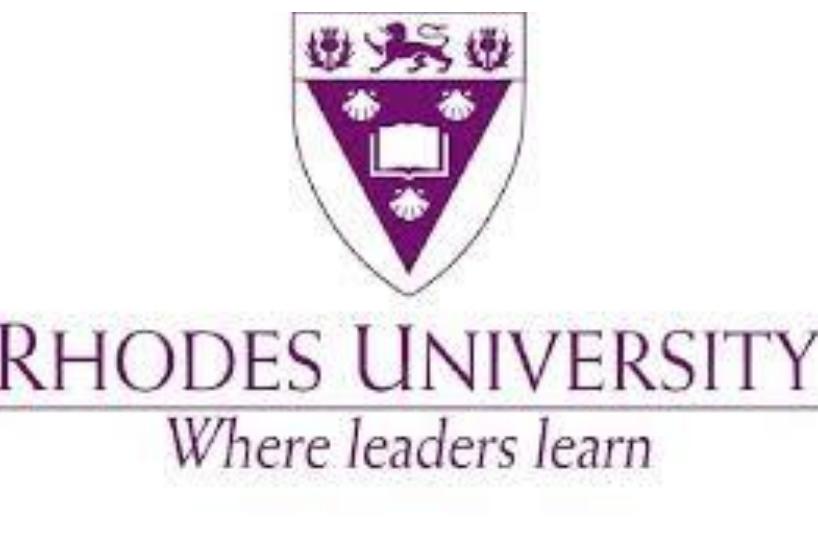
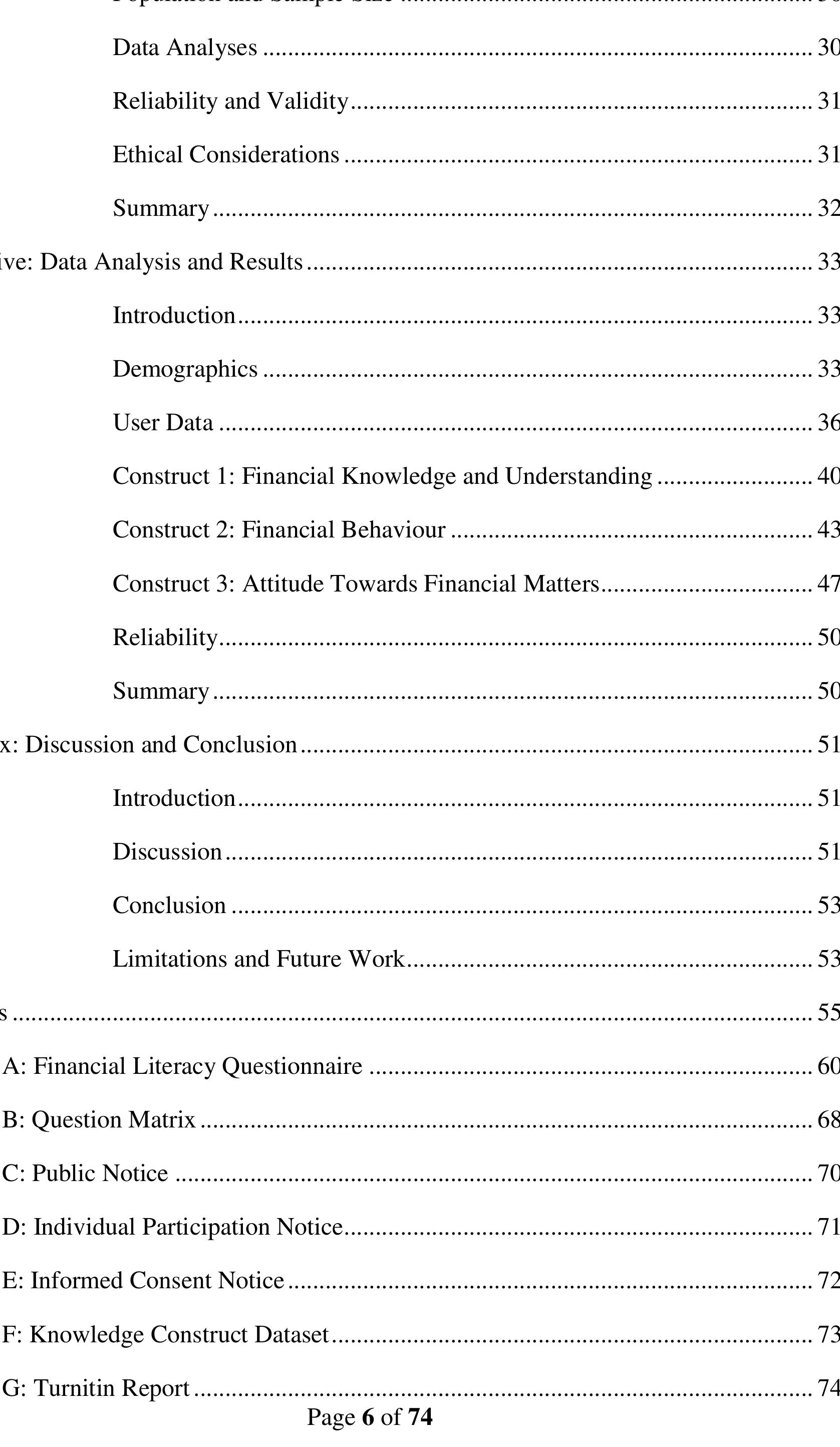
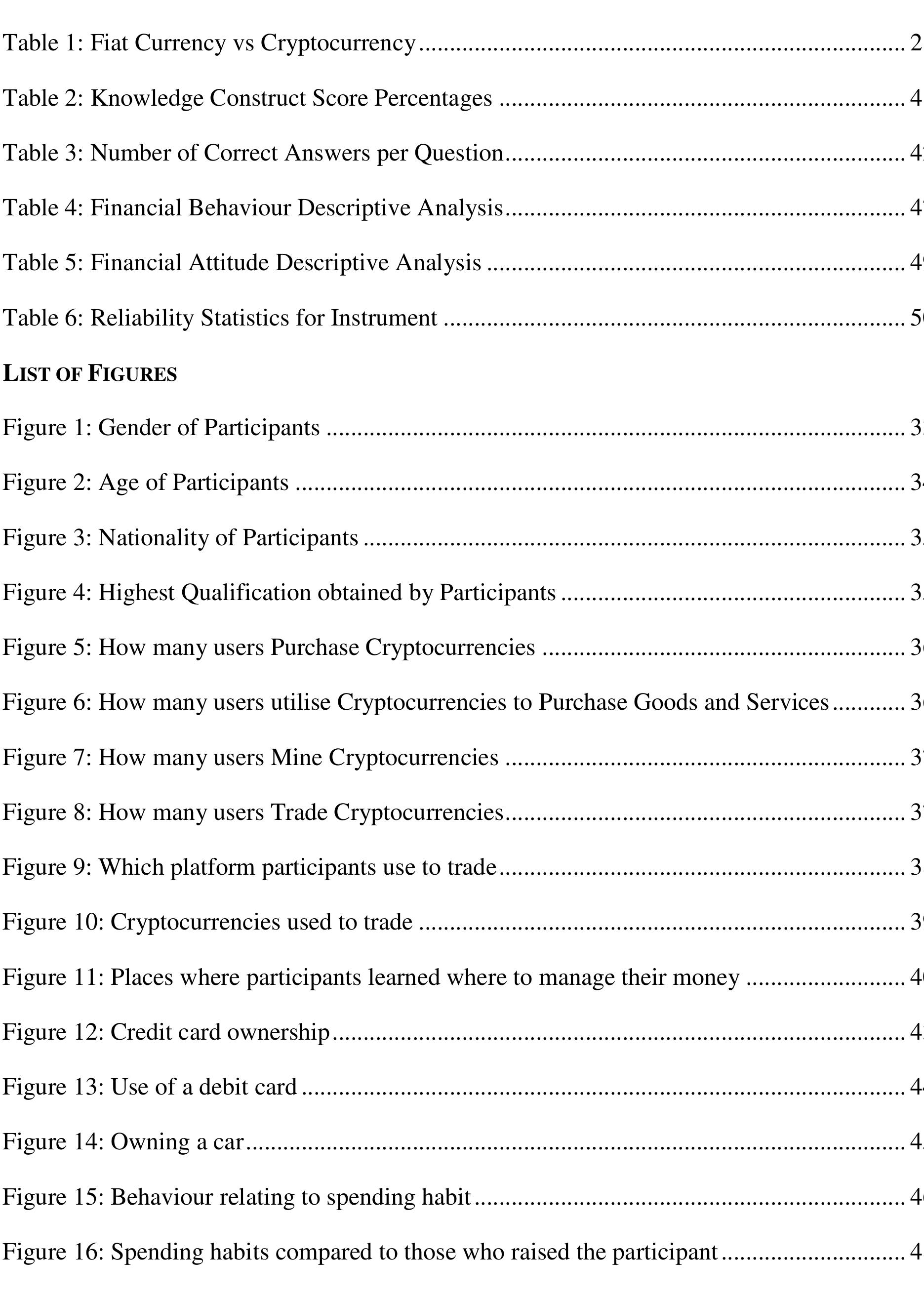
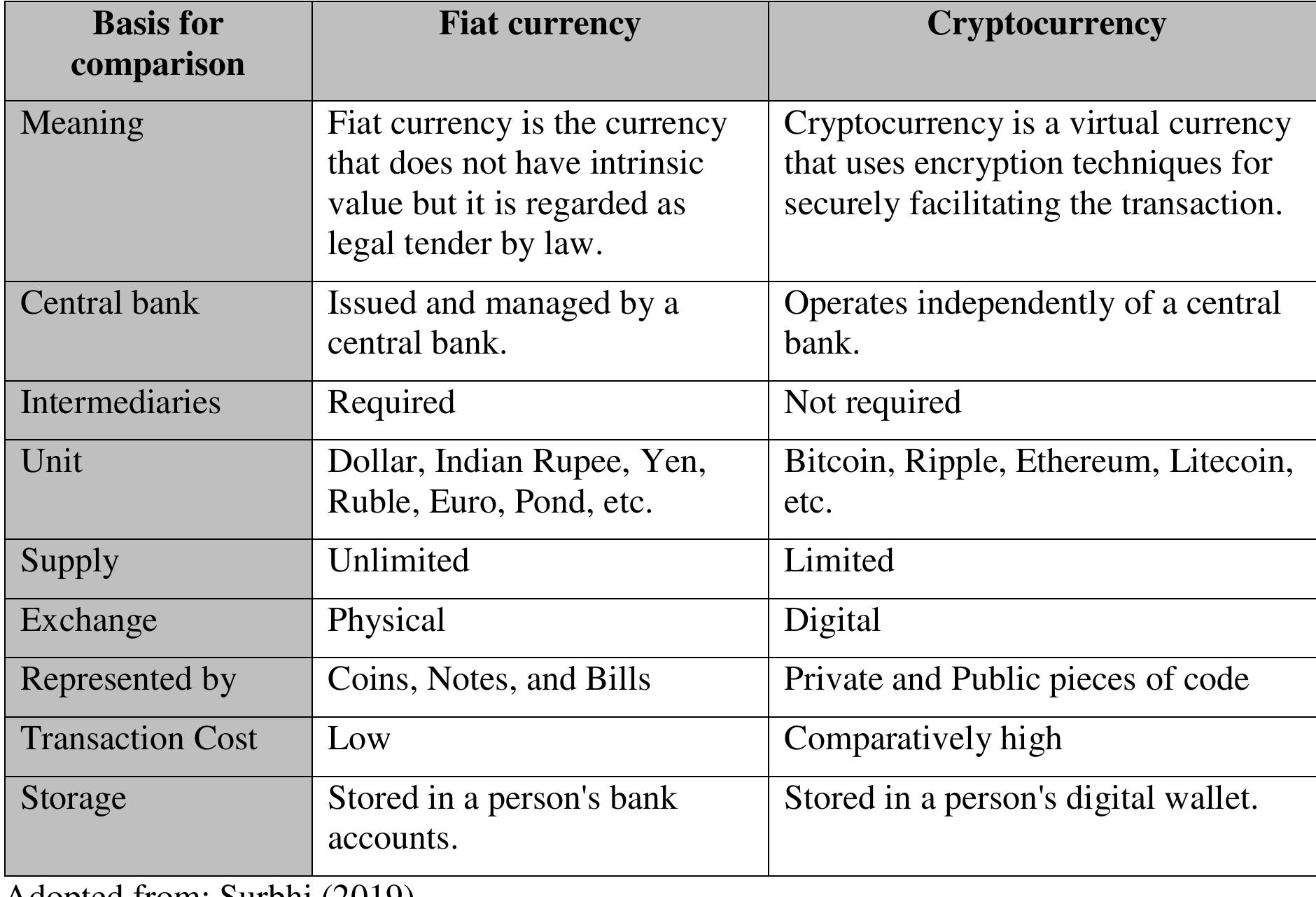
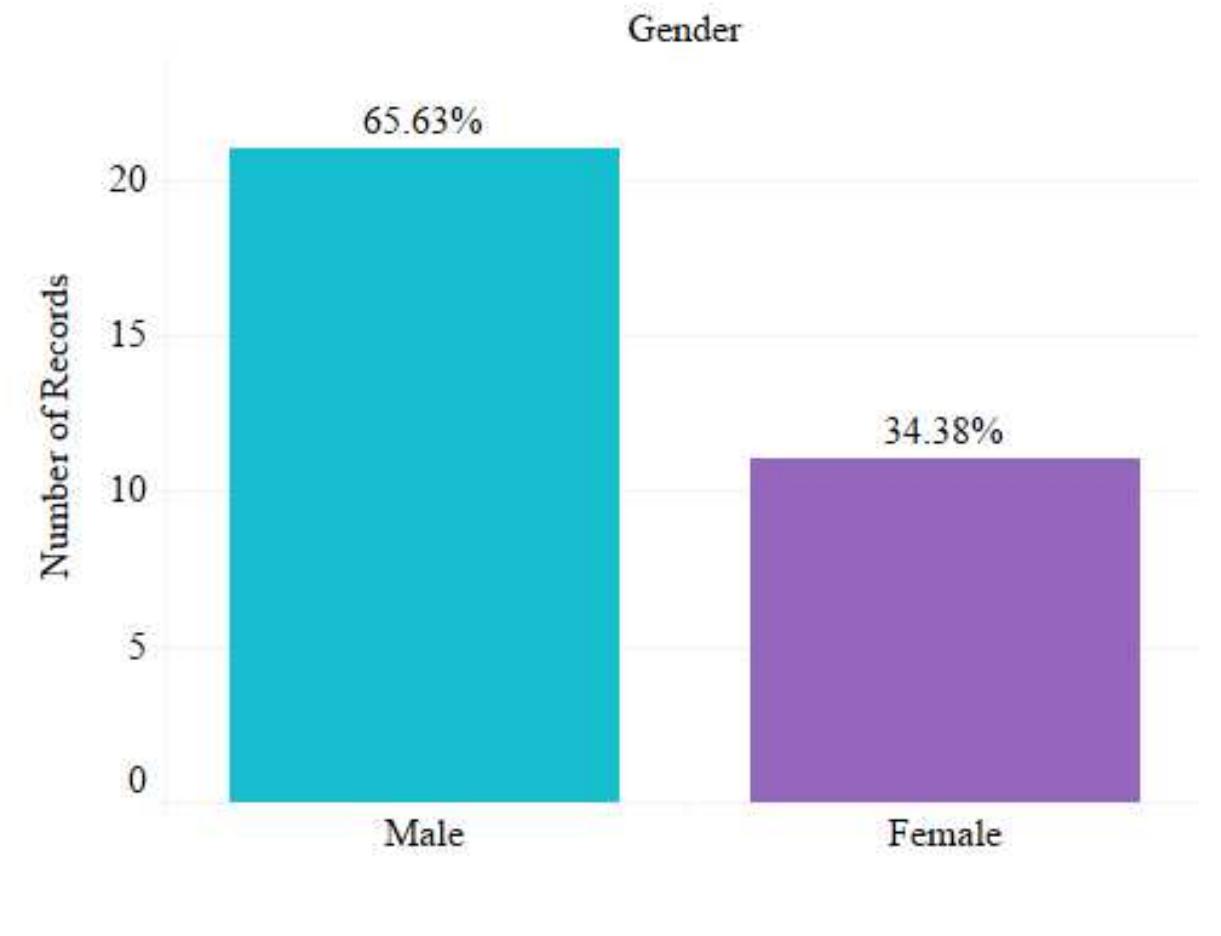
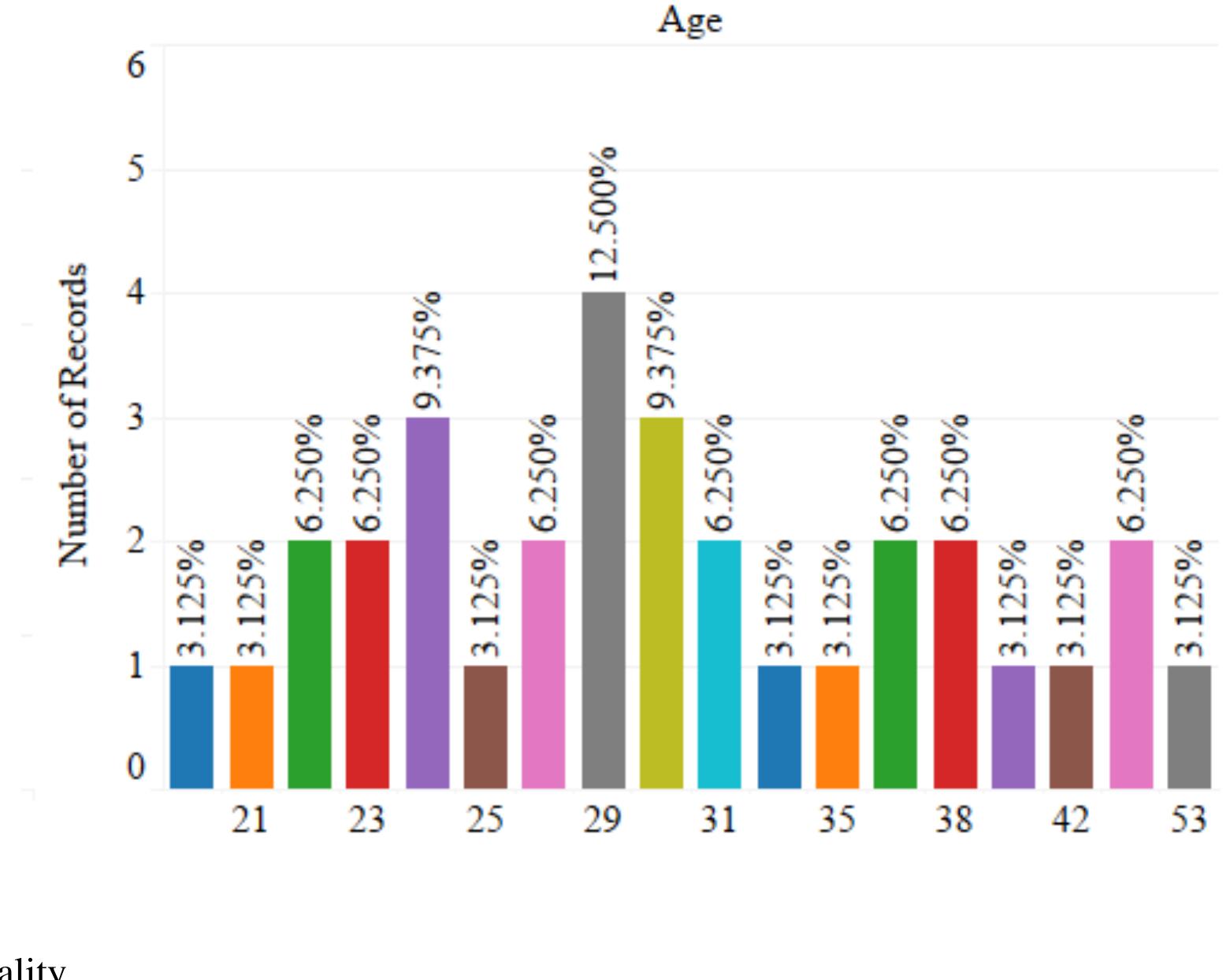
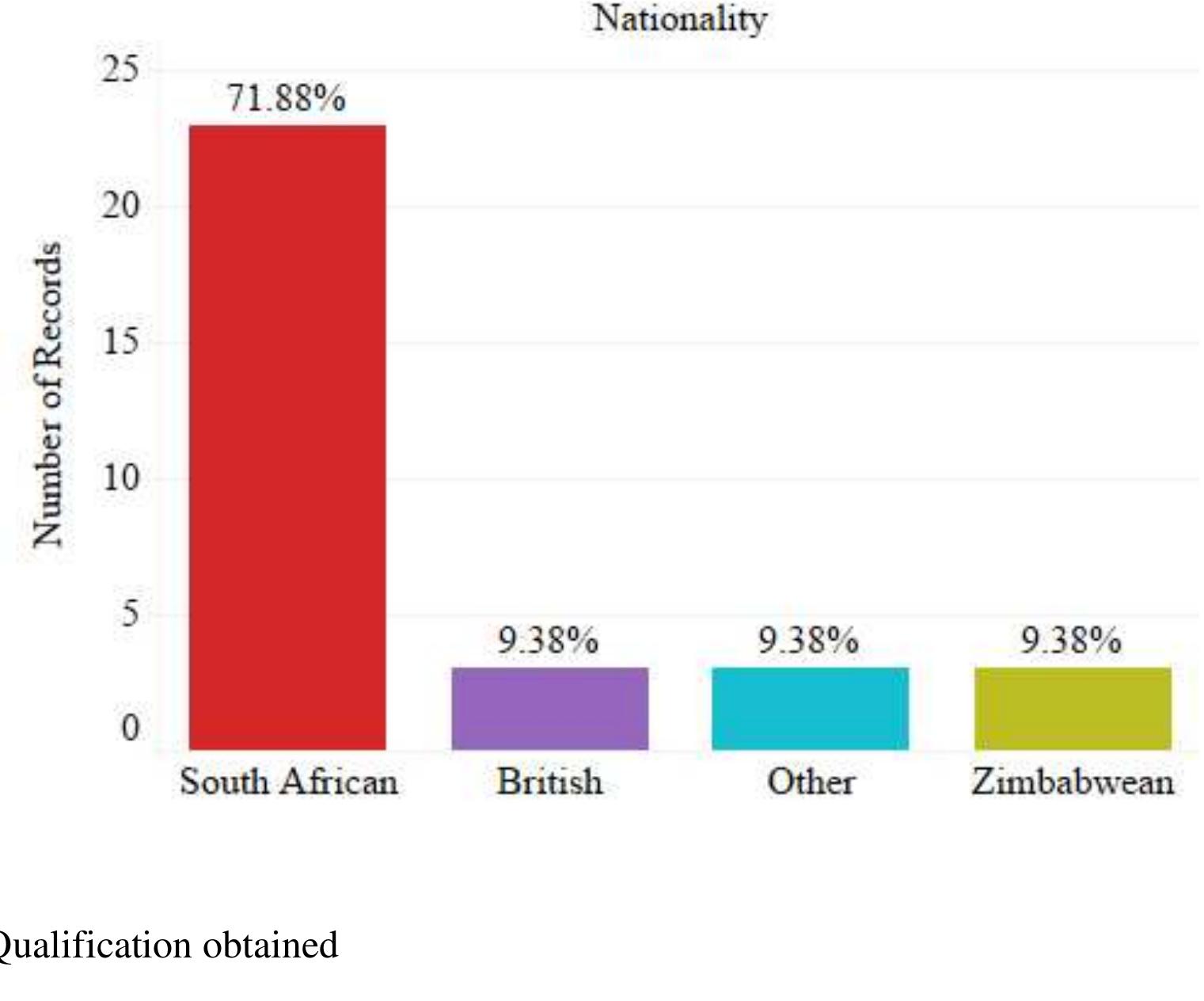
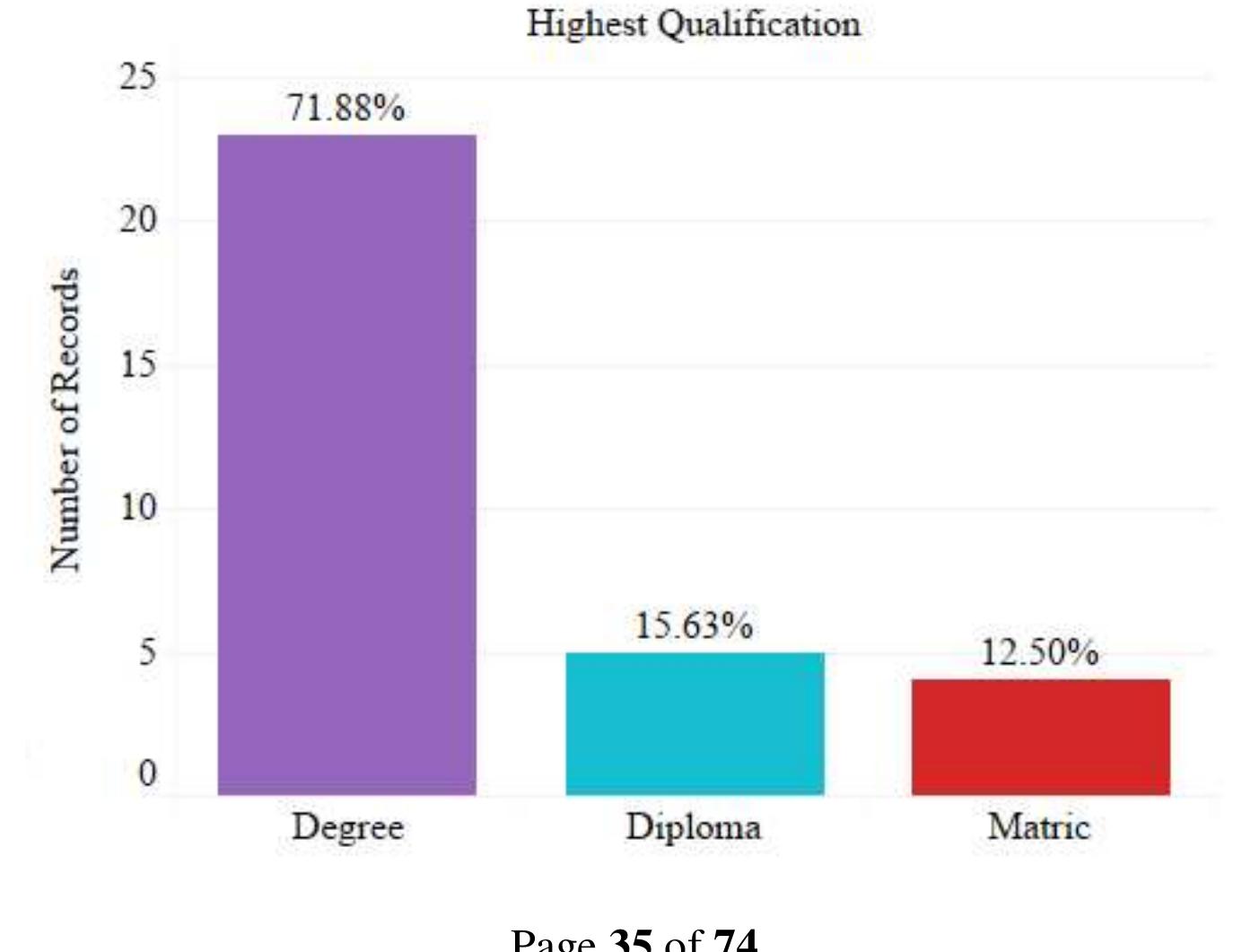
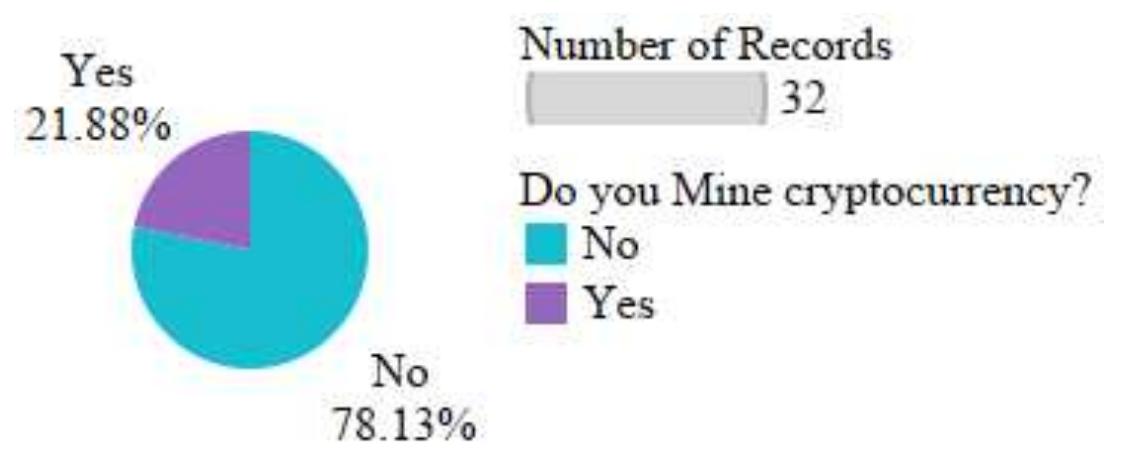
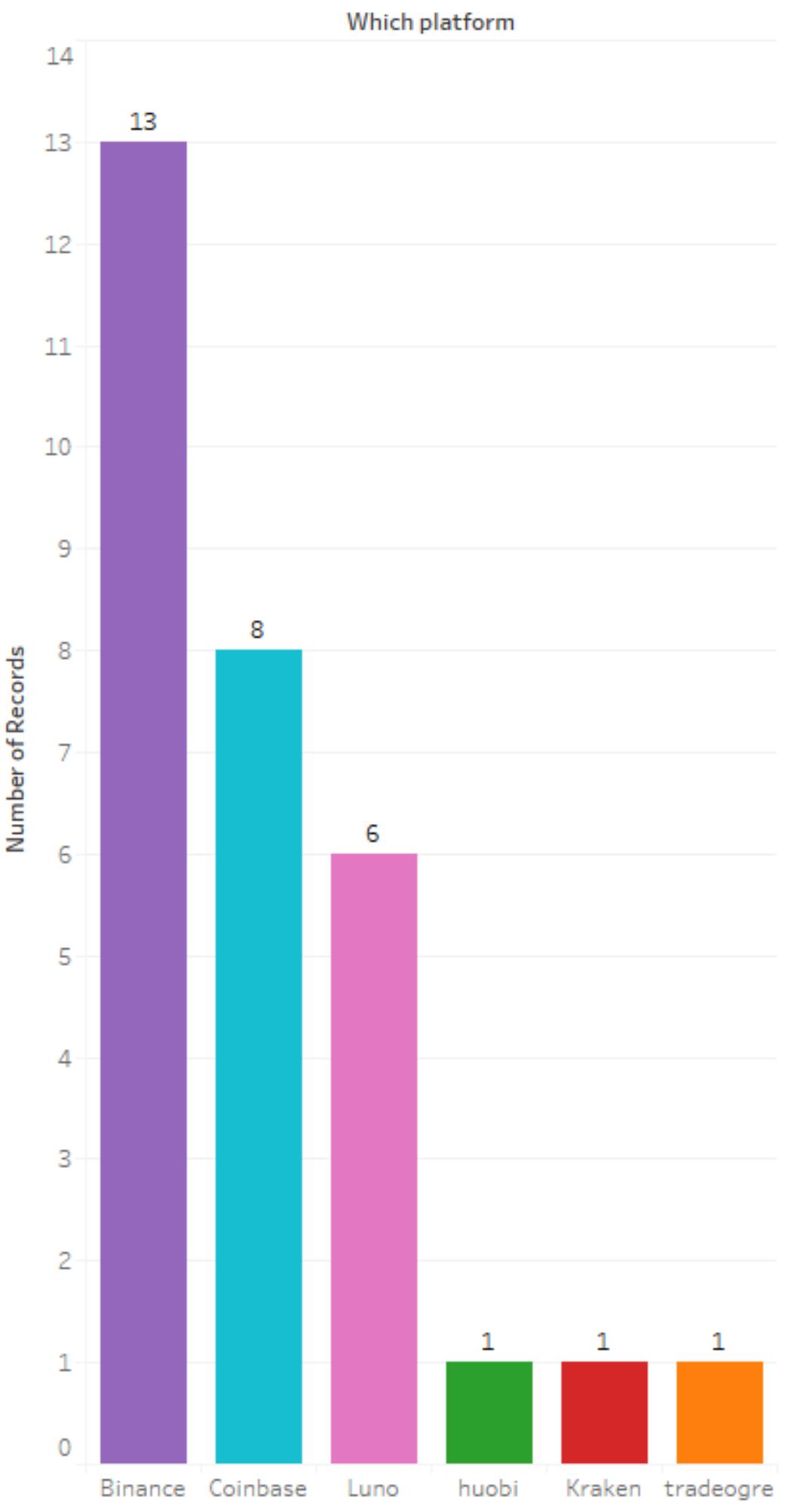
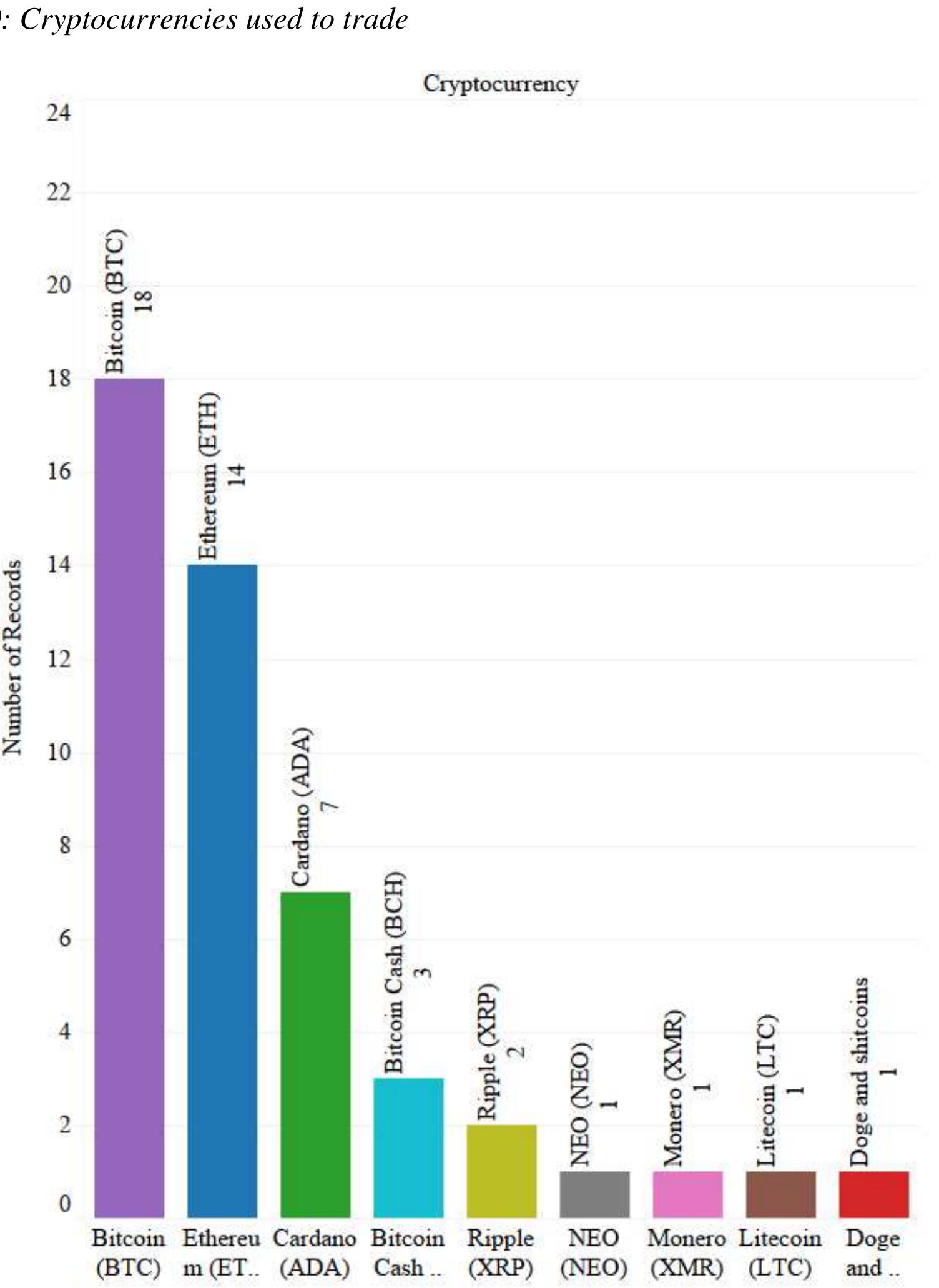
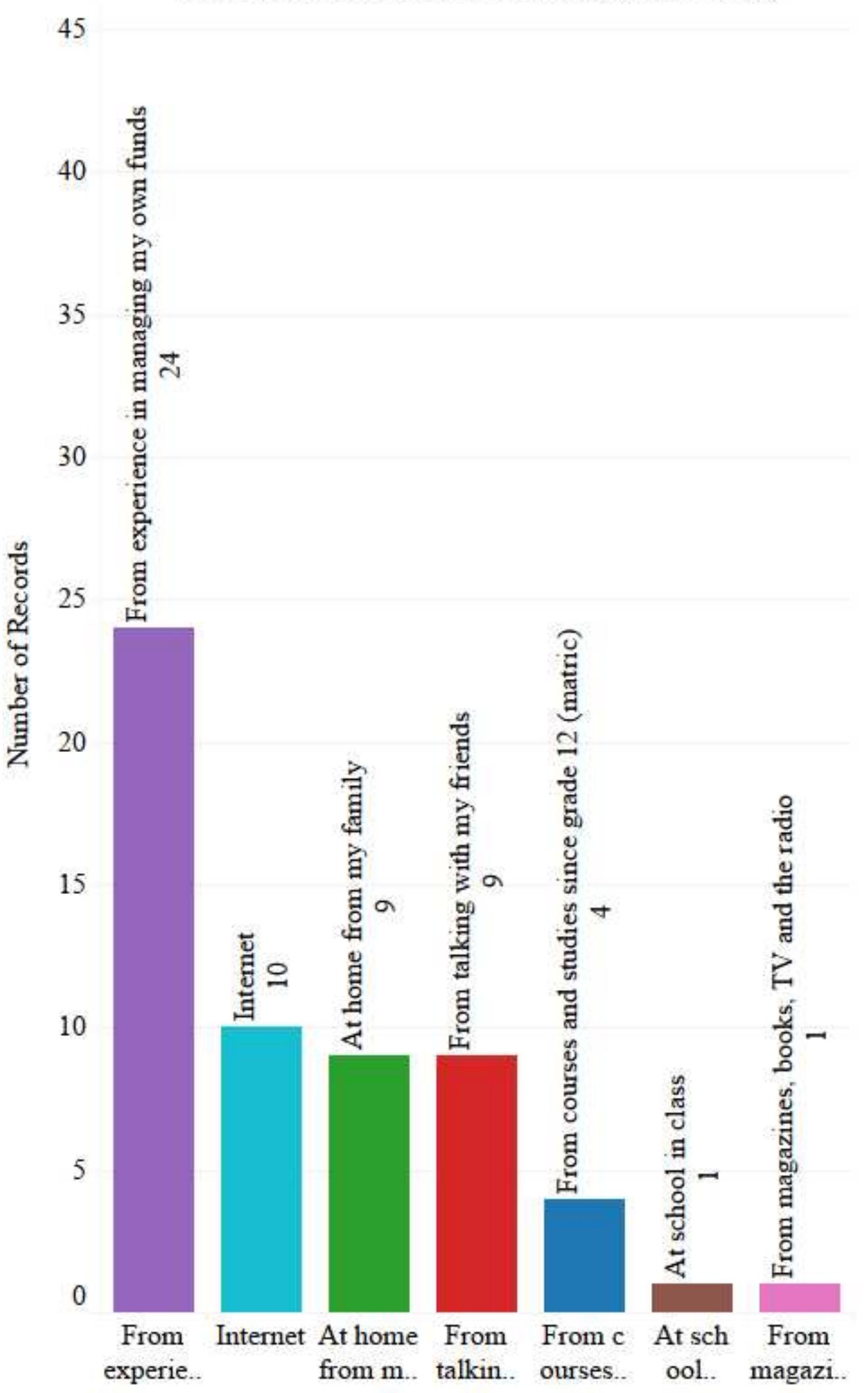
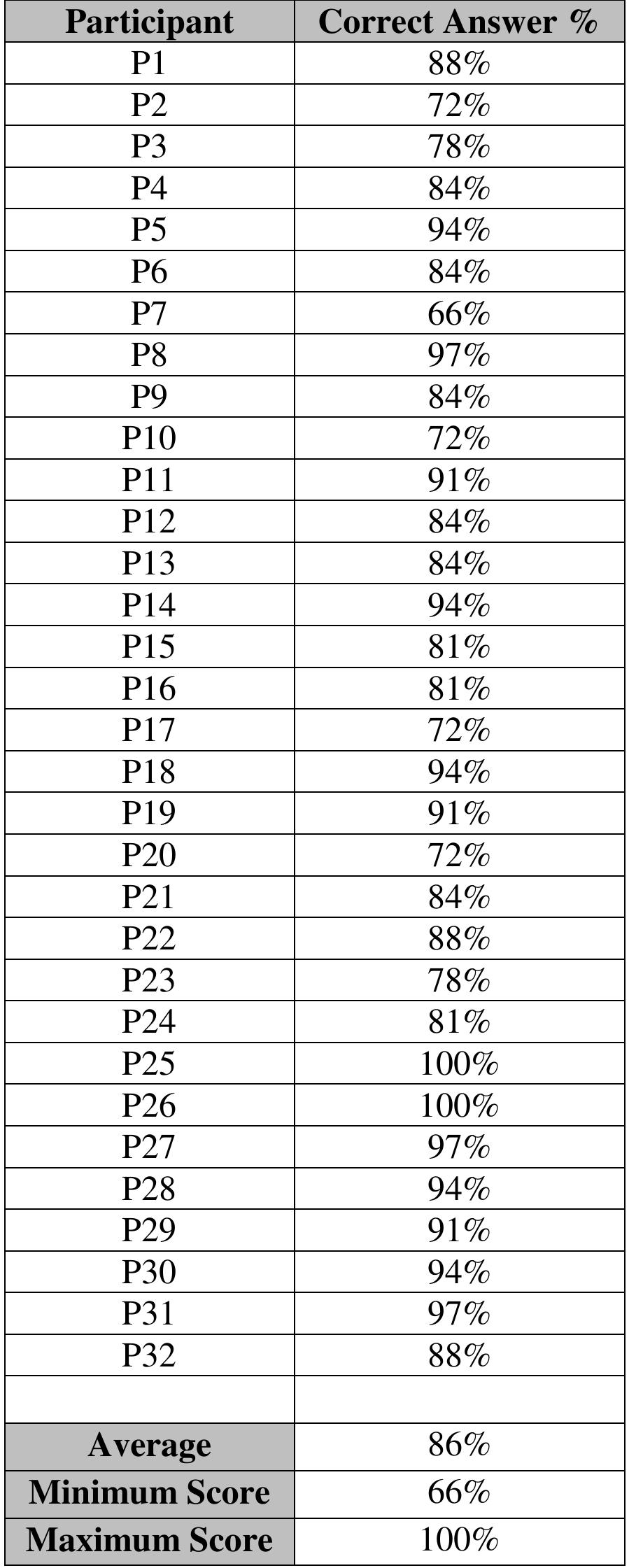
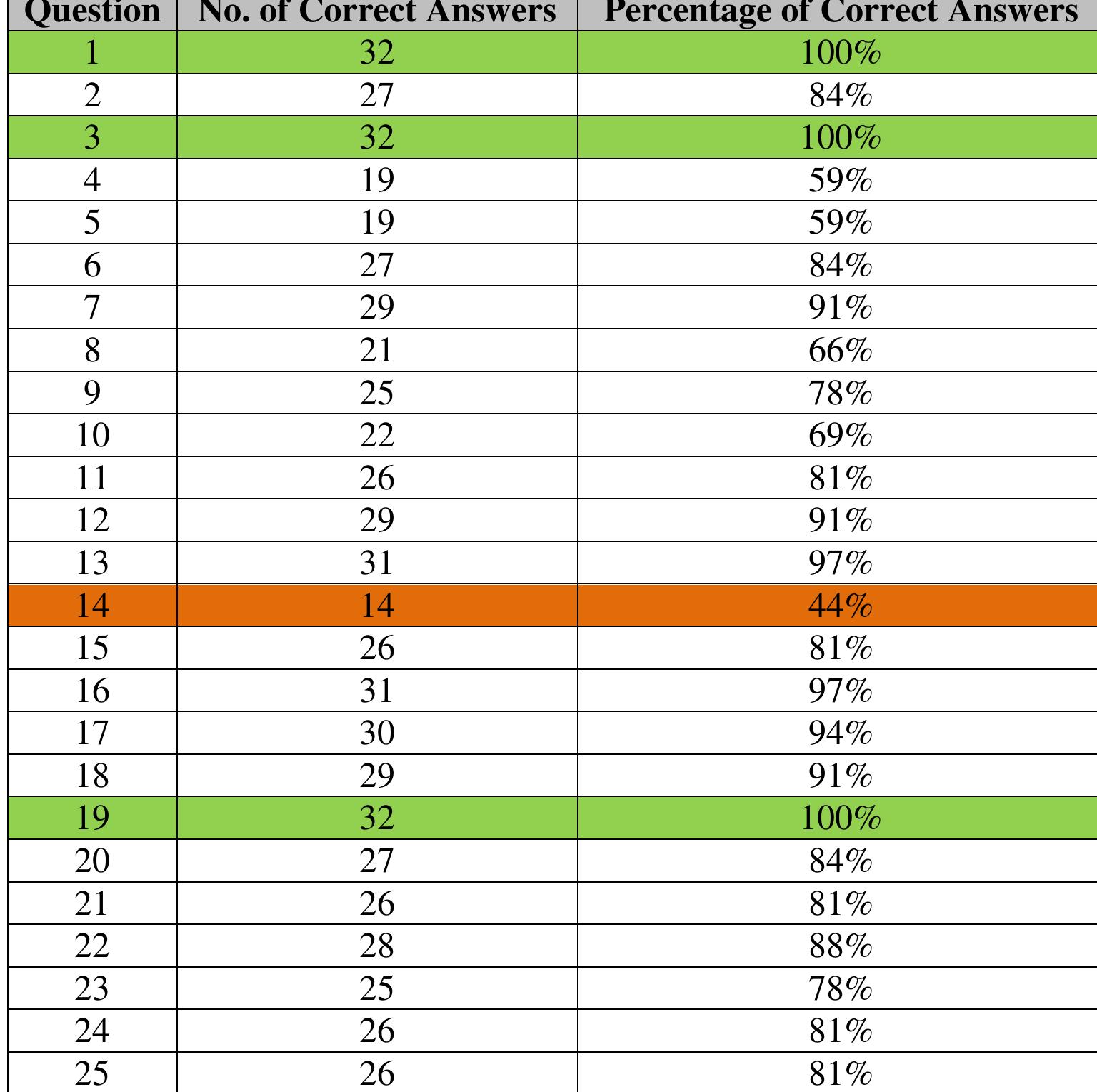
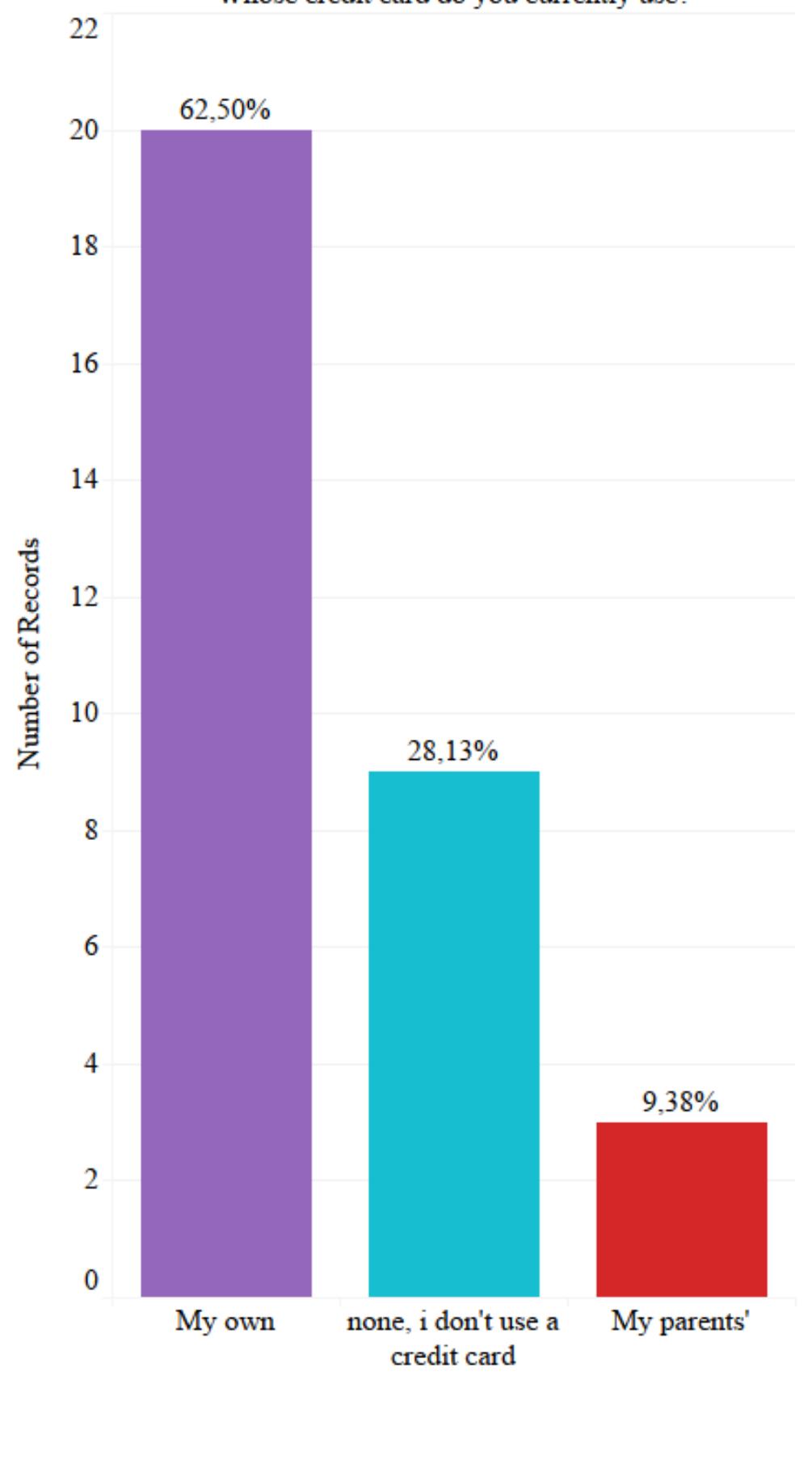
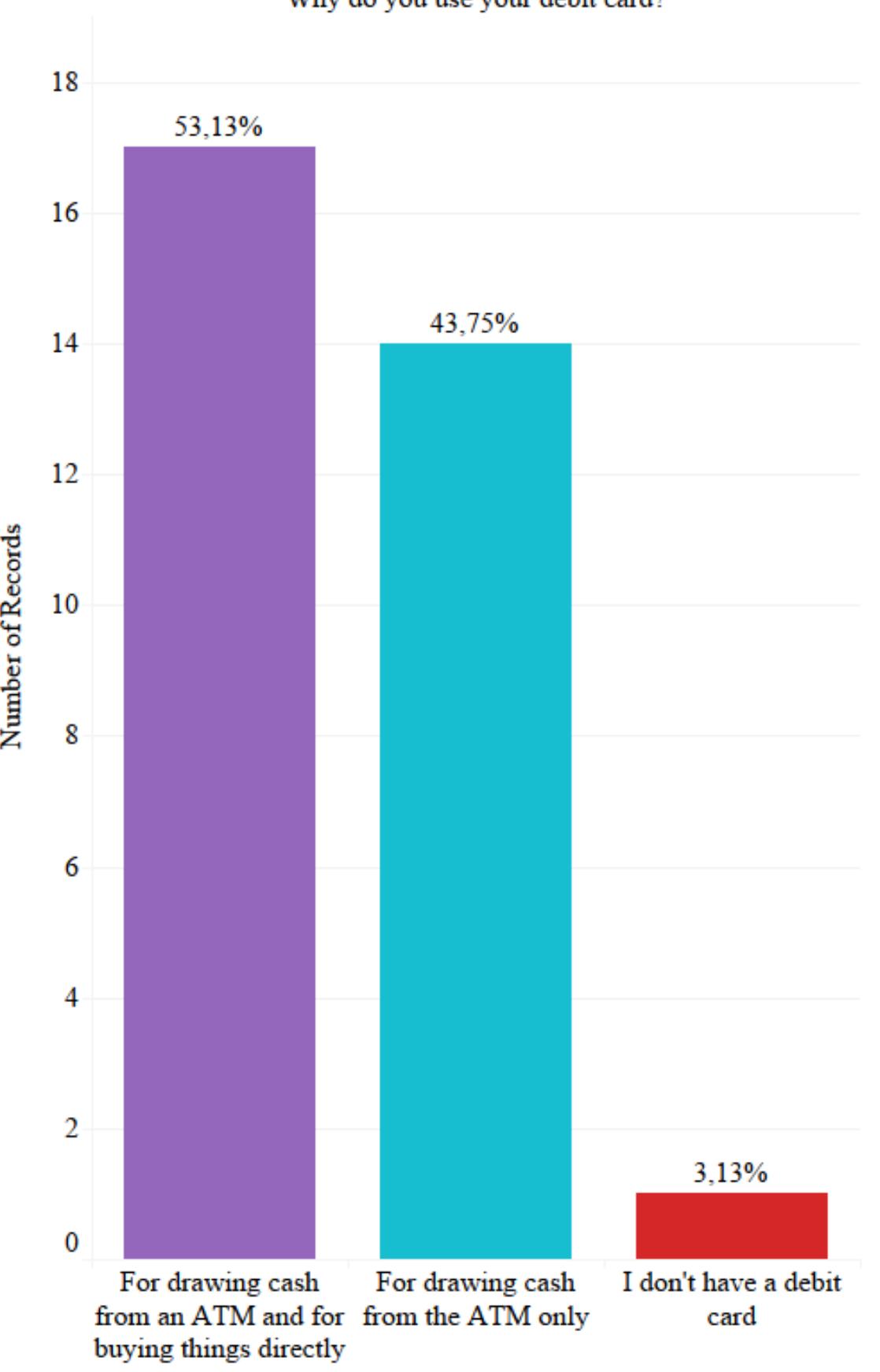
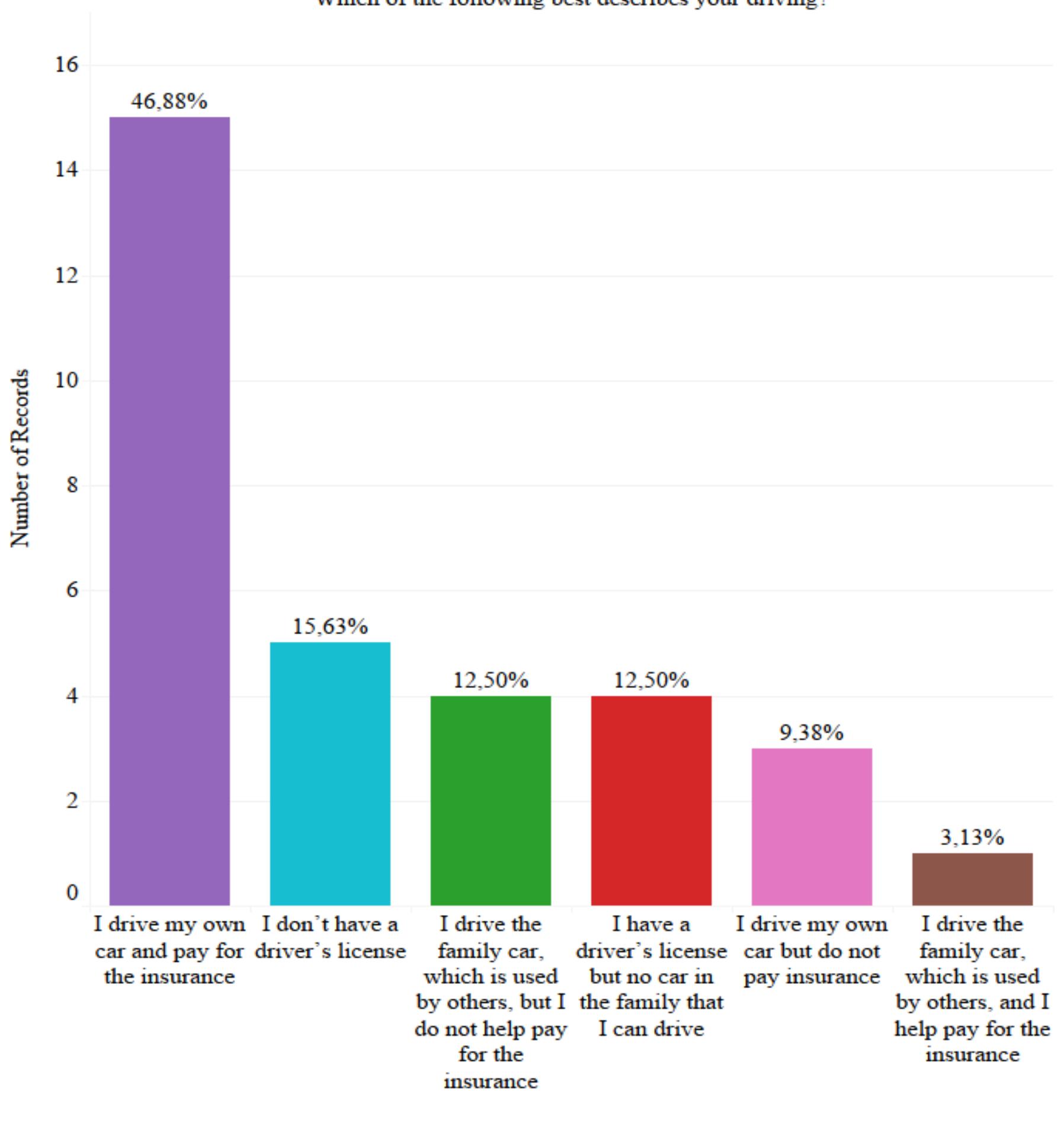
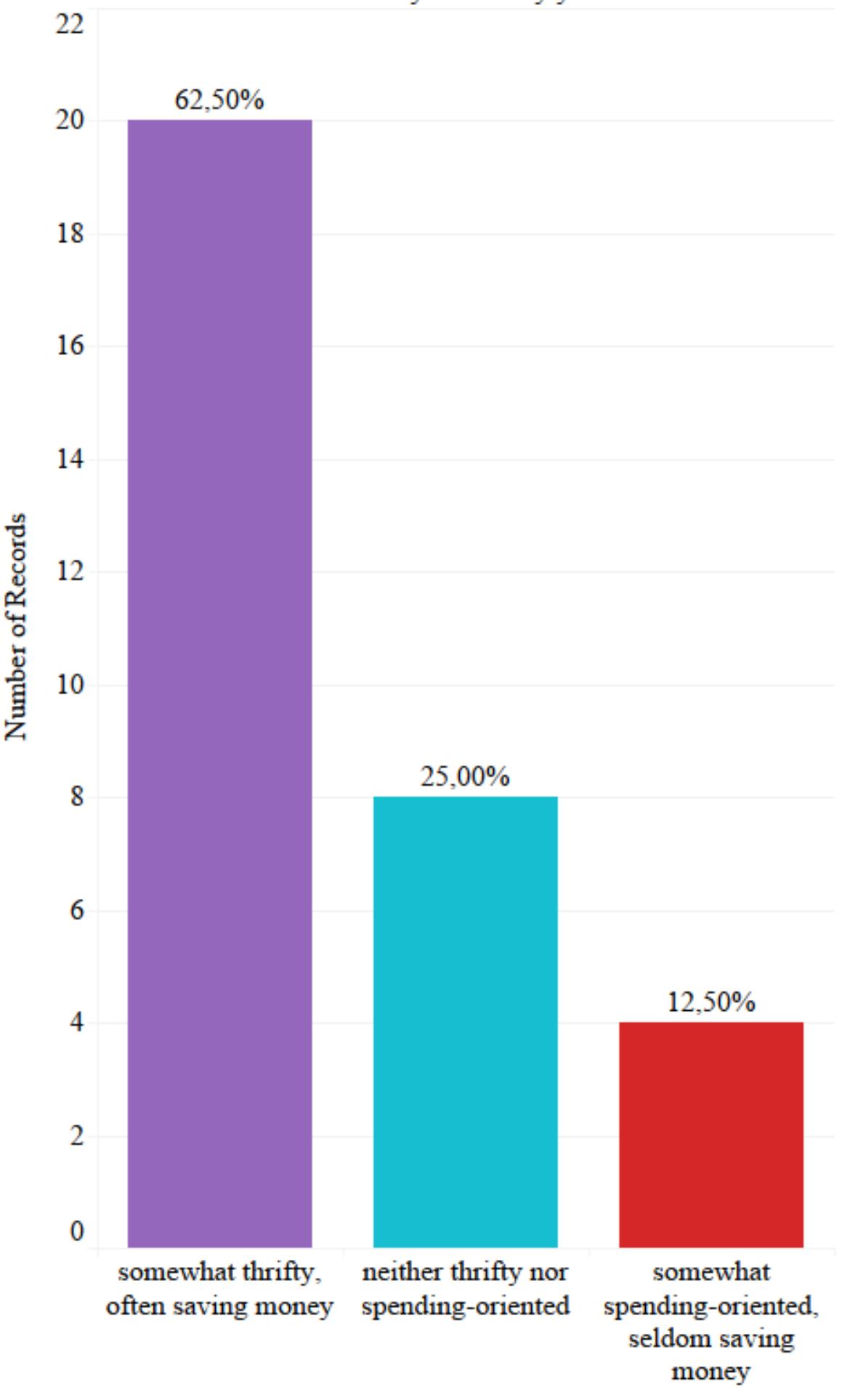
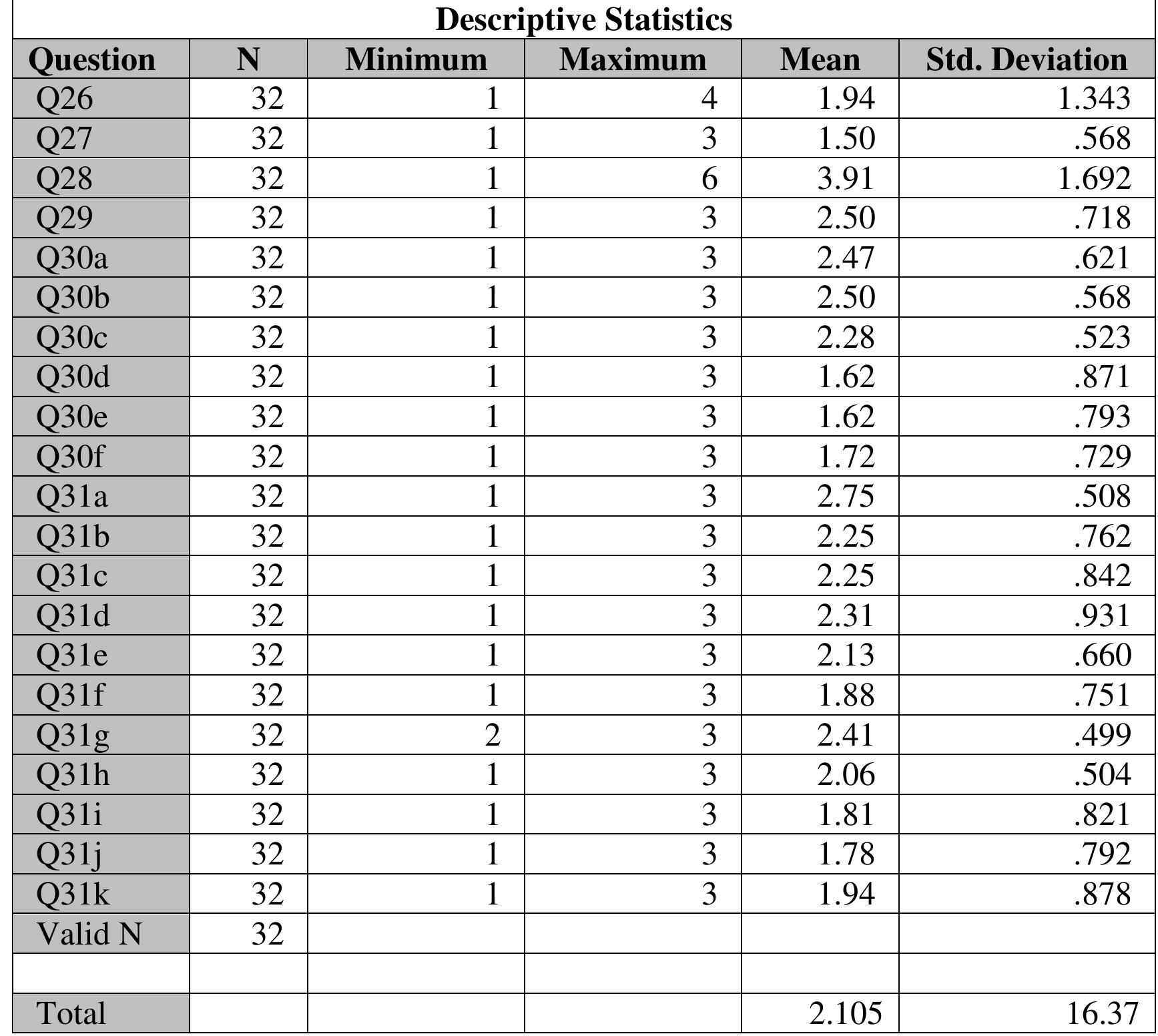
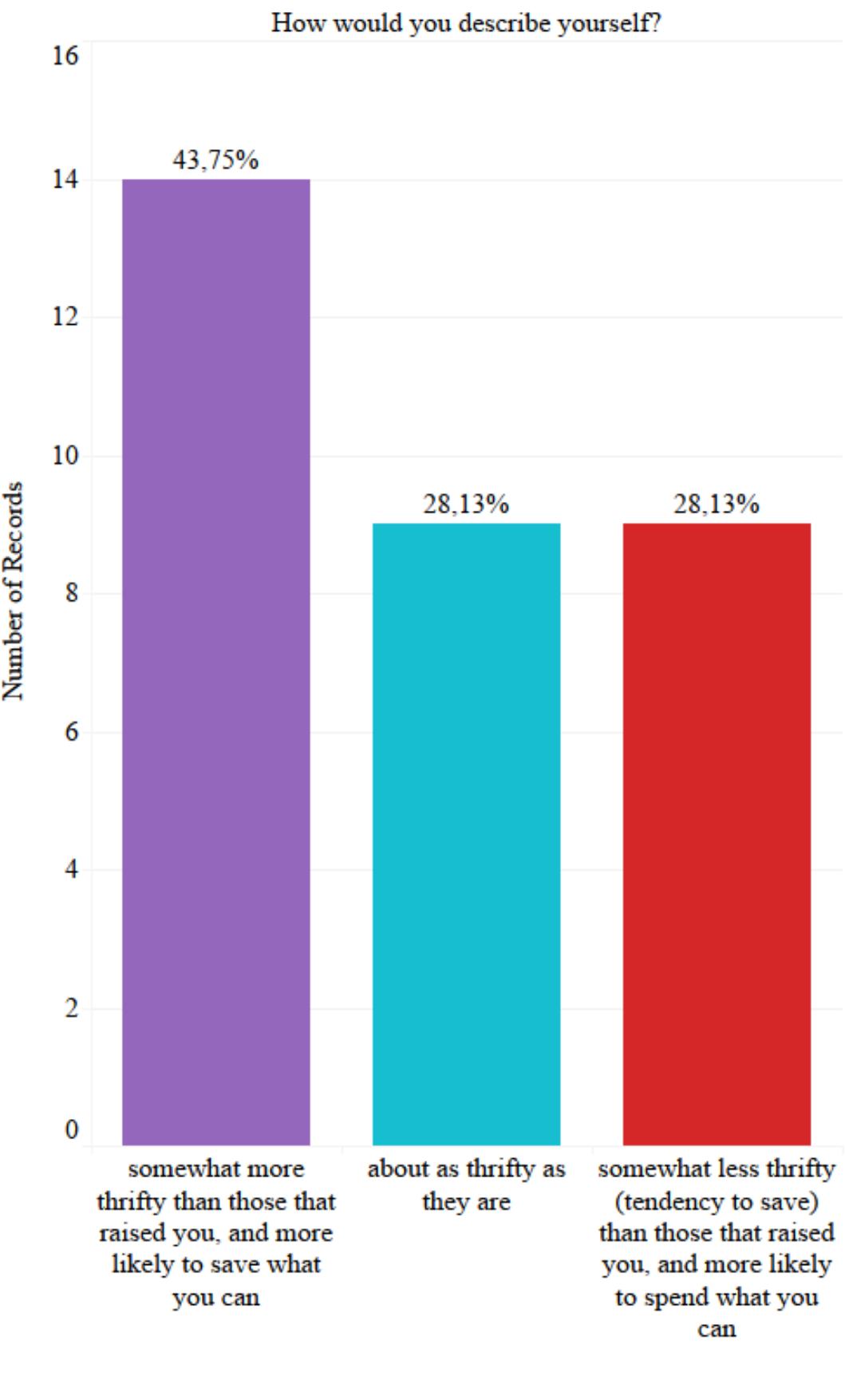
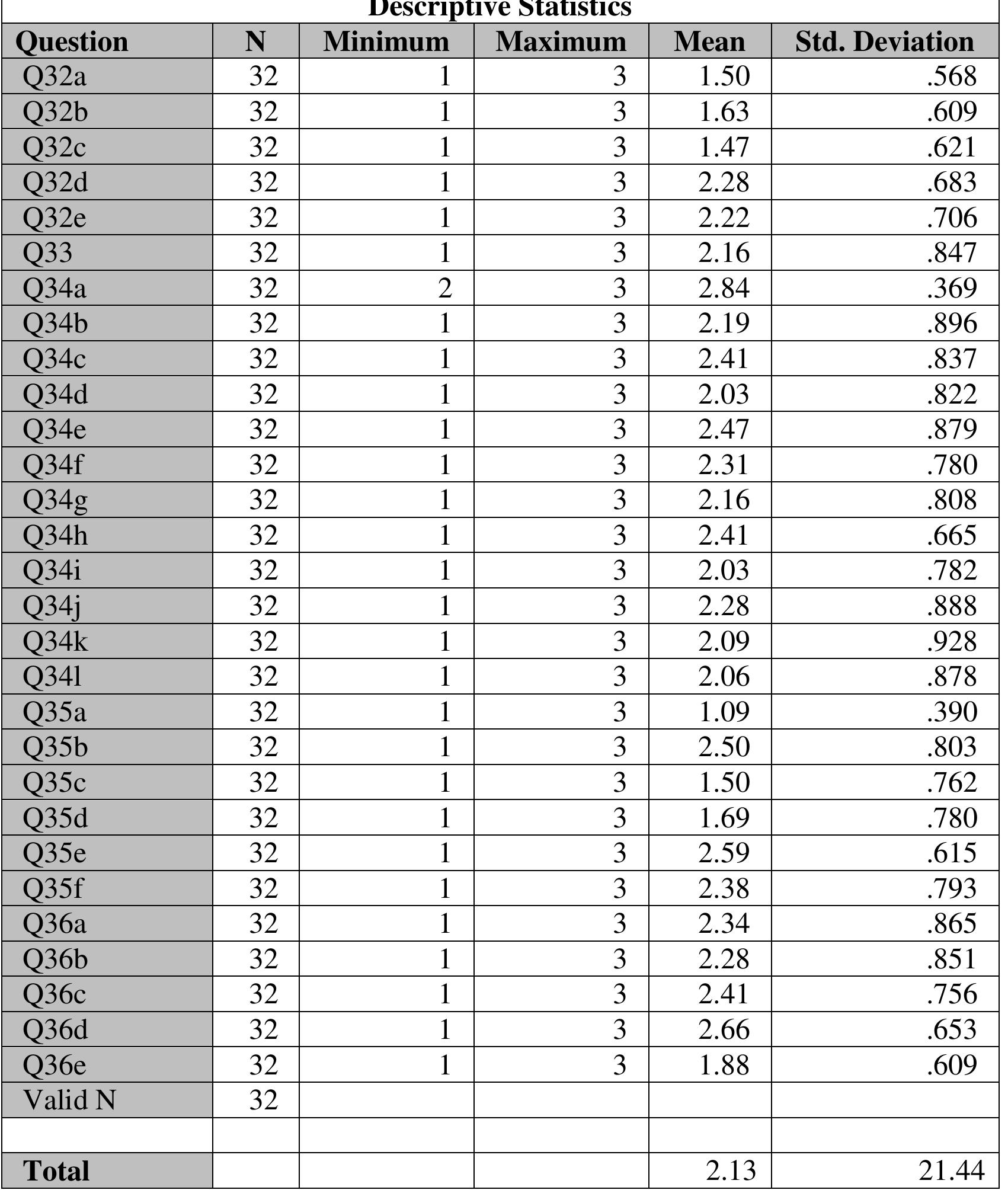
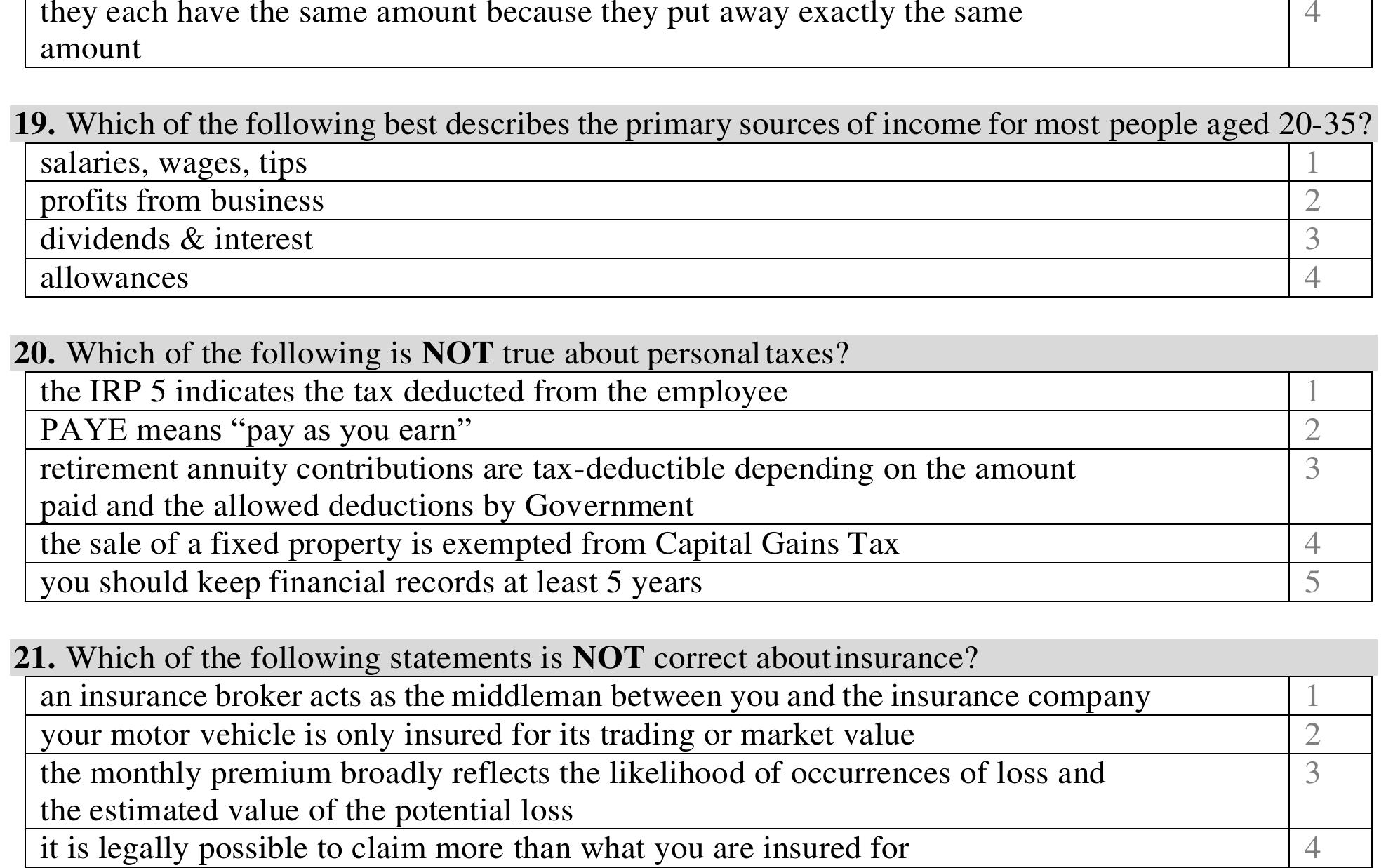

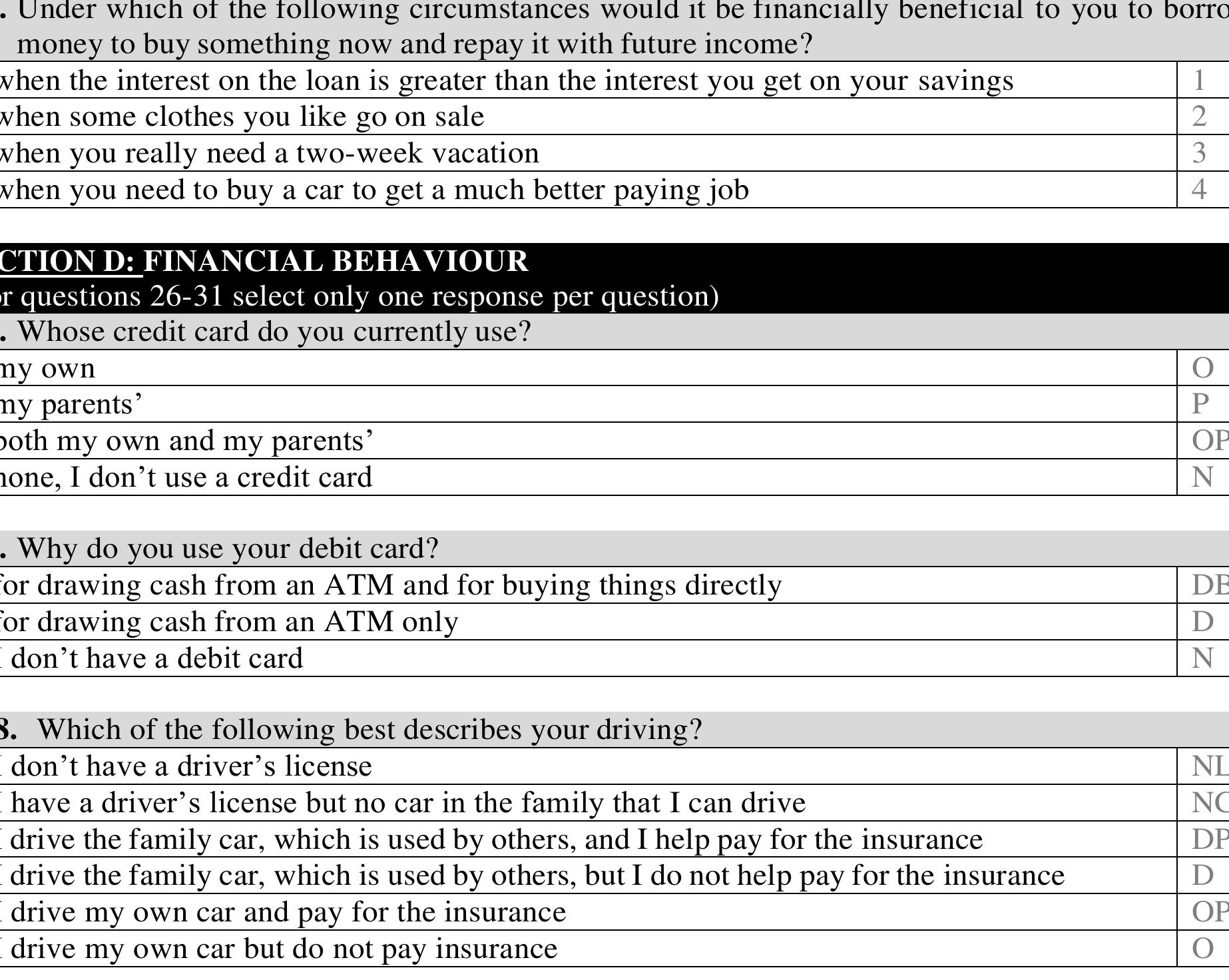
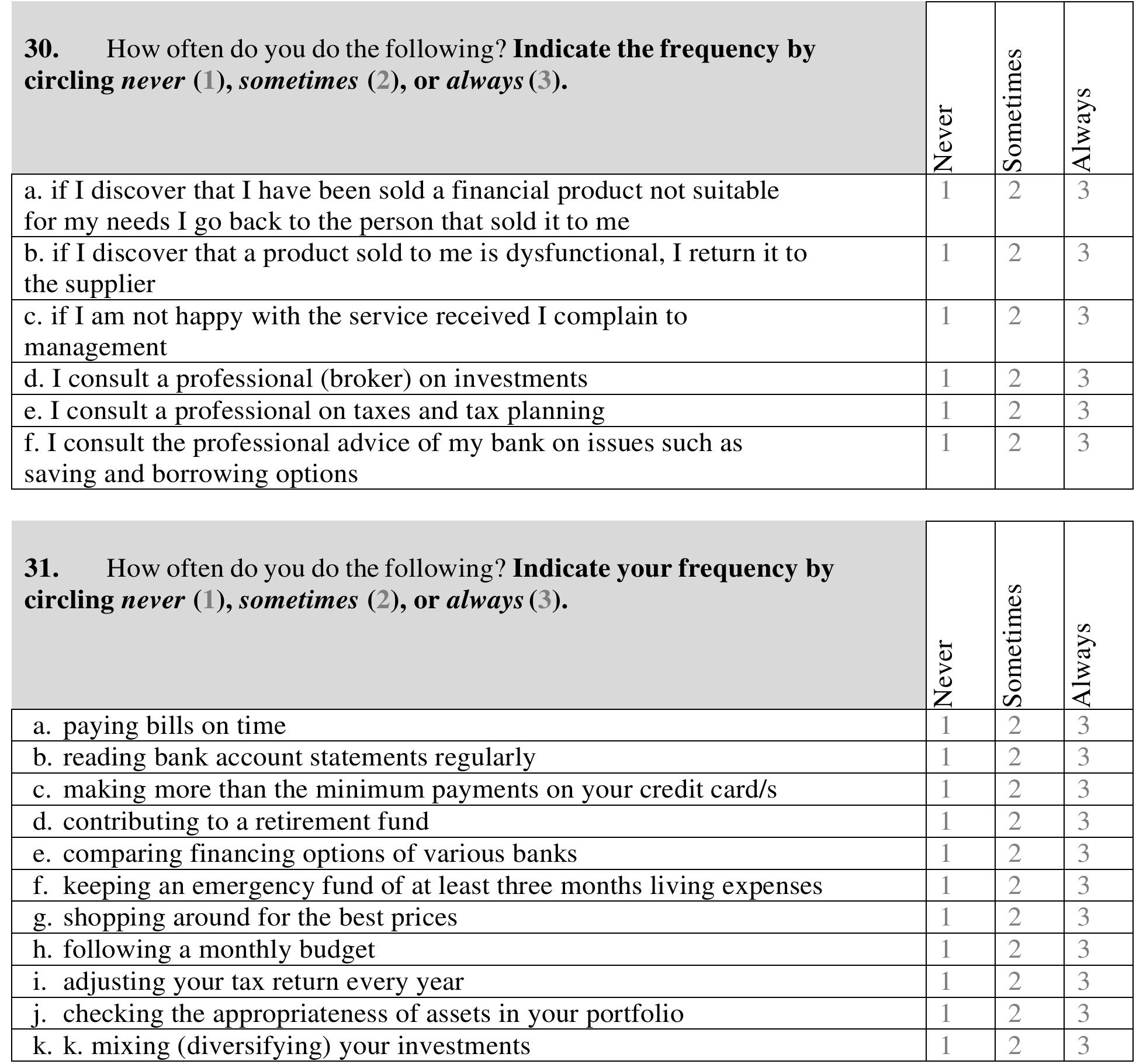
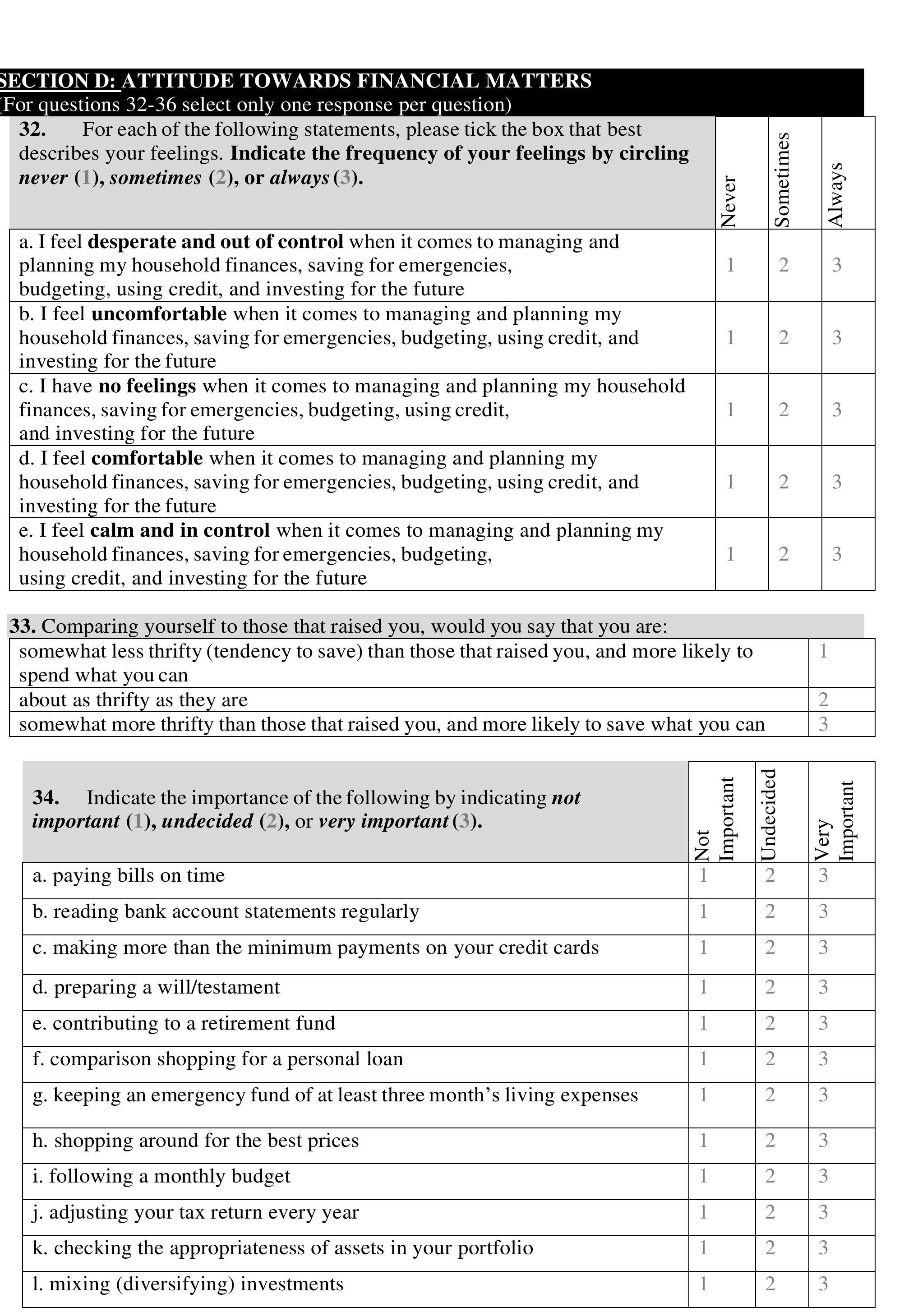
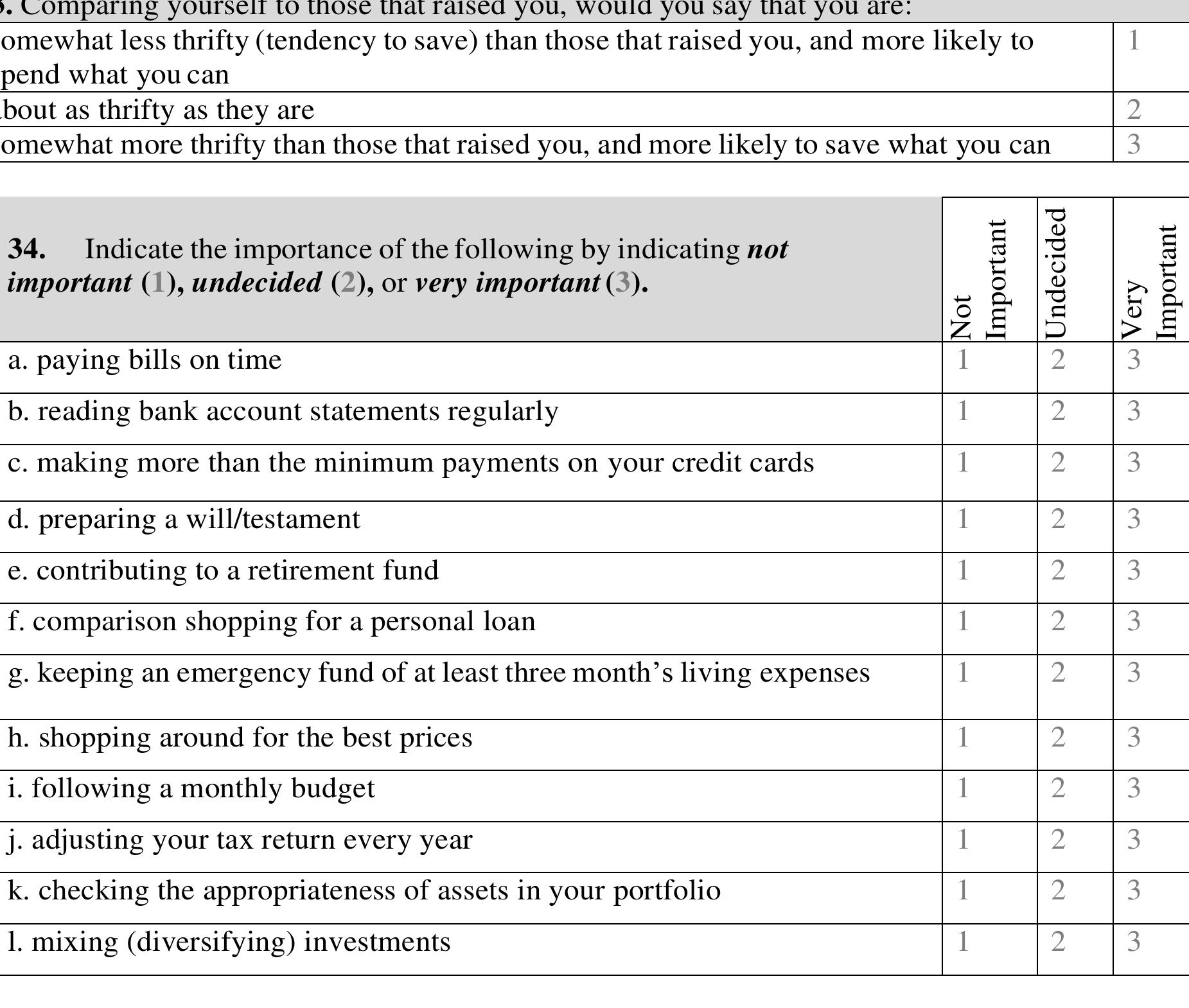
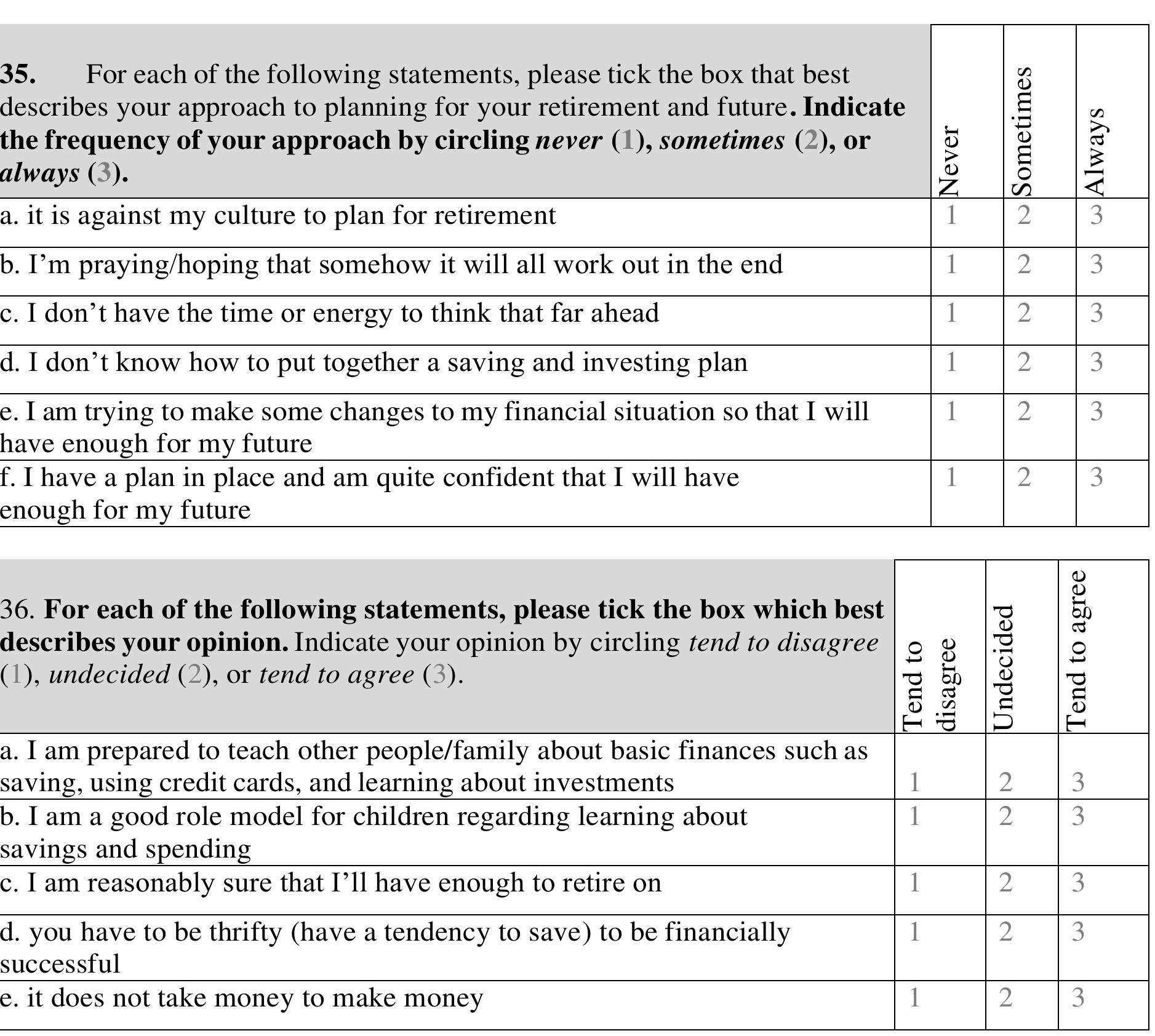
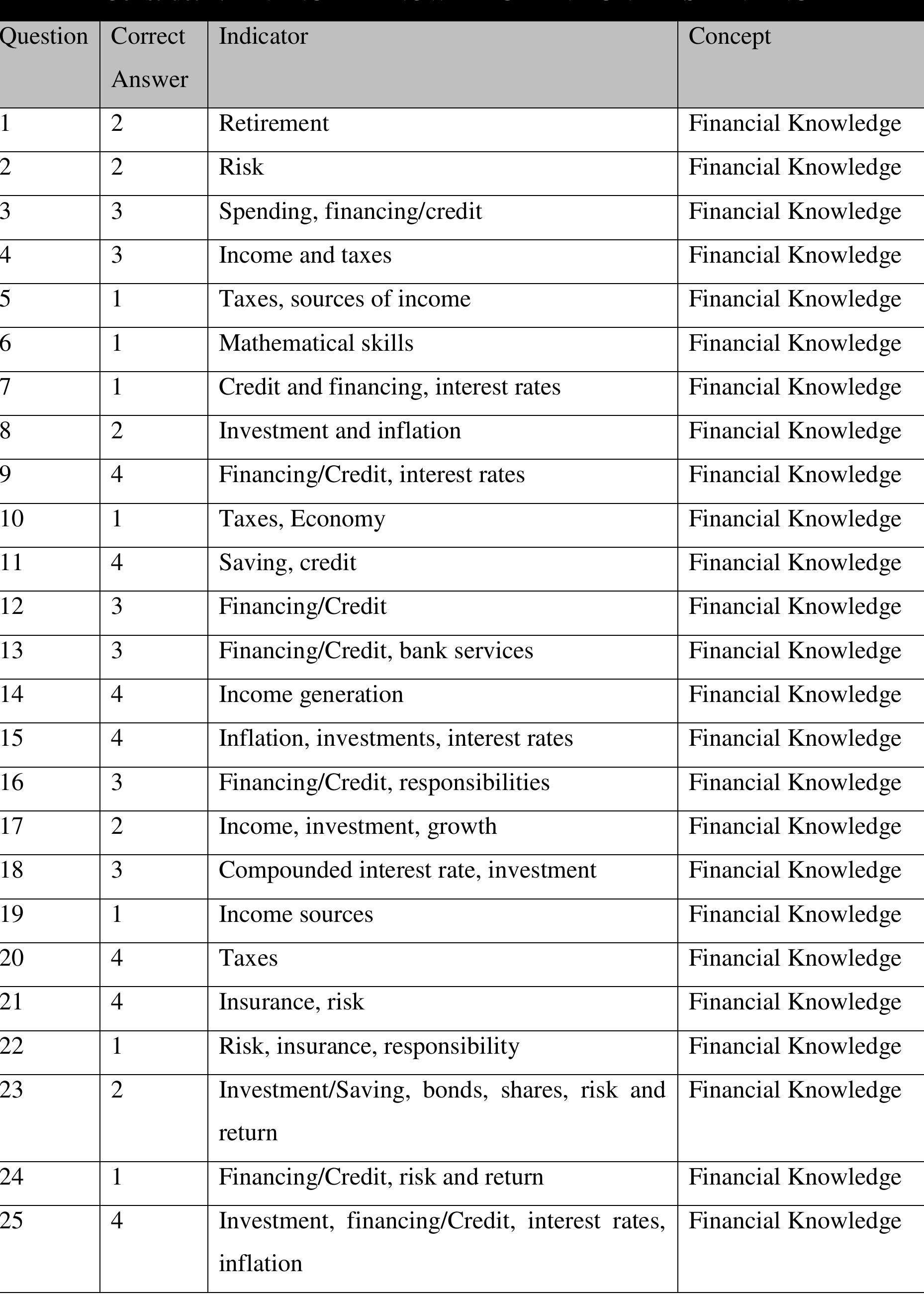
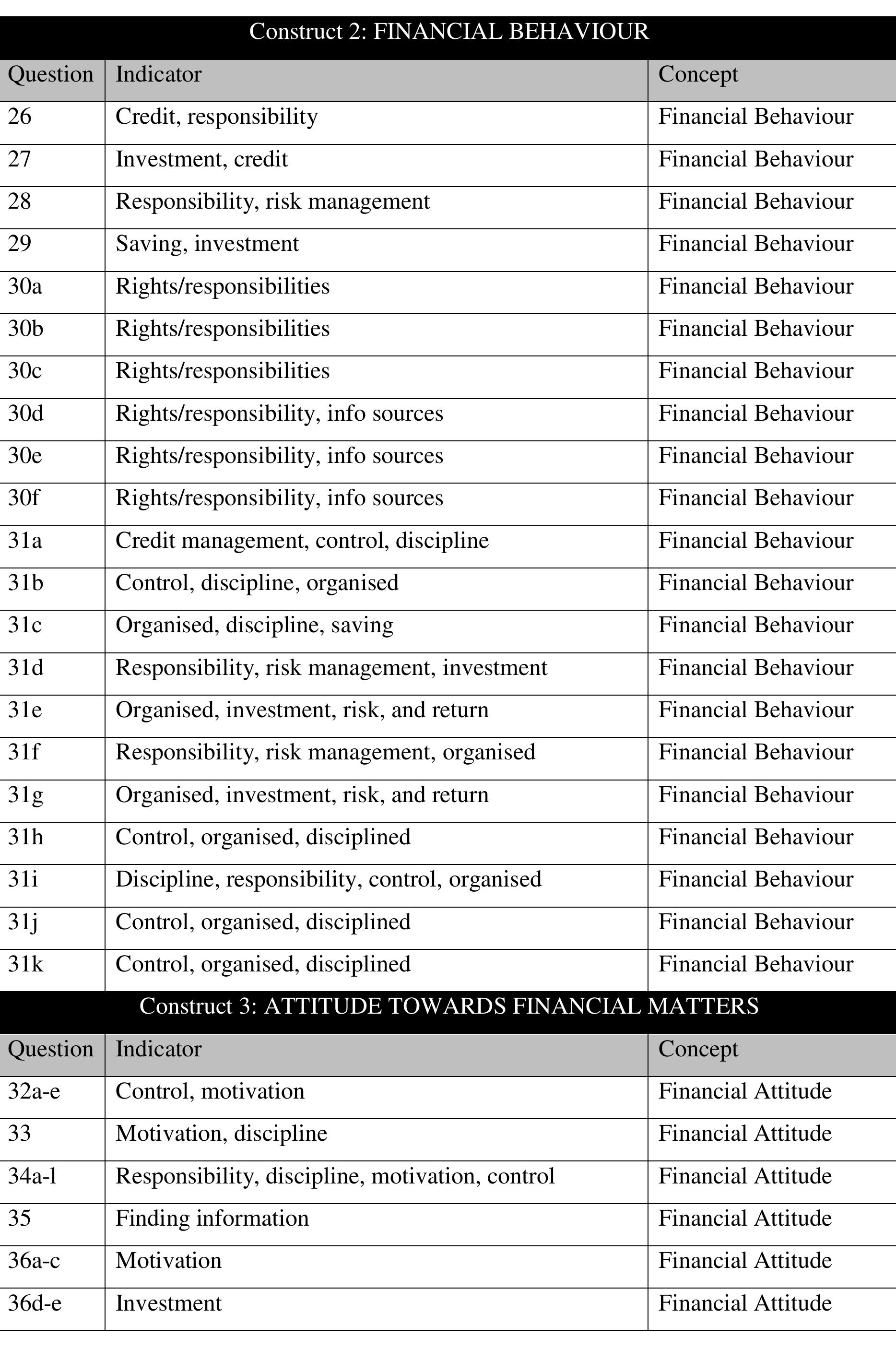
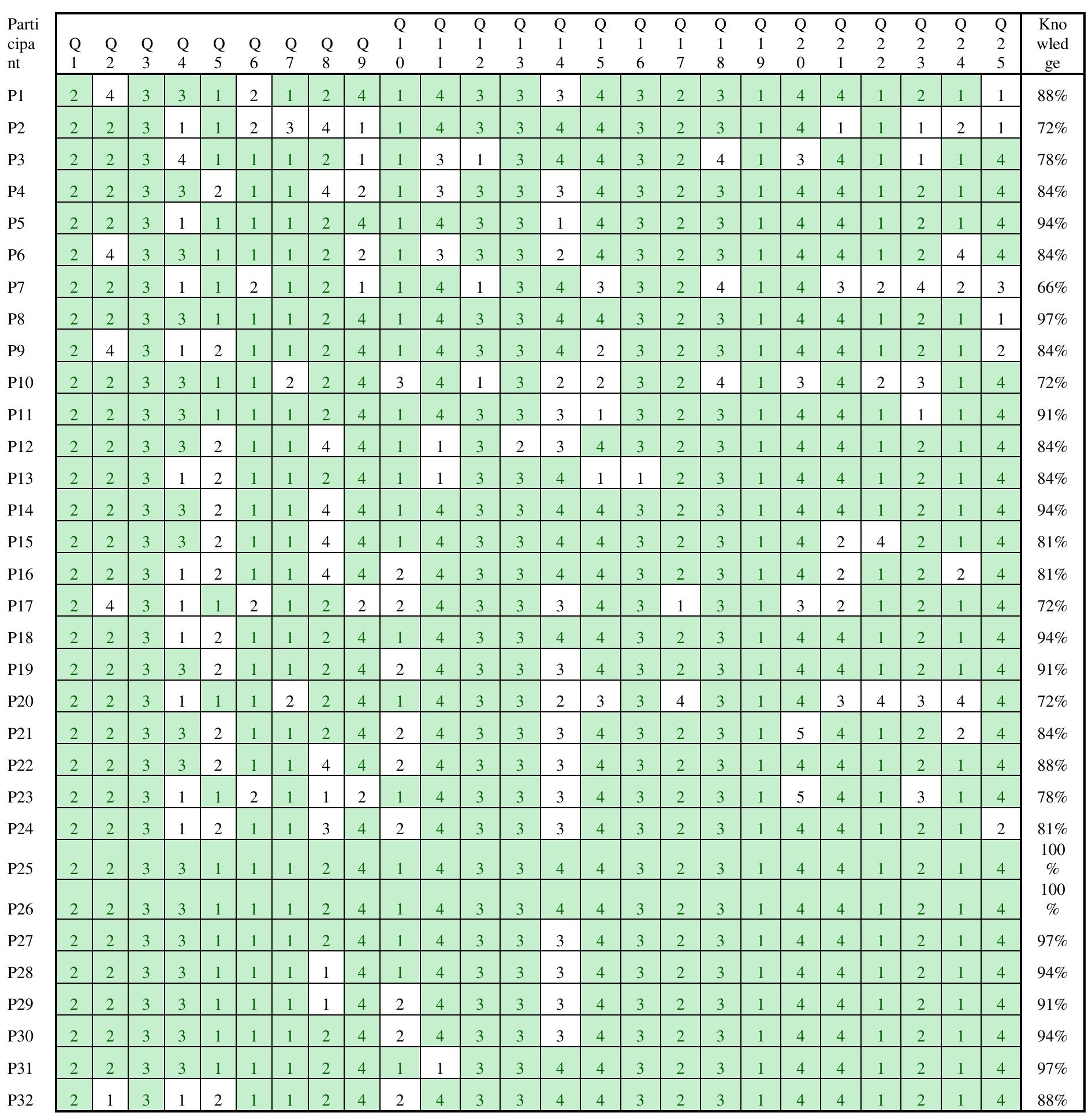
 ALYSSA SHAWNTAY WILLIAMS
ALYSSA SHAWNTAY WILLIAMS Edward de la Rey
Edward de la Rey
